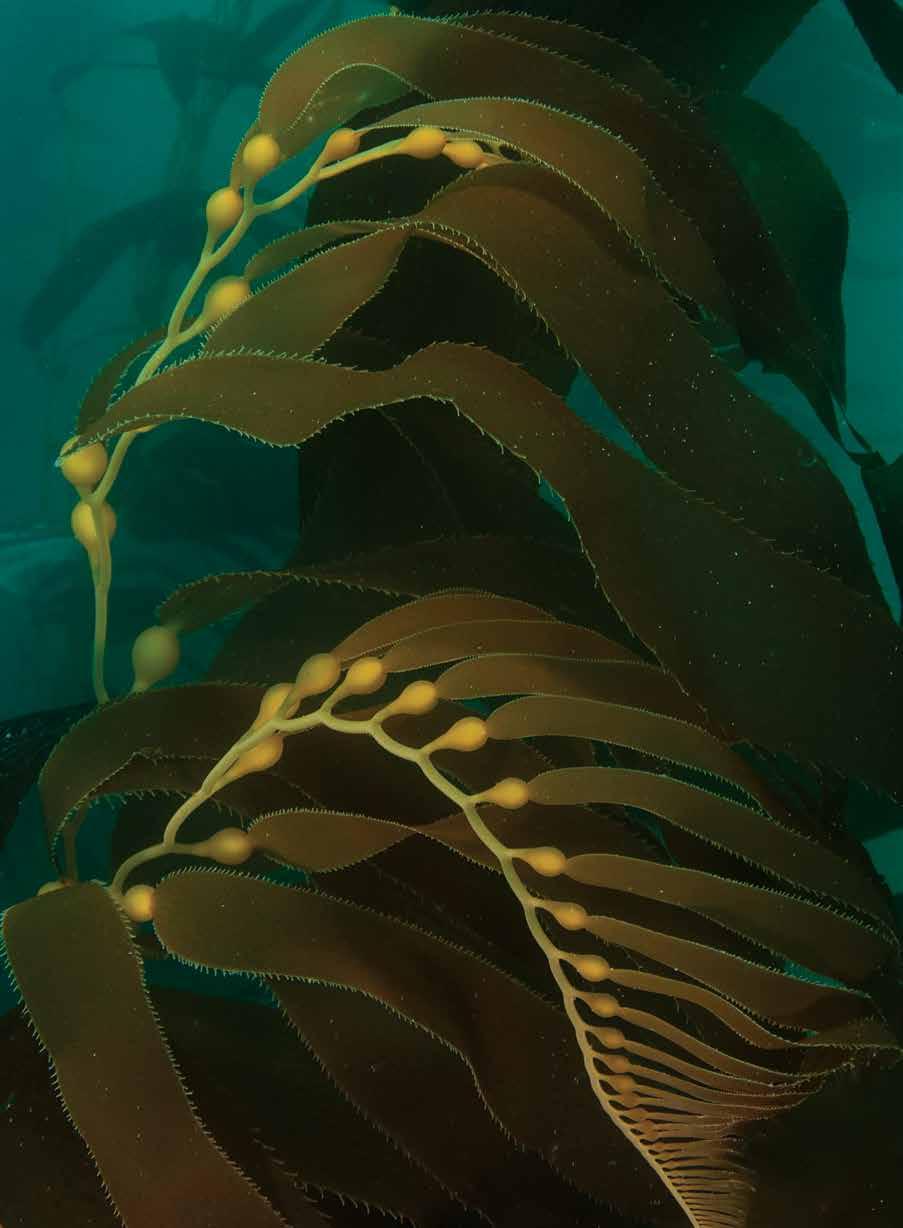
Season One
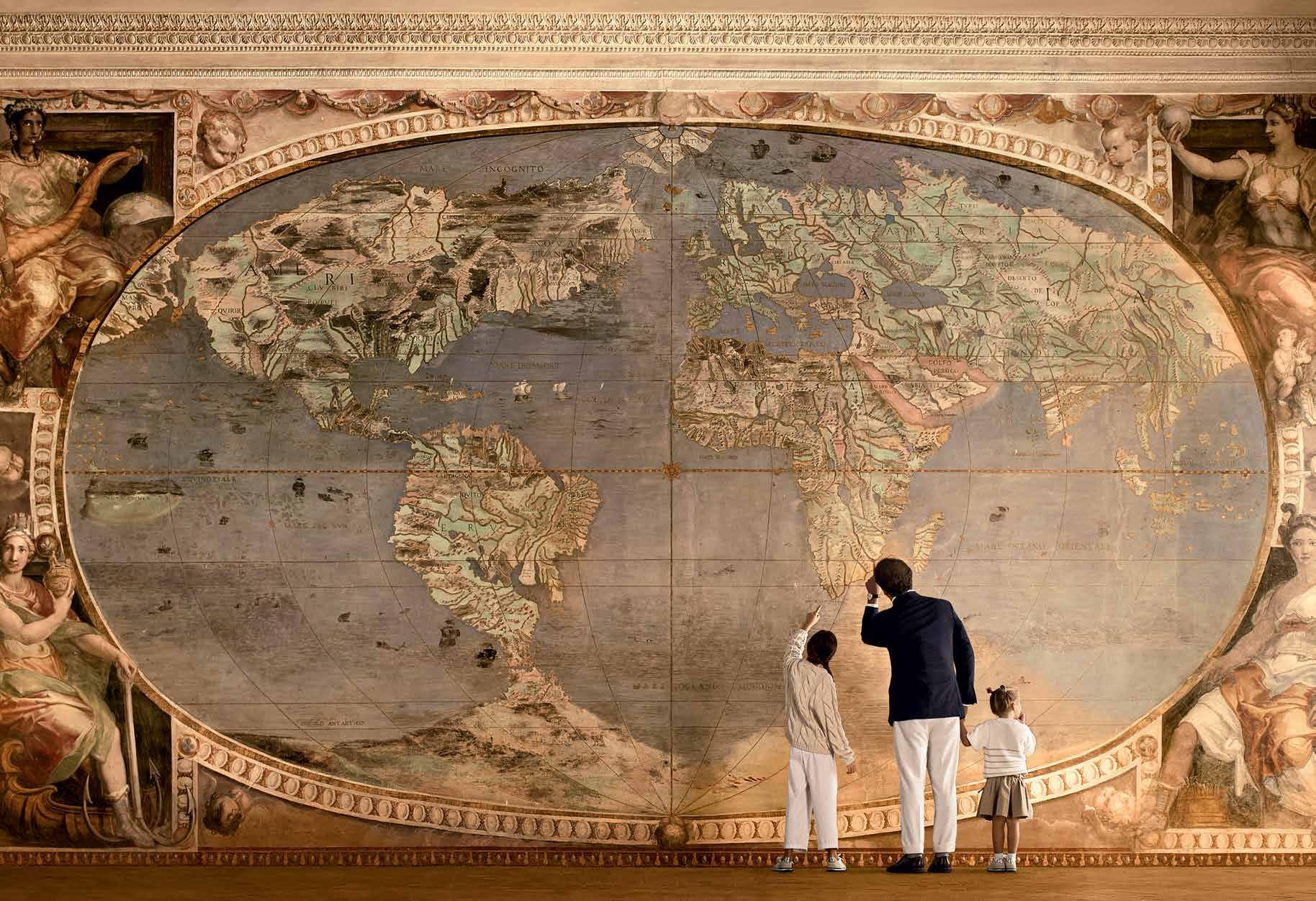

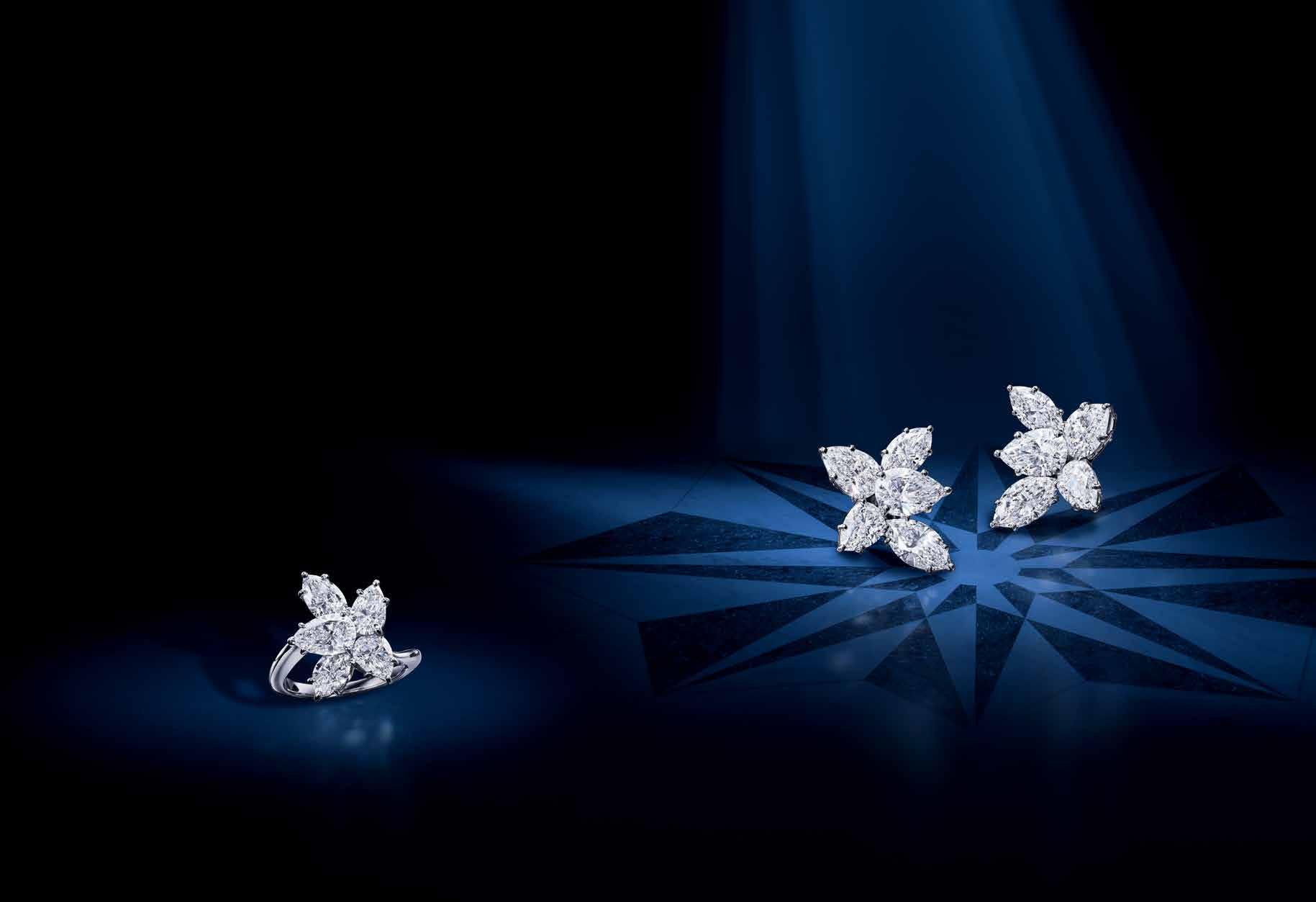

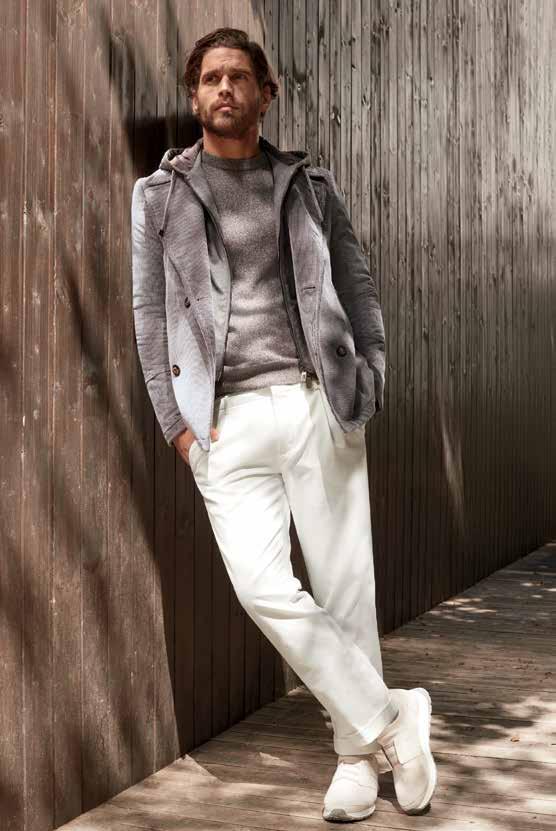
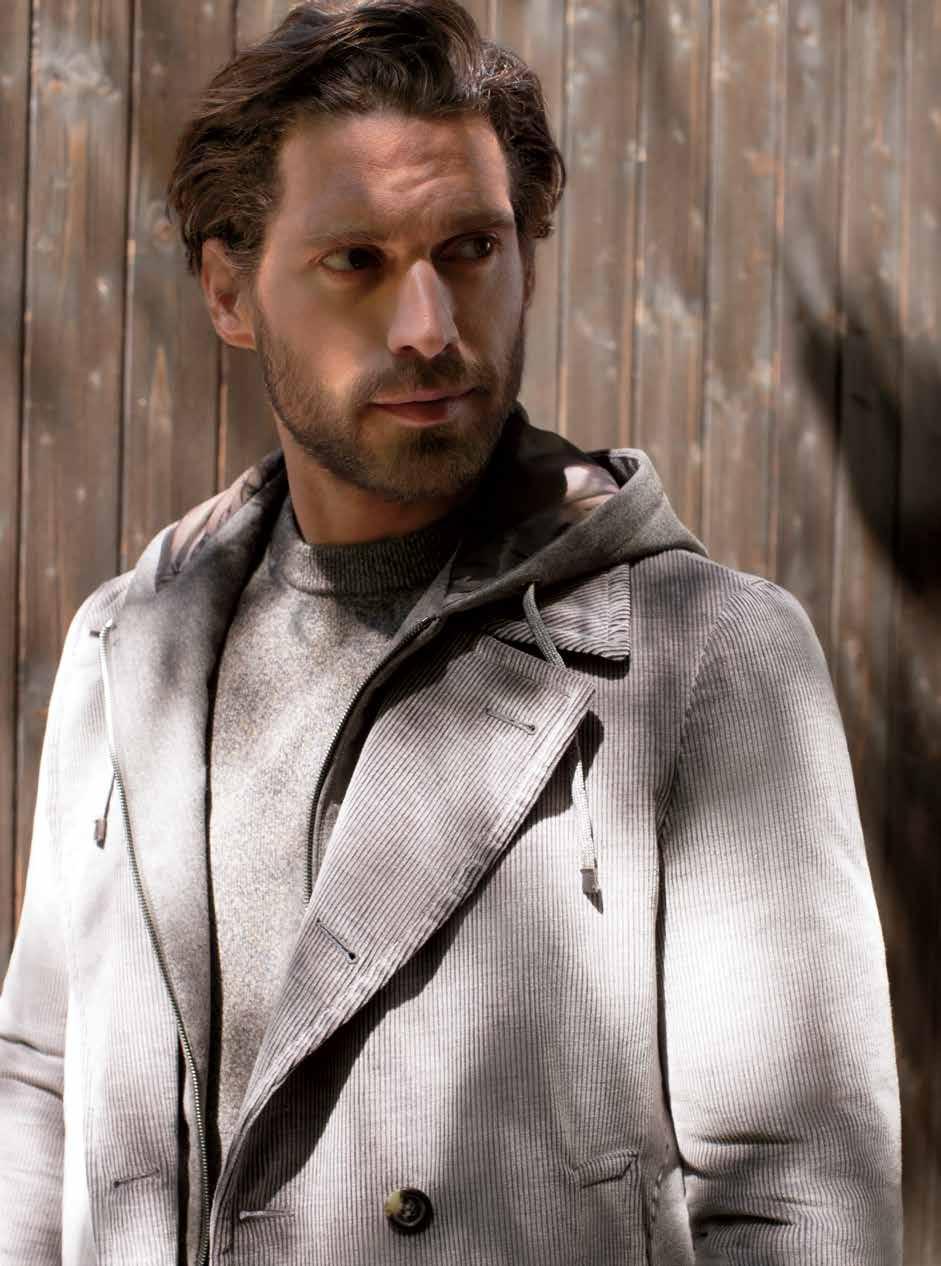
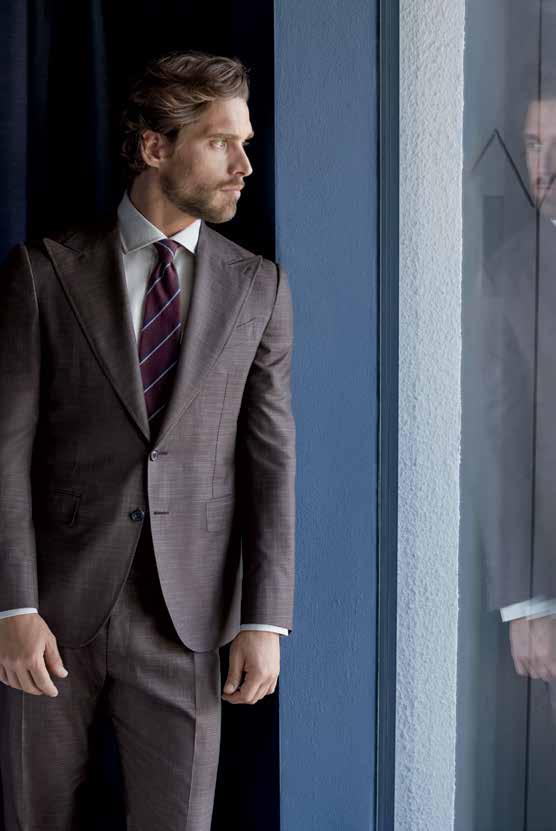



“
Besides the wonderful people with whom I work, one of the best parts about managing Hotel Casa del Mar is its Santa Monica Beach location.
… Each night is different, and every sunset comes with its own array of beautiful colors.”
—charlie lopez-quintana general manager at hotel casa del mar
We are proud to present Waves, the lifestyle media channel of Shutters on the Beach and Hotel Casa del Mar. Its stories are inspired by the allure, inspiration, and generational momentum of the ocean, Santa Monica, and Los Angeles. We invite you to dive into these pages, and then venture out to the beach and experience this spectacular location for yourself. Below, how two locals make the most of it.
FROM KLAUS MENNEKES, VICE PRESIDENT & MANAGING DIRECTOR:
“Since its opening, Shutters on the Beach has established itself as the embodiment of upscale Southern California beach lifestyle. Having spent most of my career in the United States managing luxury hotels in city centers like New York, Atlanta, and Chicago, where white gloves and elevator operators were de rigueur, I was surprised how quickly I adapted to the casual elegance that is Shutters on the Beach. From driving my convertible to and from the office to learning to inline skate out the back door of the hotel, or just cruising on my motorcycle through the canyons, I cannot imagine a better work life. The same has become true for our guests. Over the years, they have discovered that work and play can happily coexist, since Shutters lives a double life as both business hotel and beach getaway.”
FROM CHARLIE LOPEZ-QUINTANA, GENERAL MANAGER AT HOTEL CASA DEL MAR:
“From the Mediterranean Sea to the Persian Gulf to the Pacific Ocean, my entire life has been spent living and working near the water. To be able to call the California Coast my home for almost two decades makes me a fortunate man. Besides the wonderful people with whom I work, one of the best parts about managing Hotel Casa del Mar is its Santa Monica Beach location. The hotel’s location, quite literally on the sand, affords me ample opportunity to swim, run, and cycle along miles of bike paths. Everything I need to train for the next triathlon or even just reconnect with the water is right outside my door.
“Our location, interior design, restaurants, and friendly staff are the main attractions for our hotel guests and local patrons. The sunset viewing from our lobby is nothing short of spectacular, particularly during what we call Sunset Season, when the sun sets directly behind the hotel, from mid-October through February. Each night is different, and every sunset comes with its own array of beautiful colors. These nightly light shows provide an added bonus: It takes very little coaxing to get my wife and children to come for dinner.”
12
Tidings from ETC Hotels
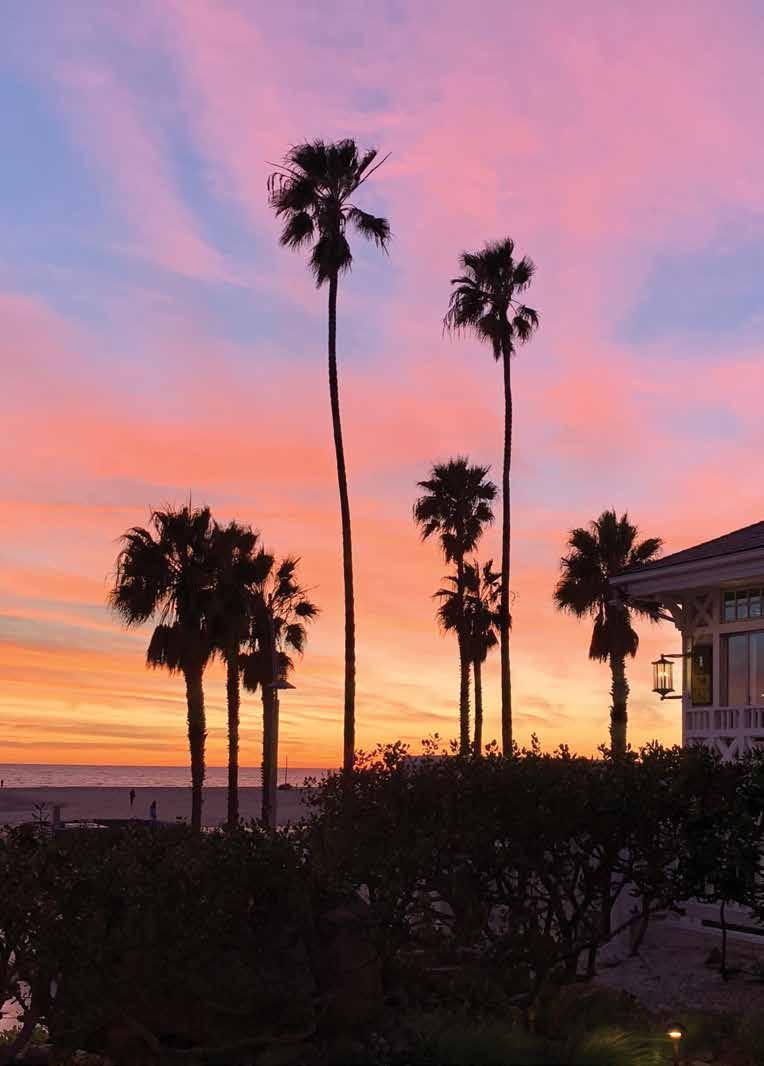
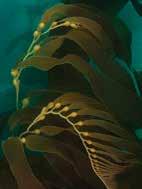
Giant kelp fronds floating in the Santa Monica Bay, photograph by Tom Boyd. In the past 100 years, 80 percent of the kelp forests in the bay have been lost, but local efforts are working to change that.
14 REGENERATION 22 How Murray Hidary Lets Music Lead Him 30 At Home With Amanda Chantal Bacon WELLSPRING 38 The Rainforests of the Sea 48 Sophia Moreno-Bunge’s Hometown Inspiration PEOPLE 58 Dealing Art with Chelsea Neman Nassib 64 The Masculin Féminin of Kenneth Nicholson 70 On Frank Gehry’s Local Influence 80 promotional Heart, Solomeo, and Brunello Cucinelli MOTIVATION 86 The Vanguard Perfumers of Los Angeles 96 Respecting the Tradition of Hollow Surfboards 102 Montalba Architects on Building for Headspace 108 Getting Lost Along the Southern California Coast FROM ETC HOTELS 116 On the Beat: Franck Savoy & Family 120 Partner: Diamond Foundry 122 Highlight: The Shutters Art Collection 124 Get to Know Shutters on the Beach 126 Get to Know Hotel Casa del Mar ABOUT THE COVER
Table of Contents
image by Vivian Kim
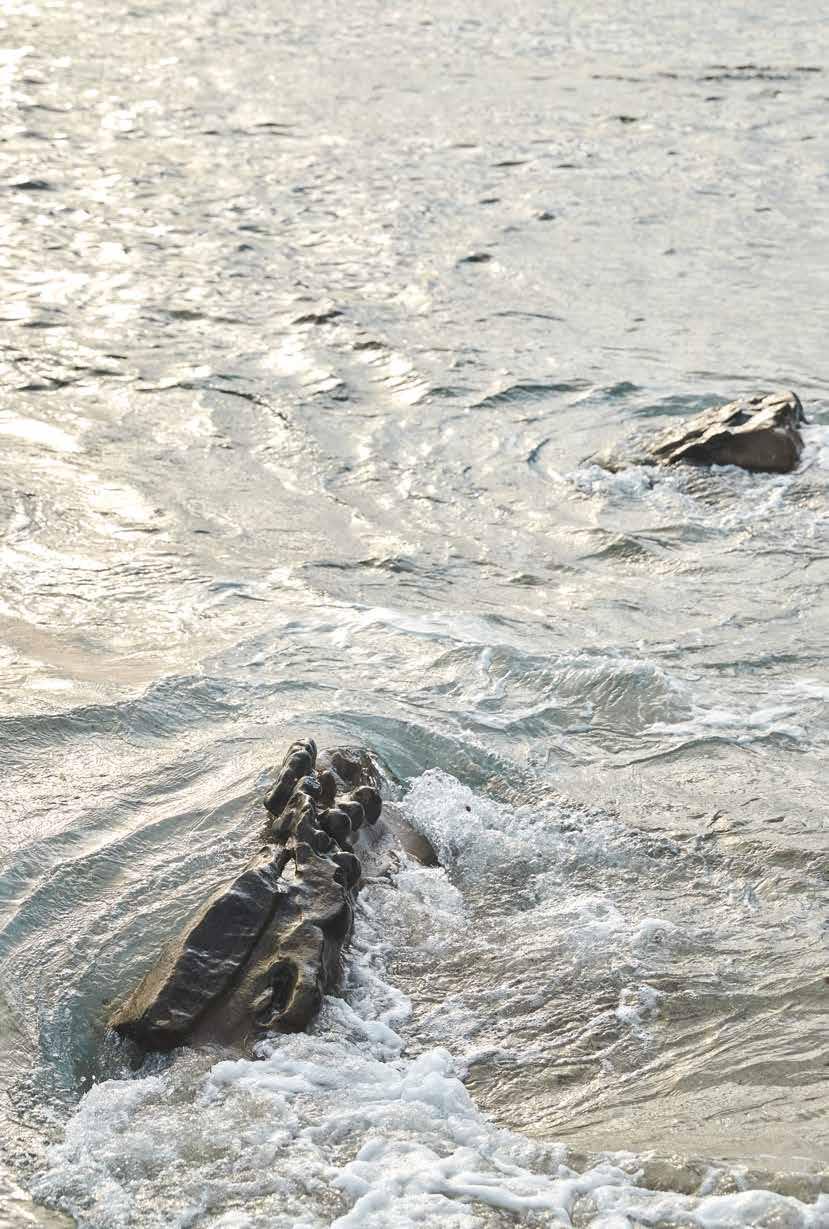
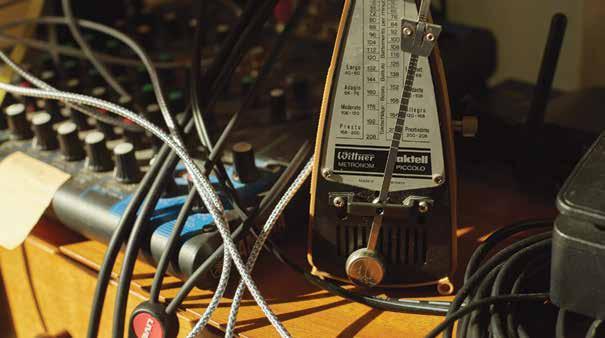
WAVES TV: MURRAY HIDARY
Follow composer, tech entrepreneur, and MindTravel founder Murray Hidary on a journey from home to beach to learn about his start in music and how nature inspires him.
Watch every episode of Waves, catch up on original stories, and encounter new seasonal content online.
waves. shuttersonthebeach. com waves. casadelmar. com
SOCIALIZE WITH SHUTTERS ON THE BEACH AND HOTEL CASA DEL MAR
Instagram @hotelcasadelmar @shuttersca
Facebook /CasadelMar /ShuttersontheBeach
16
Table of Contents Online
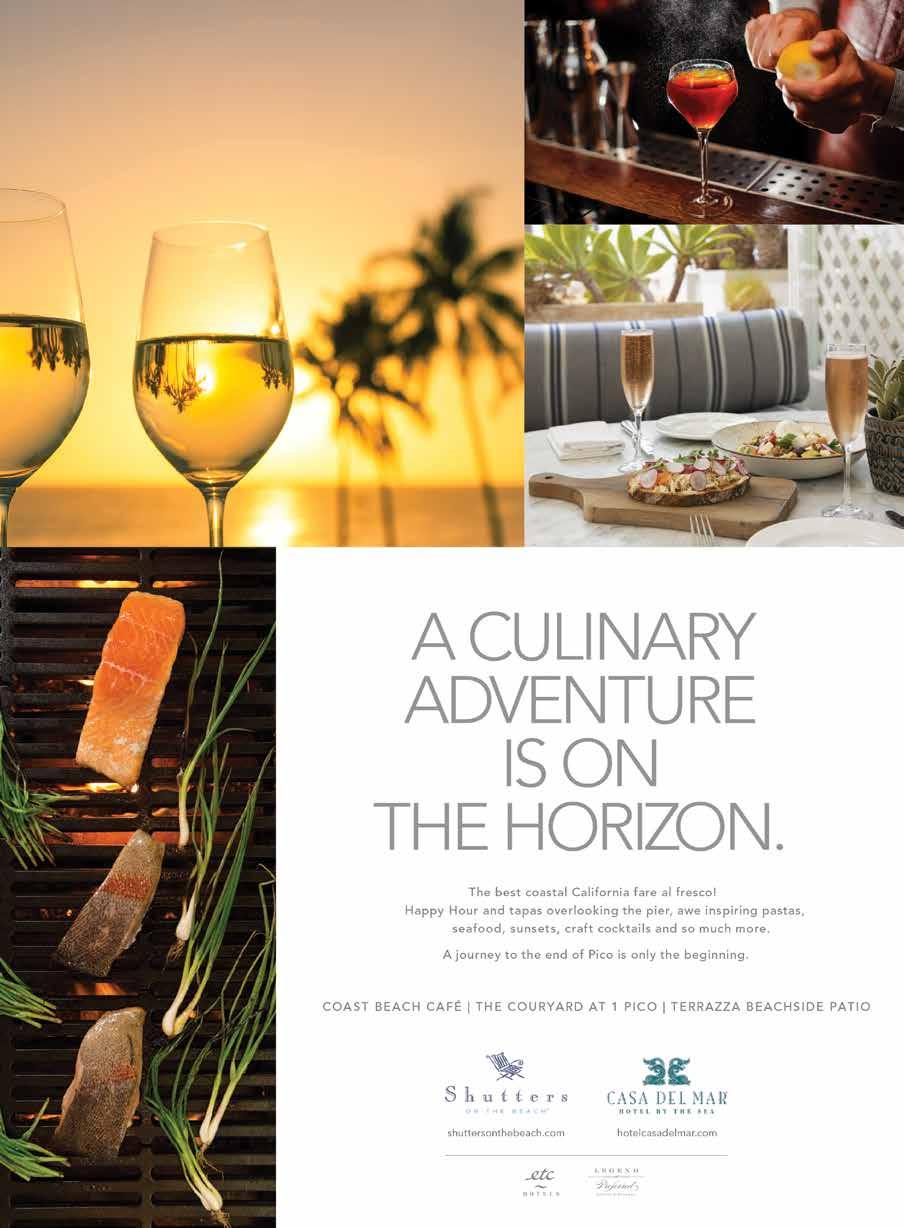
CEO & PUBLISHER
Jason Cutinella
CREATIVE DIRECTOR
Ara Laylo
NATIONAL EDITOR
Anna Harmon
EDITORIAL DIRECTOR
Matthew Dekneef
MANAGING EDITOR
Lauren McNally
ASSOCIATE EDITOR
Eunica Escalante
SENIOR PHOTOGRAPHER
John Hook
PHOTOGRAPHY EDITORS
Samantha Hook
Chris Rohrer
DESIGNER
Skye Yonamine
CREATIVE SERVICES
Marc Graser VP GLOBAL CONTENT
Shannon Fujimoto CREATIVE SERVICES MANAGER
Kaitlyn Ledzian ART & PRODUCTION MANAGER
Aja Toscano CREATIVE PRODUCER
Gerard Elmore LEAD PRODUCER
Shaneika Aguilar FILMMAKER
Taylor Kondo FASHION MARKETING COORDINATOR
OPERATIONS
Joe V. Bock CHIEF RELATIONSHIP OFFICER
Francine Naoko Beppu NETWORK STRATEGY DIRECTOR
Gary Payne VP ACCOUNTING ADVERTISING
Mike Wiley VP SALES mike@nmgnetwork.com
Phil LeRoy NATIONAL SALES DIRECTOR
Chelsea Tsuchida KEY ACCOUNTS & MARKETING MANAGER
Helen Chang MARKETING & ADVERTISING EXECUTIVE
Jackie Tu SALES ASSISTANT
Published by: Nella Media Group 36 N. Hotel St., Ste. A Honolulu, HI 96817
©2020 by Nella Media Group, LLC. Contents of Waves are protected by copyright and may not be reproduced without the expressed written consent of the publisher. Waves assumes no liability for products or services advertised herein. Waves is a semiannual lifestyle publication of ETC Hotels.
masthead 18 image courtesy of Isa Isa
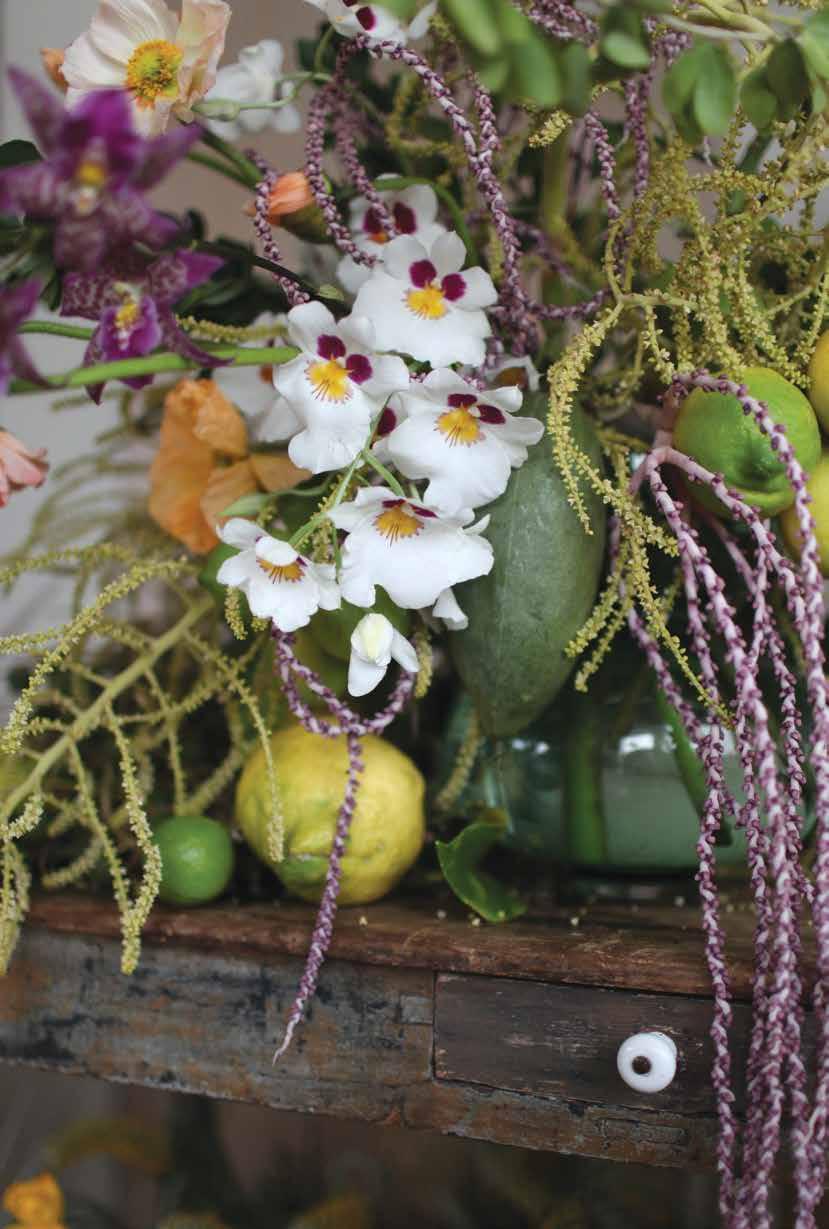
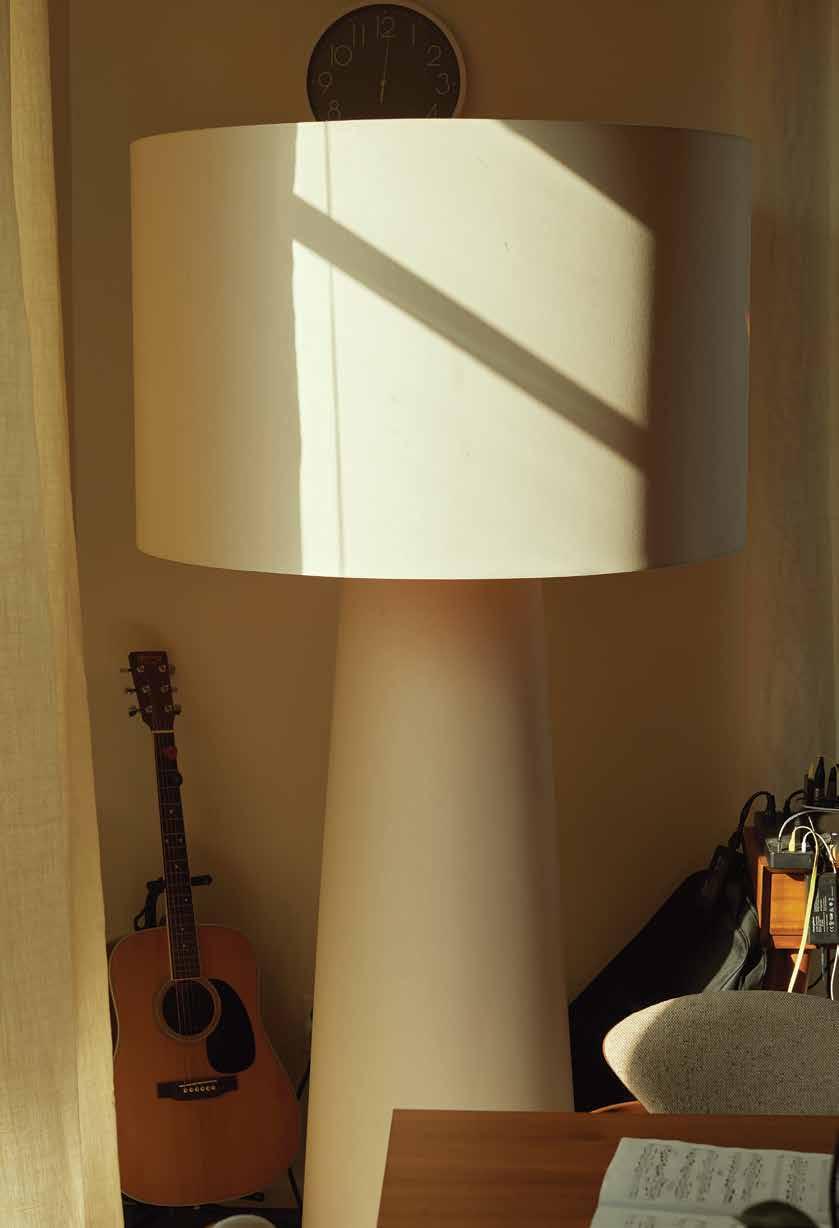 image
by Cody James
image
by Cody James
The early morning is when , after my dream state, my mind has all these ideas that come to the surface, and music really enhances that.
—Murray Hidary
REGENERATION
Composer, tech entrepreneur, and MindTravel
founder Murray Hidary lets music lead him.
In his 20s, Murray Hidary was immersed in the tech boom of the 1990s, having cofounded a thriving Internet-related company with his brother. He also had a piano in his office and, every week, was visited by shakuhachi (bamboo flute) master Ronnie Nyogetsu Seldin for instruction. “I would play usually at the end of these crazy startup tech days that are just so insane, dealing with things on such a rapid pace, putting fires out,” he says. “And it really helped to reduce my stress and balance me and reduce my anxiety. It just really reset me every night.”
Hidary grew up in an Orthodox Jewish community in Brooklyn. His parents signed him up for cello lessons when he was 5 years old and piano when he was 6. “Even at that young age, when my feet didn’t even reach the floor, just dangling, I would sit and kind of play around with melodies and harmonies,” he says. “I was a very shy kid, so it was like a voice within myself that it was able to unlock.” When Hidary headed to college, his boundless curiosity led him to sign up for classes ranging from Japanese poetry to astronomy. But he felt
like just another number in a lecture hall, so after a few months, he opted to see the world instead. During a year of travels, he spent time in India, Southeast Asia, lived in Zen monasteries, and absorbed Eastern philosophy. He began composing in earnest, fusing his Western classical training with the thinking and music he was encountering.
This fusion of East and West manifests in his piano compositions in open fifths and pentatonic modalities as well as patterns that are “almost mantra-like.” He also mimics the emotional cries of the shakuhachi. “There’s a wonderful saying about the bamboo flute in Japan,” says Hidary, who first encountered the instrument in Kyoto and studied it for decades. “The saying is that the kind of crying sound the flute makes is the bamboo yearning to go back to the ground from where it was plucked.”
Hidary continued to develop his musical voice after graduating with a music degree and heading tech startups into the early 2000s. But with the sudden loss of his sister on a trip, the tectonic plates of his world
With the Tide
22
Natural settings inspire Murray Hidary, in life and in musical composition. To share this with listeners, he performed his first “silent” piano experience on the beach behind Hotel Casa del Mar and Shutters on the Beach.
images by Cody James text by Anna Harmon

shifted. Having witnessed the accident that caused her death, Hidary had to cope with losing someone he loved and also the trauma of what he experienced. “Music is the language of emotion. It picks up where words leave off,” he says. “When we don’t have the words for something, we turn to music. … It’s a multidimensional language, and our emotions are multidimensional and layered.”
When he saw how music helped him process his grief and trauma, he came to understand that “you don’t get over something, you only go through it. And the way to get through it is to confront it and to deal with what you’re feeling.” This processing left him “cracked wide open” and with the realization that he had a higher purpose. If music did that for me, he thought, I wonder what it can do for others.
To try this concept, he played improvisational piano at his Los Angeles home for around 40 acquaintances. When he saw how it touched people, he decided to follow the music. Hidary extracted himself from various companies and permanently relocated from New York, which he found too distracting,
to his home in L.A. He practiced piano obsessively and held more performances, which he calls experiences, eventually hosting them at various theaters. But he wanted to bring the experience outdoors, since nature is such an inspiration for him. Santa Monica Beach was one of the first places that came to mind. While he normally plays a Steinway piano, he knew that beach acoustics and elements wouldn’t cooperate. This is when he thought of the MindTravel “silent” piano experience—he would play live on an electronic keyboard onsite and livestream it to the audience via headphones. The event took place on the beach right behind Hotel Casa del Mar and Shutters on the Beach.
MindTravel, on a normal year, includes outdoor piano performances as well as guided walks, hikes, and underwater meditations. (Until the coronavirus pandemic subsides, events are hosted virtually, and MindTravel is also offering recordings for self-led experiences.) “It’s this beautiful balance of the individual and the communal,” Hidary says. People will bring chairs and
24

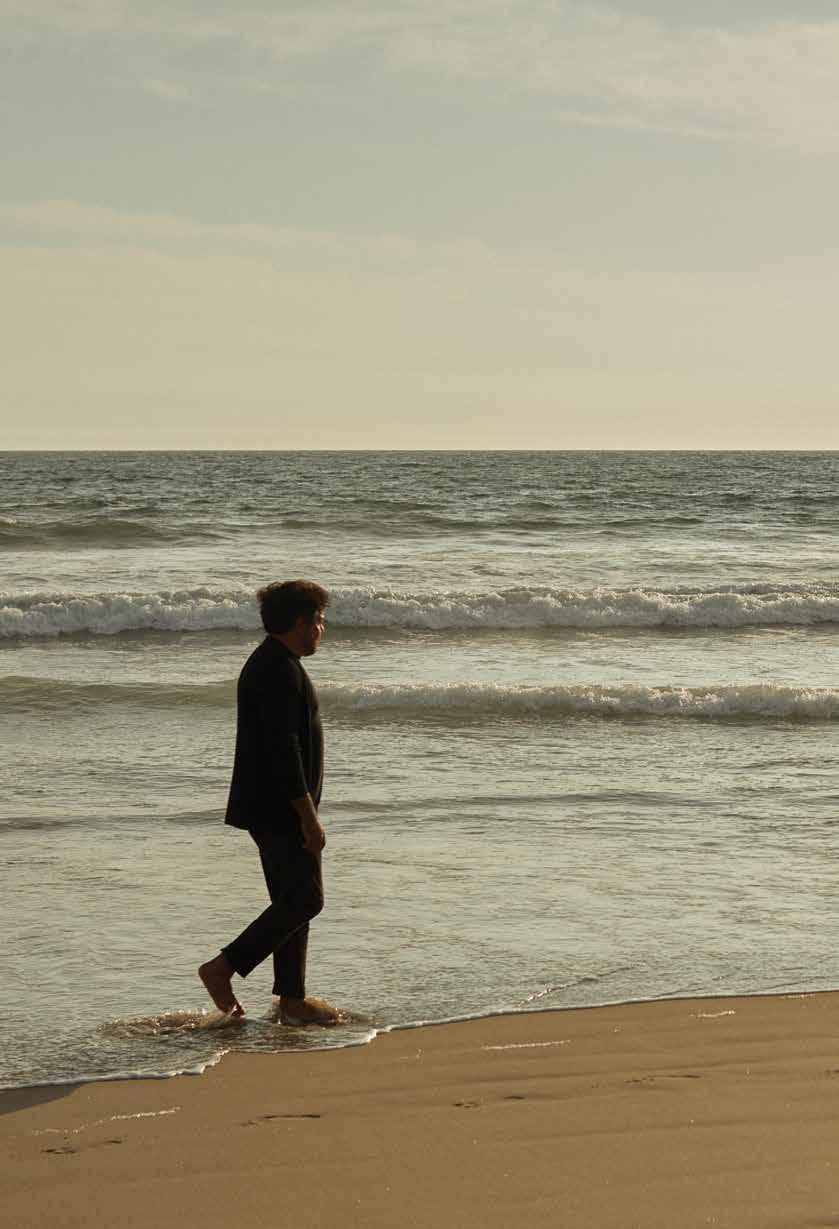

blankets to a beachside piano experience, but then walk along the sand or enter the water, “taking in nature, the ocean, the beauty, and having their own personal intimate moment, and then coming back to the group.”
For his piano performances, Hidary improvises, allowing internal and the external factors to influence him. “It could be just the way I’m feeling that day,” he says. “But I remember a concert a couple of years ago in Central Park, where a storm started rolling in in the middle of the concert. And I just, I was staring, looking at these clouds coming in, and I could even see almost some lightning in a distance, and I started to score it live. And I had the liberty to do that. … It was a soundtrack to what was happening.”
HOW MURRAY HIDARY INTEGRATES MUSIC INTO DAILY LIFE
MORNING : “I try to start each day with some intention and some space, even if that’s just lying in bed, listening to a recording.” He finds that early morning after his dream state is when ideas start surfacing, which
music enhances. “Take that time for some meditation, reflection, to just see what emerges and create possibility at the beginning of your day,” he says.
DAY : Hidary tends to take a walk as the sun goes down. “It’s just a beautiful time of day to take in the sunset and listen to a recording,” Hidary says. (MindTravel offers a range of such recordings.) “And it’s very connective to nature, the healing power of nature.” According to Hidary, walking is one of the easiest and best things we can do for ourselves physically and mentally, and it also increases creativity. “Einstein went on a daily walk, and that’s where he had his thought experiments,” Hidary says. “By the way, he also turned to music. He was an amateur violinist … when he got stuck on the equations and in his thinking, he would just take to violin and start playing, and it would open up new pathways.”
NIGHT : When Hidary is ready for bed, he puts on another musical recording, this one intended for rest. “It really just helps me transition into a beautiful night’s sleep,” he says.
28
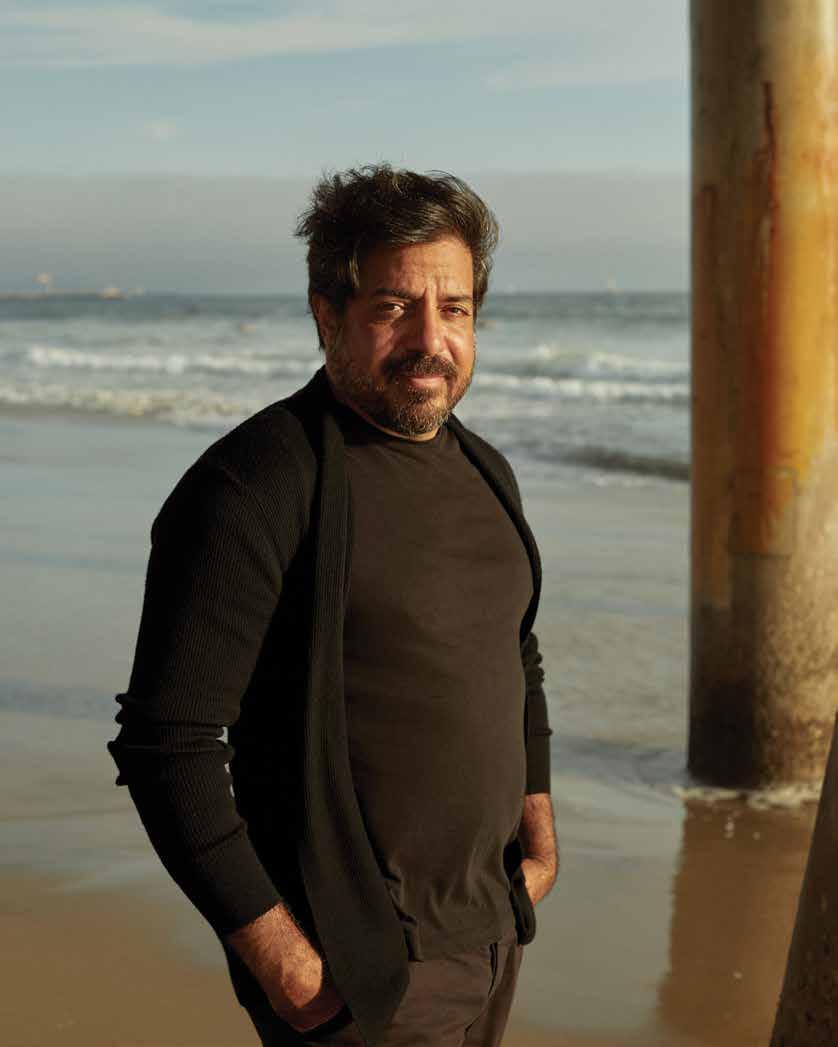
WATCH NOW IN-ROOM AND ONLINE WAVES.SHUTTERSONTHEBEACH.COM WAVES.CASADELMAR.COM making season 01 WITH THE TIDE MURRAY HIDARY produced by nmg network
The founder of Moon Juice shares behind-thescenes inspiration, from Rustic Canyon to Rio de Janeiro.
When I reach Amanda Chantal Bacon, the 36-year-old founder of Moon Juice, Los Angeles’s most renowned space-age apothecary, she, like the rest of us, is at home. “Can I call you back in 30?” she asks. “I’m just in the middle of putting the baby down for a nap.” Juggling a company with nearly 100 employees, an 8-year-old, and a 10-month-old is no easy feat. But Bacon, a self-professed homebody, seems to take it in stride.
Rustic Canyon, the neighborhood where Bacon has lived for the last six years, is barely on the map. Just north of Santa Monica, tucked under the Pacific Palisades, it’s full of eucalyptus trees and giant redwoods and has drawn vague comparisons to northern California. “I spend a lot of time traveling to Big Sur and Marin, and I had never seen an area like this in the city,” she says. A narrow creek runs between the houses, perfect for toddler-friendly excursions. “You can go down and find tadpoles; it has its own little microclimate.”
Bacon is a born-and-raised New Yorker, though after working in various fine-dining kitchens in Europe and South America—and
a brief stint as a food reporter for the Los Angeles Times—she opened the first Moon Juice shop in Venice on Rose Avenue in 2011. Back then, she says, “Wellness was not cool.” But Venice’s knack for adopting New Age trends made it the perfect testing ground for the novel juice bar she had in mind. “If [Moon Juice] was going to work anywhere, it would be Venice,” she reasoned.
With her silky tresses and earthy glow, Bacon exudes a serene glamor that feels at home in L.A. Yet much of her culinary growth has taken place outside the city. During frequent food-focused excursions abroad, she has spent countless hours wandering through farmers markets, studying the use of whole fruits, fresh herbs, and other local remedies.
On a two-week trip to Indonesia in 2018, her diet consisted almost entirely of fruit. “My favorite was durian,” she quips of the spiky, sharp-smelling fruit, which required plastic gloves to handle. Outside the temples, she frequented the fruit stands, whose vendors cut up heaping portions of dragon fruit and mangosteen to eat fresh on the curb. “I rarely eat in restaurants when I travel,” she explains.
At Home With Amanda
Chantal Bacon
30
text
images courtesy
illustrations by
For Amanda Chantal Bacon, the founder of Moon Juice, “It’s always good to tune into simple remedies.”
by Alex Schechter
of
Les Aperizes and Moon Juice
Lauren Trangmar


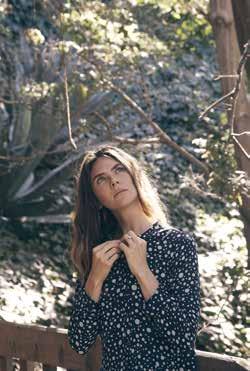
32

Back home, Angelenos have embraced Bacon’s international buffet of holistic remedies. Plant-based cuisine has become its own micro tourist attraction. Items like Moon Juice’s Blue Matcha Pearl latte and Silver Strawberry (a strawberry-infused almond milk containing colloidal silver) fly off the shelves; in 2017, a K-pop star posted the latter on Instagram, and international foot traffic to the shop nearly doubled. “I get it,” she says. “It’s pink. It’s beautiful. It turns out the whole world loves strawberry.”
Rarely glimpsed in her three shops, Bacon works quietly behind the scenes while playing the part of lifestyle guru for the collagenthirsty masses. In her Rustic Canyon home, the cupboards are stocked with Moon Juice Magnesi-Om supplements and SuperYou adaptogenic capsules. Yet, for a woman who champions obscure ingredients like schisandra berry and reishi mushroom, and exotic remedies like Moon Juice’s Sex Dust, Bacon’s connection to wellness is surprisingly straightforward. Inspired by Rio de Janeiro’s wholesome açai bowls and the fields of turmeric and ginger she witnessed growing in Indonesia, her at-home regimen consists of seasonal produce, fresh herbs and spices, and not much else.
“India and Italy both have a culture of using fresh herbs in food,” she says. “It’s very much steeped in the culture. At the same time, it’s medicinal.” Spending time in such places has informed Bacon’s approach to health—namely, that enjoyable food and nutrition don’t have to be mutually exclusive. “It’s always good to tune into simple remedies,” she says.
34

Owned by a French family, where everything is organic. “They have a glutenfree croissant that’s amazing. The location was designed by Commune, and it’s just a really pretty place. Also check out their chestnut-flour bread.”
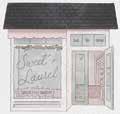
Chelsea Neman Nassib introduces emerging artists to a new world of collectors.
For Chelsea Neman Nassib, it began with what felt like a setback. In the early 2010s, she had done what young artists are supposed to do: gone to art school, graduated, begun a studio practice. She was participating in shows and even selling some of her paintings. But, she says, “even with moderate success, I couldn’t see a clear path forward. To become successful felt too much like luck of the draw.”
So Nassib started working as an interior designer, applying her aesthetic to spaces instead of canvases. To her surprise, she found a new client base for her art: young homeowners who wanted something nicer to hang on their walls than the mass-produced stuff from Ikea, but who weren’t ready for the full gallery experience. She saw an opportunity. “I started to think there was a win-win situation between emerging artists who needed support and collectors who weren’t participating in the art world to come together,” she says.
In 2012, Nassib launched Tappan Collective, a website connecting fledgling artists to buyers who want something beautiful and
unique but aren’t ready to commit significant funds. The site offers paintings, drawings, photographs, prints, even sculptures and mixed-media works. Potential collectors can read up on backgrounds and biographies of artists and sort by medium, palette, and mood. Each piece comes with a certificate of authenticity to establish provenance and chain of ownership.
These days, we’re surrounded by directto-consumer success stories like Everlane and Warby Parker. But at the time, Tappan’s digital-first strategy was a risky one. “The art world said that [collectors] would never go online,” Nassib says.
It was very wrong. In 2018, Forbes named Nassib among its 30 Under 30 in Art and Style, including her on a list of young entrepreneurs doing industry-changing work. Artists that have been part of Tappan include Jonni Cheatwood, Eric Chakeen, Heather Day, and Dean Levin.
Nassib thinks of her business as a sort of finishing school for young artists that teaches business practicalities they don’t
58
The Art Dealer text by Zan Romanoff images courtesy of Tappan Collective
Chelsea Neman Nassib at Tappan Collective’s space in Los Angeles.
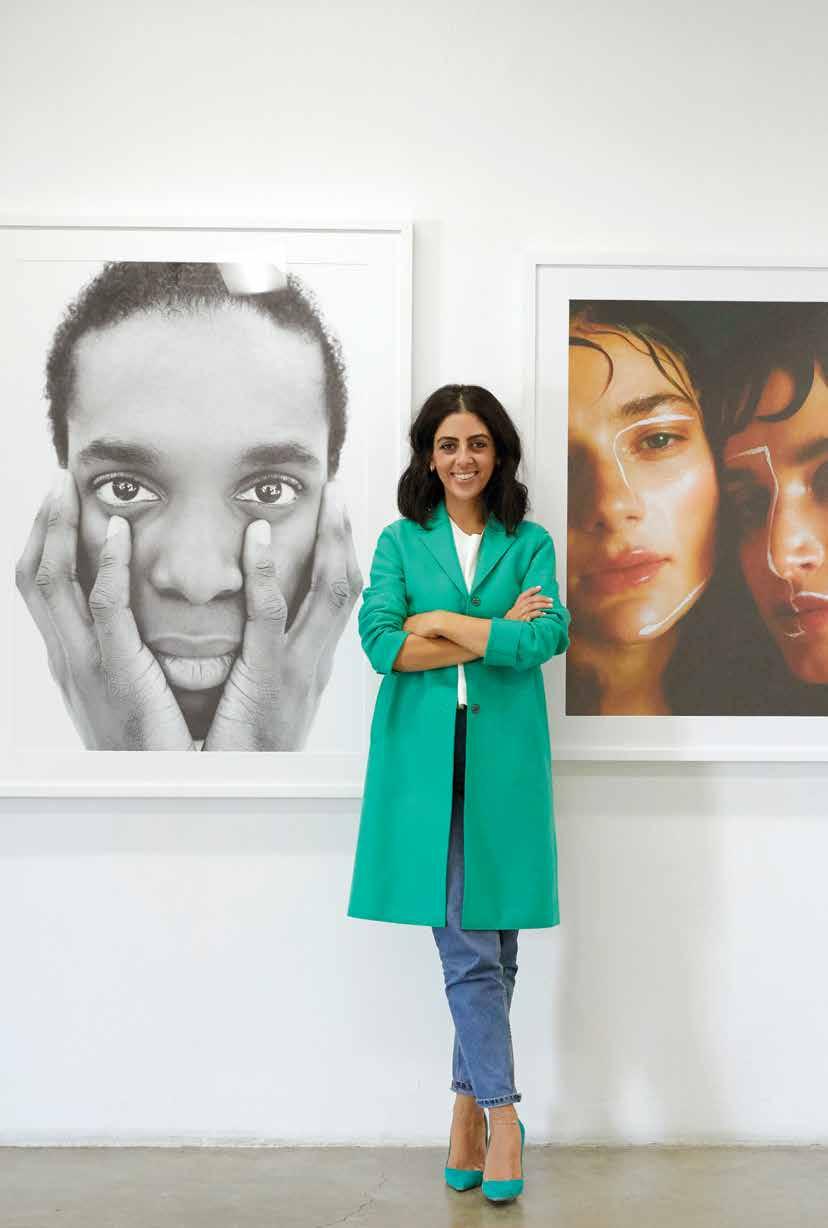


learn while they’re focusing on vision and technique in graduate programs. “We help them with pricing their work, expectations, professionalism, keeping records,” she says. ‘The different things you need to sustain your studio practice. We like to think of ourselves as the marketing, sales, operational part of it, so they can focus more on building relationships in their communities and on making their work.”
As someone who once struggled to make a living as an artist, Nassib knows how meaningful that support can be. Seeing artists succeed is one of the things that keeps her excited about her work with Tappan.
“Very early on, one of our artists got a check,” she says. “They wrote an email saying, ‘Oh my God, this was so amazing. I was going to stop making because it’s too hard. And now with this check I can keep going.’” The artist, Evan Robarts, went on to the Hermes Collection residency in Paris and a solo exhibition at The Hole in New York City. “That’s like, the dream, right?” Nassib says.
Like many digital-first companies, Tappan has since opened a brick-and-mortar showroom in Los Angeles, where it has also hosted artists residencies. While L.A. might seem like a counterintuitive choice for an art-world entrepreneur, for Nassib, it felt like the only option. “I’m from L.A.,” she says. “There’s a lot more physical space, but there’s also a lot more mental space. I find that people in L.A. are more open to new ways of doing things.”
Nassib is also mother of two young children. While parenthood has made her busier than ever, she thinks it has also made her a better leader. The one thing she has had to give up is painting, but that’s OK for now, she says. “I like to think that Tappan is my art piece.”
62
A photograph of Kirsten Dunst by Gia Coppola, a featured artist of Tappan Collective. On the previous spread is James Perkins in his studio (left) and artwork by Tadahiro Gunji (right), also Tappan Collective featured artists.
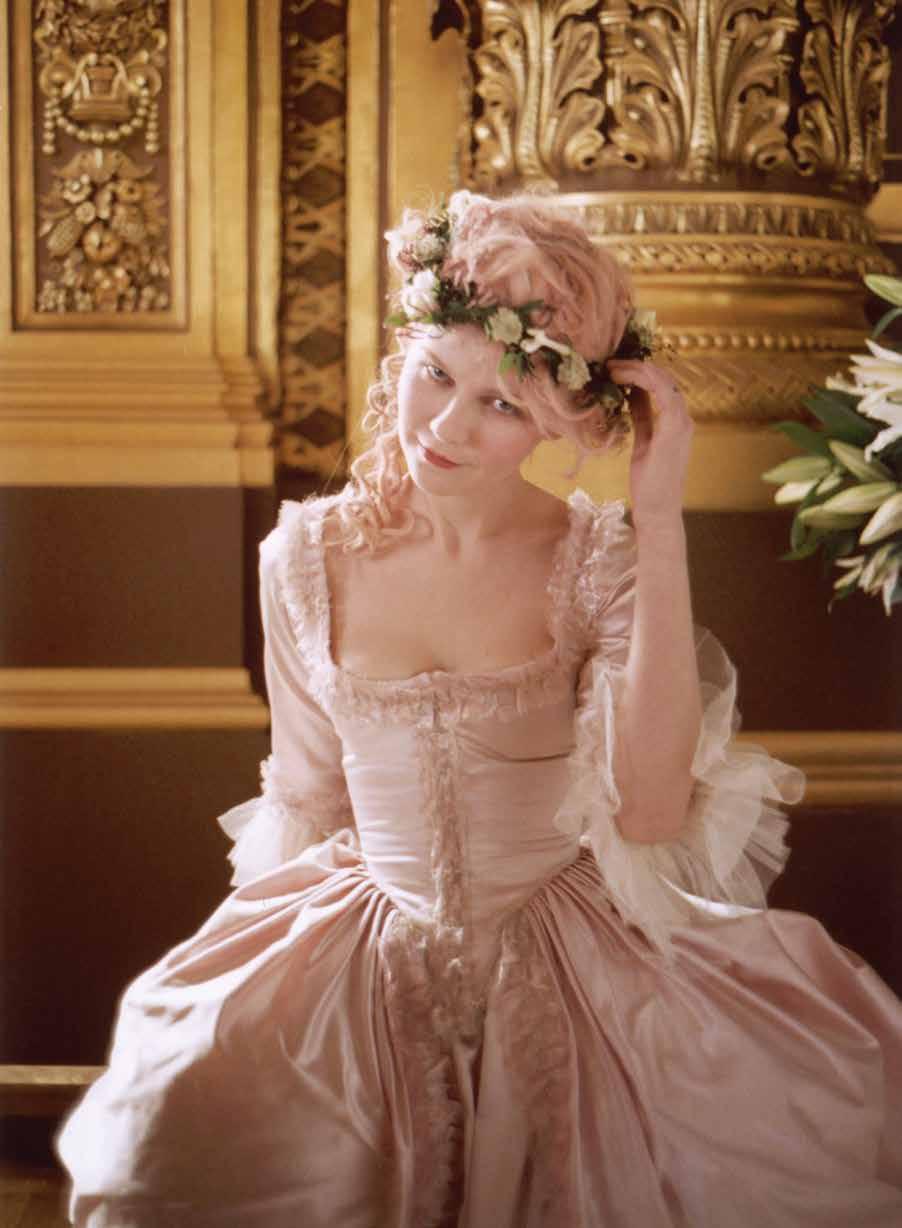
Fashion designer Kenneth Nicholson eschews rigid notions of masculinity in favor of a more romantic approach.
Kenneth Nicholson has a penchant for romanticizing life’s minutiae. Whether it’s the mismatched patterns of his grandmother’s living room, as referenced in his fall 2020 collection “From Grandma’s Couch,” or a simple bookmark (currently, a slip of silk earmarking his place in Ta-Nehisi Coates’s Between the World and Me), nothing escapes his rose-tinted Midas touch. So it’s no surprise that the Los Angeles-based fashion designer’s eponymous label is an amalgamation of life’s finer things: lace and velvet and silk and linen. His simple, elegant silhouettes drape the form and bestow an air of nonchalance.
Yet the 37-year-old’s designs are more than just pretty things to behold. Underlying his fondness for the refined is a striking intuition for the potential of menswear. Nicholson, with his talent for melding the traditional with the experimental, is part of the new guard shepherding the future of the industry.
Take his debut collection, “Maritime Man.” Its strong lines and military details were influenced by Nicholson’s four-year
stint in the U.S. Navy upon graduating college, to which he credits much of his self-discipline. Despite this traditionally masculine inspiration, the collection’s billowy silhouettes and use of organic fabrics point to his burgeoning approach to menswear. Or consider his spring 2019 collection “Lover from the Bath.” Its opening ensemble of a full-length, linen tunic and tights brings to mind that iconic scene of Colin Firth emerging from the lake as Mr. Darcy. The rest of the collection is equally as romantic, the designs imbuing his male models, mostly people of color, with a certain softness society so rarely affords to Black men.
Nicholson has always had a designer’s eye. Growing up in Houston, he experimented with dressing differently than his peers, preferring thrift stores over fast fashion. By middle school, he was making his own clothes with a sewing machine his mother gifted him. His freshman year of high school, he designed a full-blown collection for the talent show. The lineup of 35 looks, an impressive feat for any designer but even more for a 14-year-old, helped the young
64
Fashion designer Kenneth Nicholson self-styled in his own creations. “I want people, regardless of how they identify, to be able to come into the Nicholson space and feel like there is something for them,” Nicholson says.
Masculin Féminin text by Eunica Escalante
images by Sam Muller

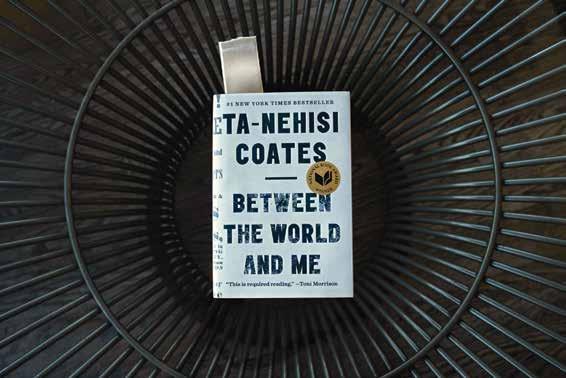
66
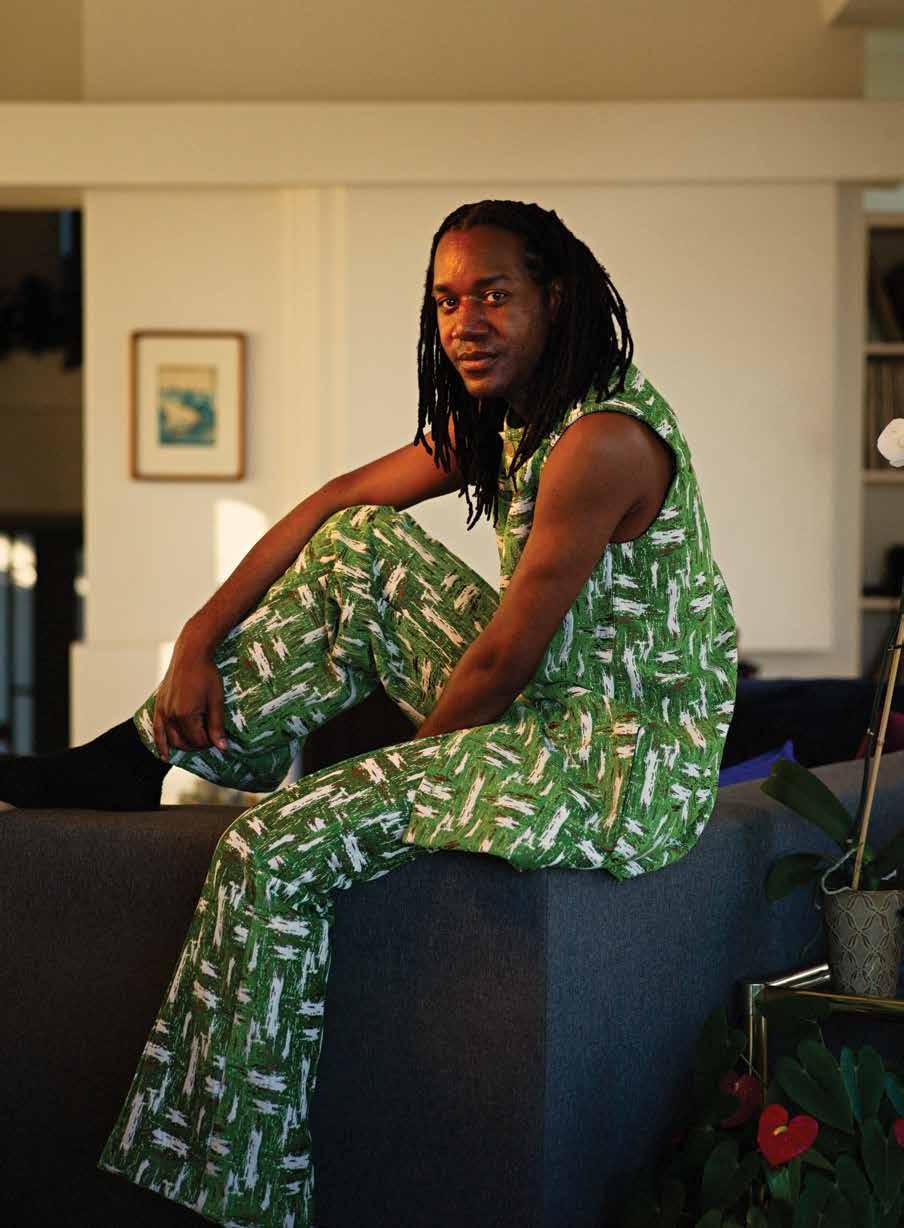
Nicholson exercise his artistic sensibilities. It also allowed him to show a part of himself that others may not have had access to otherwise. “As an artist, you have these moments in life where you come to the fact that you don’t see the world as everybody else does, and sometimes your peers can ostracize you for that,” Nicholson says.
Inclusivity is the through line of Nicholson’s work, and he hopes that his approach to menswear ushers others into their own, unapologetic sense of self. Since debuting his label in 2016, Nicholson has quietly garnered a following. His designs have dressed the likes of actor Jaden Smith and musician Lil Nas X, both of whom embrace fluidity in gender expression. Early in 2020, the Council of Fashion Designers of America nominated Nicholson as the American Emerging Designer of the Year, an honor signaling Nicholson’s place among the vanguard of menswear.
Through his designs, he brushes off traditional notions of masculinity in favor of a more fluid approach. Far from the structured suits and streetwear-focused ensembles that have characterized men’s fashion, Nicholson’s work taps into the social metamorphosis of recent years, eschewing outdated gender identities for more fluid concepts of expression. And contrary to other luxury designers, Nicholson is not cashing in on a “fashion has no gender”
trend. Beyond dressing his models in more feminine designs, Nicholson attends to the nuances of the male form. Trousers and dress shirts, usually tailored snugly, are long and loose. Meanwhile, his proclivity for details like ruffled lace or pops of silk leave his models decorated like 17th century royalty. “I want people, regardless of how they identify, to be able to come into the Nicholson space and feel like there is something for them,” he says, “because that’s what I feel like my life is.”
Despite his growing success, Nicholson remains conscious of the industry’s tendency to stereotype Black designers. Though parts of Nicholson’s designs do draw from specific Black experiences, such as the Sunday church mood of “From Grandma’s Couch,” he is careful to note that the traditions he pulls inspiration from aren’t just the ones that society has stereotyped as Black.
“When I’m talking about Black tradition, I’m thinking about intellectual and artistic contributions—anything from jazz, rock, history, culinary, philosophical,” he says. “And for us to have created all of those things, even in the face of a country that extracts Black excellence and Black wealth for commodity? For us to have heavyhandedly contributed to society, and not only make it better but push it forward? That is the tradition out of which I’m working.”
Nicholson wears styles from his fall 2020 line, “On Grandma’s Couch,” inspired by his grandmother’s living room, in the photo on the right and previous spread. Also, a simple silk bookmark keeps his place in his current read, Ta Nehisi-Coates’s Between the World and Me
68
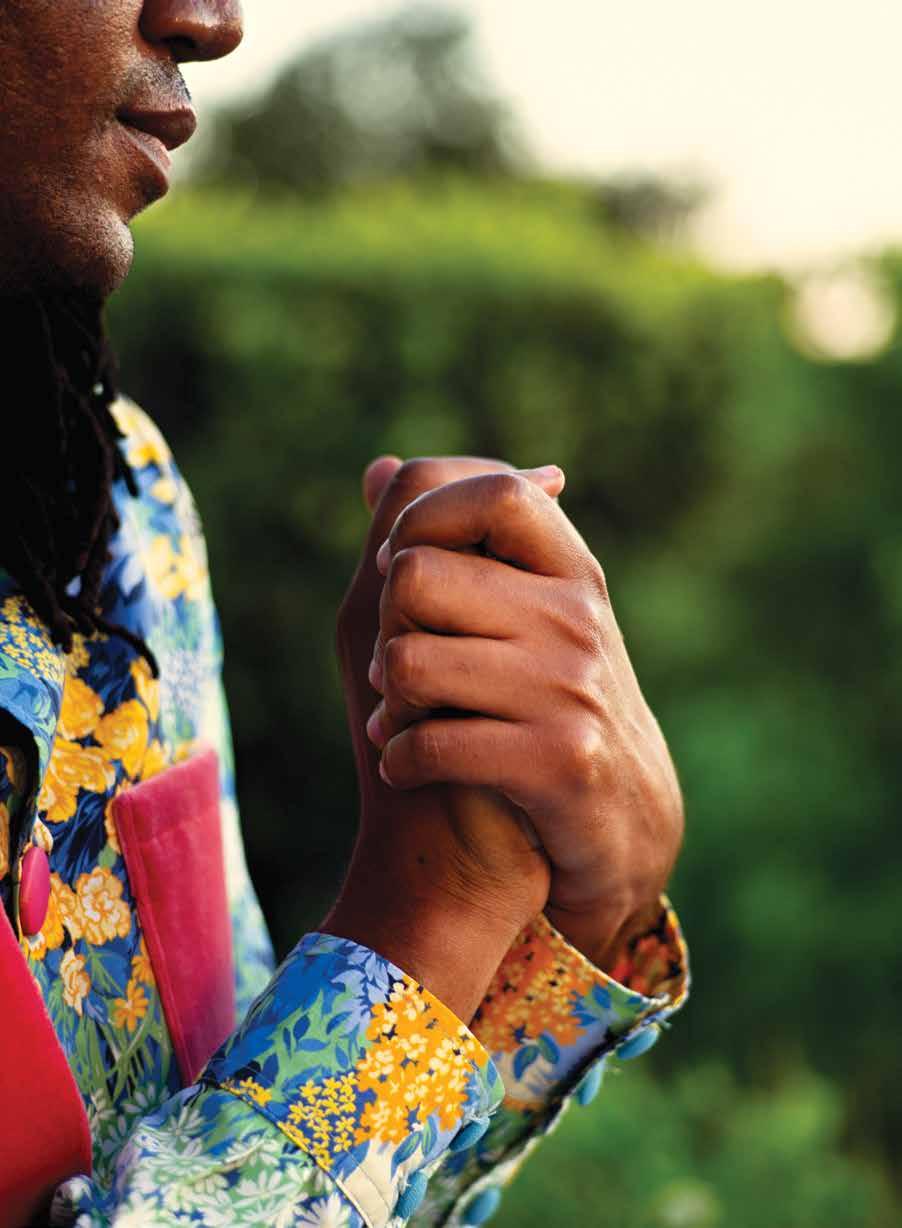
How architect Frank Gehry defined his look in Santa Monica and inspired a new wave of design professionals.
Architect Frank Gehry’s work is inextricably connected to Los Angeles. And if L.A. is a city of neighborhoods, as is often said, Gehry’s trajectory and standing as a towering figure in his field can be traced back to Santa Monica and its adjacent communities.
The Toronto-raised Gehry, born Ephraim Owen Goldberg, arrived in L.A. with his family in his late teens in 1947, as the city was hitting its postwar expansionist stride. Soon, his path included driving a delivery truck, studying under ceramic artist Glen Lukens at the University of Southern California and a fateful introduction to architect Raphael Soriano at the modern home Soriano designed for Lukens, followed by military service. Next was a year immersed in city planning at Harvard University’s Graduate School of Design and travels through Europe.
The time away reinforced why Southern California called to Gehry, with its geography, unconventional creative fodder, and burgeoning avant-garde art scene. “Art gives you a sense of freedom,” he told the Los Angeles Times in 1981. “There were rigid rules in architecture, and there don’t need to be.”
Gehry’s early, modest efforts, such as the Danziger Studio and Residence, built for graphic designer Louis Danziger in 1965 on Melrose Avenue near La Brea Avenue, speak to the architectural vernacular of Southern California while deconstructing form and function. The studio’s boxy volumes, with unadorned, solid fronts that do little to engage with the street, contain an expansive working and living environment oriented around an internal courtyard. “What is important and striking is the way in which this elegantly simple envelope not only reaffirms the continuing validity of the stucco box as Angeleno architecture, but does so in a manner that can stand up to international scrutiny,” wrote architectural critic and historian Reyner Banham in his seminal 1971 book, Los Angeles: The Architecture of Four Ecologies. Less than two miles from the Danziger Studio on Melrose Avenue, Gehry expanded an idiosyncratic yet practical facility for Gemini G.E.L. printing workshop and gallery in the mid-1970s, leaving many of the building materials in raw and expressive states.
70
From the Ground Up text by Jessica
portraits by Nathaniel
architectural images
In 1978, architect Frank Gehry radically rethought the singlefamily American home with his own house in Santa Monica.
Ritz
Wood
by Cody James
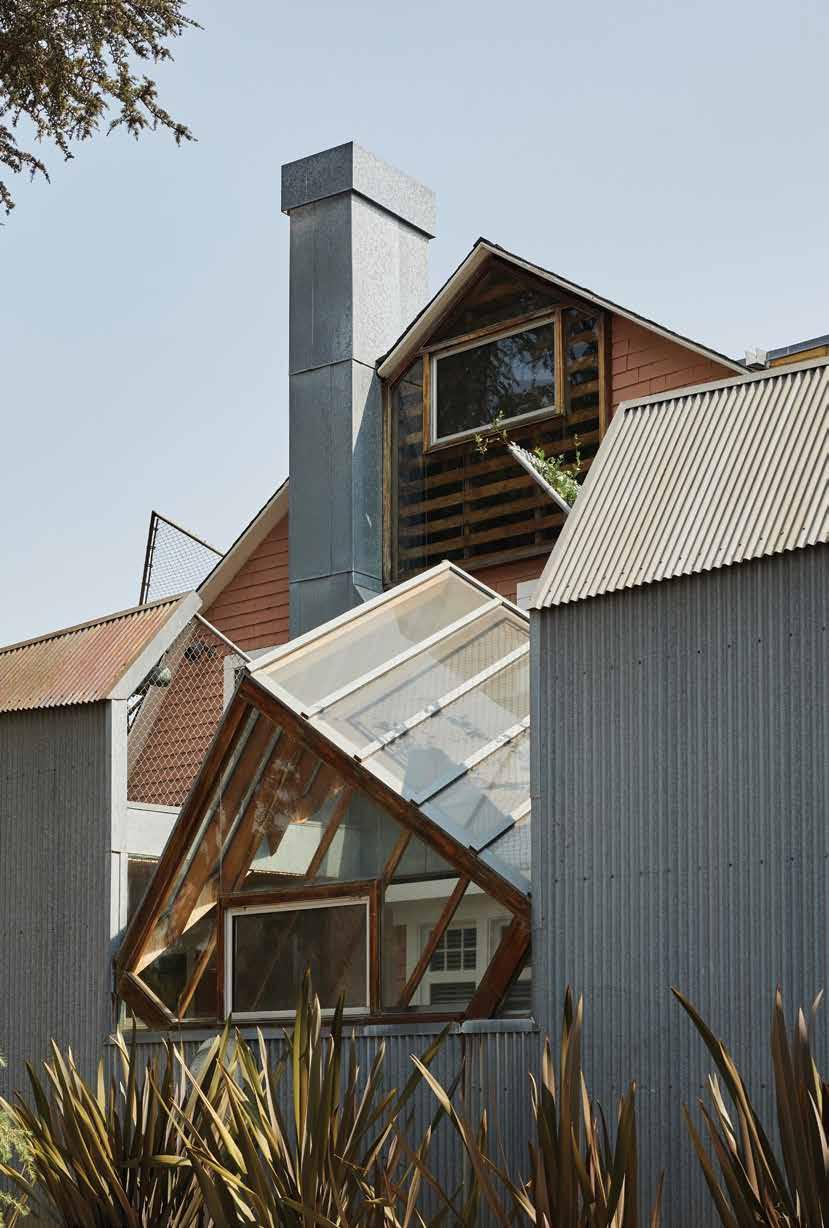
Today, Gehry’s influence is apparent both in L.A.’s built environment and among its next wave of design professionals. “He was diversified early on,” observes Ana Henton, an architect who co-founded Still Life Ceramics studios, located in Santa Monica and downtown L.A. “That was a huge inspiration.” The roster of L.A. architects like Henton who honed their skills with Gehry before establishing flourishing practices is indeed extensive, including Benjamin Ball, Edwin Chan, Ali Jevanjee, Colby Mayes, David Montalba, Christopher Mercier, and Gaston Nogues. “I learned a ton, and everybody worked so hard,” Henton adds. “Everyone I was in contact with really gave it their all.”
In 1978, Gehry radically rethought the singlefamily American home in remodeling his own house in Santa Monica, literally busting through its trim, respectable Dutch Colonialstyle confines with chain-link fencing and corrugated exterior additions. (Gehry and his wife, Berta, only recently moved out of this home into another, more polished residence in Santa Monica that their son, Sam, designed collaboratively with them.)
Residential commissions that materialized in the 1980s, notably the Schnabel House in Bel Air, signified the monied class was signing onto Gehry’s program, with more lavish budgets and extensive square footage. But the California Aerospace Museum at Exposition Park—part of L.A.’s civic boosterism leading up to the 1984 Olympics which was eventually folded into the California Science Center— catalyzed new ambitions.
While Gehry’s services were sought by increasingly high-profile institutions and corporations, he remained engaged in local design. He turned a former dairy on Main Street in Santa Monica into Edgemar, a mixed-used development that evokes the romance of European plazas mixed with SoCal irreverence. (One of its original tenants was the Santa Monica Museum of Art.)
The Chiat/Day Building in Venice, dubbed the Binoculars Building for the oversized figurative sculpture by Claes Oldenburg and Coosje van Bruggen framing the entrance, became an instant landmark when it was completed in 1991 and is occupied by Google.
72


74
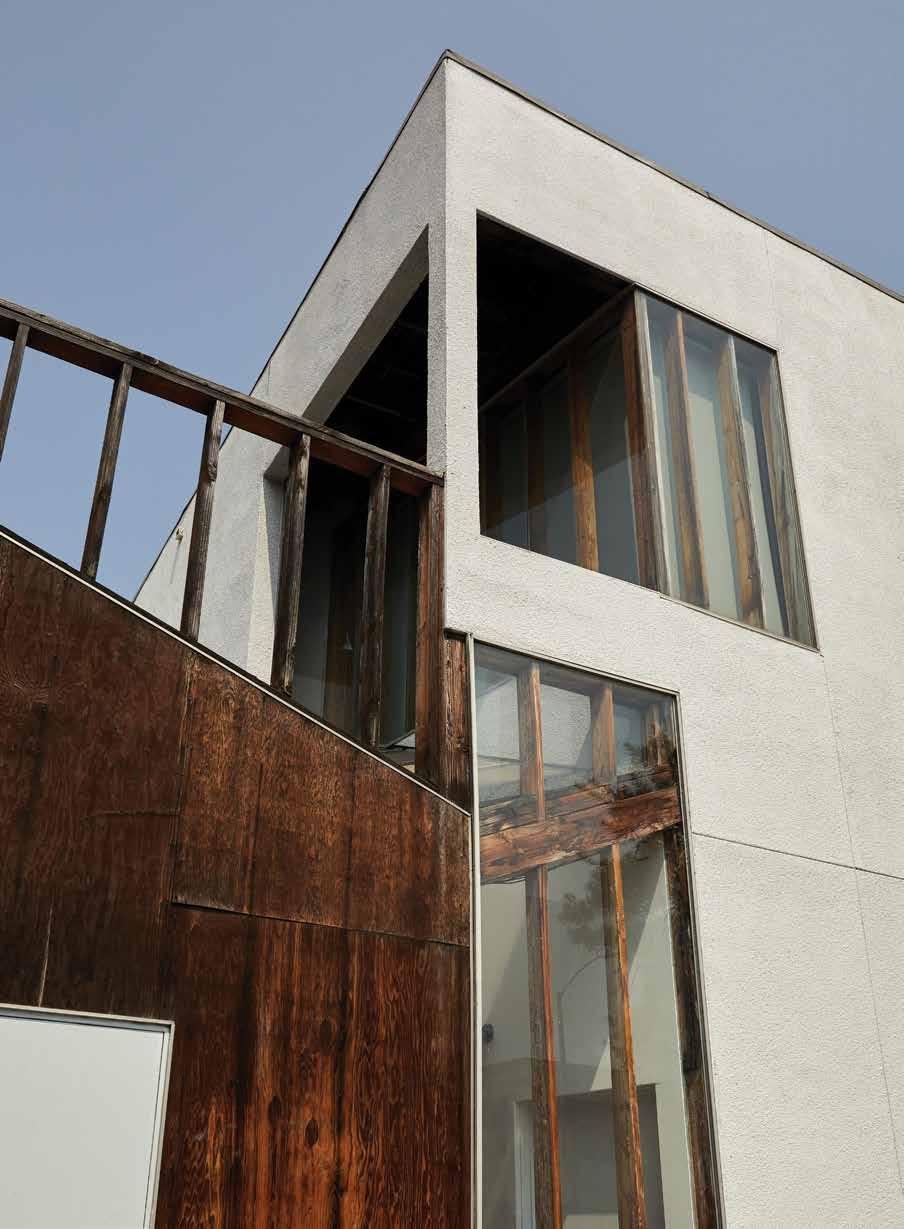
Gehry has attracted his share of critics, too. Not long after Gehry won the Pritzker Prize, architecture’s highest honor, in 1989, writer Mike Davis jabbed that “the Goldwyn Library [in Hollywood] projects the same kind of macho exaggeration as Dirty Harry’s 44 Magnum.” A 2014 opinion piece on tech website Gizmodo declared, “Frank Gehry Is Still the World’s Worst Living Architect.”
Yet Gehry’s billowy, sculptural structures in metropolises from Bilbao, Spain and Abu Dhabi to Paris and downtown L.A. have landed him in the upper echelon of elite architects worldwide. The Walt Disney Concert Hall, the most iconic of Gehry’s hometown projects, has dominated the intersection at Grand Avenue and First Street since its completion in 2003. While it might seem like a career culmination of sorts, Gehry’s accomplishments have continued apace, and at age 91, he isn’t done.
All along, the architect’s wide-ranging curiosities translated to output in multiple mediums. His furniture designs, most recognizably the 1972 cardboard Wiggle
chair for Swiss furniture company Vitra and the bentwood Cross Check seating design firm that Knoll began producing in 1990, have become classics. This holistic approach and embracing of gesamtkunstwerk have impacted designers who have passed through firms Frank O. Gehry and Associates and Gehry Partners. “That’s the Frank Gehry thing. You’re not so linear and only do one thing. You grab the whole project,” explains Venice-based architect Eva Sobesky, who worked with Gehry for 12 years before launching EIS Studio in 2002. Her focus encompasses everything from landscape to architecture to interiors to furniture, and she regularly hires and overlaps with fellow Gehry alumni. Gehry helped her understand that architecture “is all about space that comes in many shapes and sizes,” she notes. “It doesn’t have to just be a building.”
While Gehry’s splashier buildings hold places on archi-tourism bucket lists, public-facing projects infused with his social idealism are most positioned to be valued parts of the Gehry oeuvre. For instance, he renewed his relationship with the L.A. Philharmonic
76
The subtle yet striking details Gehry dreamed up for the Gemini G.E.L. printing studio in the mid1970s are still visible on Melrose Avenue (previous spread) and hint at what was to come at his Santa Monica home (right).

and its music and artistic director, Gustavo Dudamel, in 2018 when Gehry Partners took on a pro-bono project to transform a former 25,000-square-foot bank in Inglewood into an educational and performance space for emerging musical talent.
In addition to his extant physical legacy, which speaks to a cross-section of audiences and purposes, Gehry’s profound influence will continue to be amplified through the colleagues and collaborators he’s inspired over the past 60-plus years.
“People think he is impulsive, but the projects come out of a strong methodology and development,” Sobesky reflects. “I have stayed very true to that process.”
Los Angeles
Gehry has also left an impression on L.A.’s next generation of architects, with a wide roster having spent time at his firm before establishing their own practices.
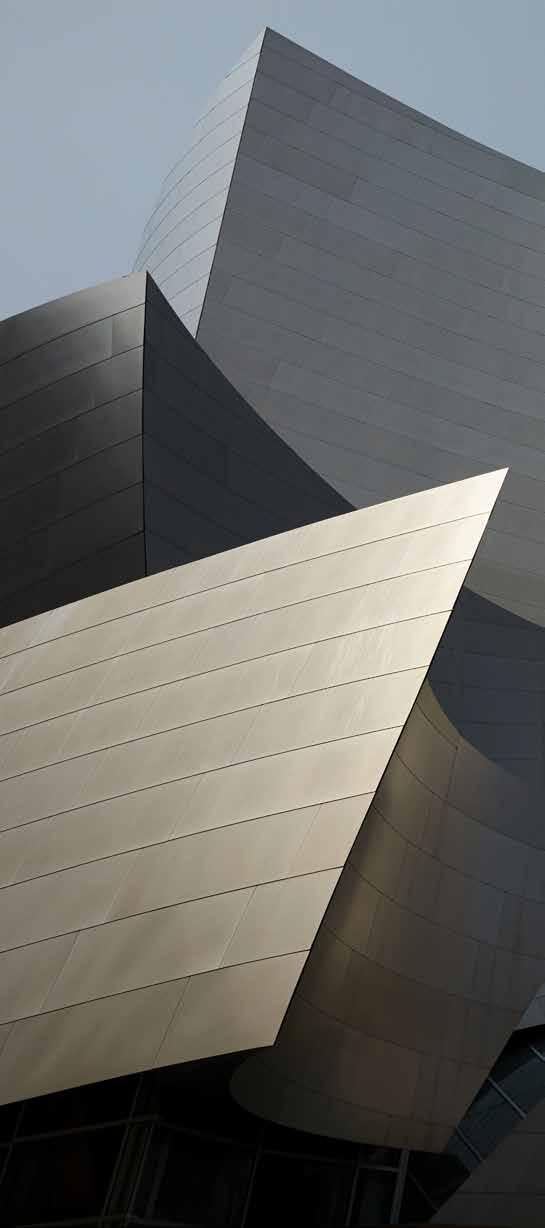 The Walt Disney Concert Hall is arguably Gehry’s most famous
creation.
The Walt Disney Concert Hall is arguably Gehry’s most famous
creation.
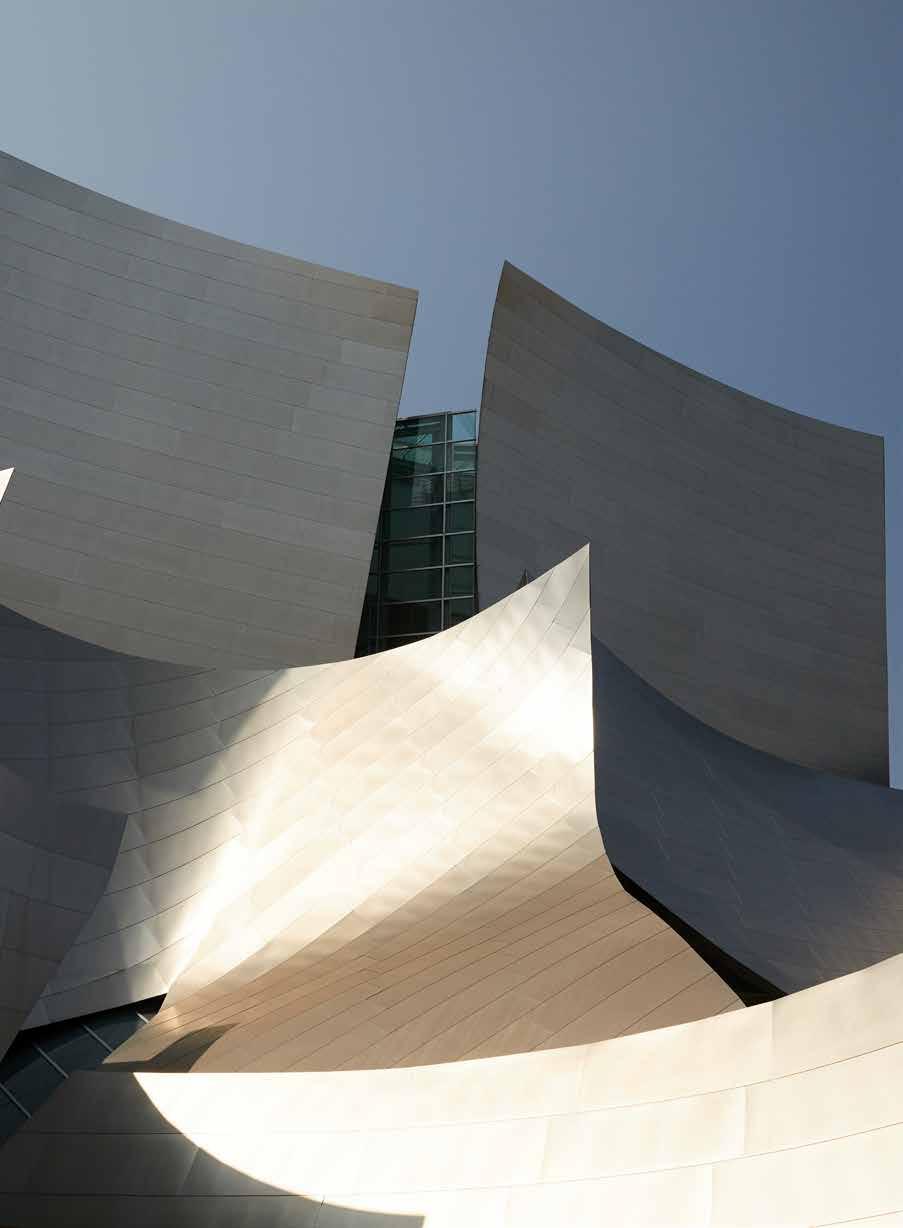
Brunello Cucinelli has a vision for luxury brands that embraces harmony and attentiveness, as modeled by his own brand rooted in Solomeo, Italy.
Brunello Cucinelli isn’t avoiding the obvious. The Italian fashion designer, who gained a decades-long following for his brightly dyed cashmere, knows how people dress has changed. With fewer public events, more people working from home, and battered economies impacting purchases, he is focused on demonstrating how luxury brands can adapt to a new way of life.
The 66-year-old CEO is no stranger to reinvention. After founding his eponymous company in 1978, he adopted the small idyllic hamlet of Solomeo in the rolling hills of Umbria, a part of Italy known as “Cashmere Valley,” and invested a small fortune in reviving it. It is here, among a medieval castle, church, textile mills, and repurposed olive mill all restored from crumbling structures, that the company’s headquarters are based and its knitwear and home furnishings are designed and made. “Solomeo is the very essence of our work,” Cucinelli says. “I have always believed that living and working in pleasant places could somehow contribute to people’s wellbeing and creativity at work.”
Cucinelli essentially reimagined the company town where only a few hundred people still lived, making Solomeo into a cultural center for longtime and new residents dedicated to preserving Italian art and craftsmanship, with a school, library, and theater. It’s also a haven for his embrace of “humanistic capitalism,” which allows him to reinvest profits back into the community.
“This is a new kind of capitalism,” says Cucinelli, who frequently references philosophers like Boethius, Kant, Rousseau, Saint Francis, and Socrates, whose texts fill his libraries. “There is harmony between profit and giving back.”
For Cucinelli, whose style icons include Ralph Lauren, “fashion is a representation of how we feel and what we represent.” That’s especially true in Italy, where, according to Cucinelli, it is a part of the culture. “We are lucky enough to live in a wonderful country where the climate, the history of the arts, the food have accustomed us to the beautiful. Fashion is an integral part of our DNA.”
“I have always admired the feeling when you purchase something you love and must wait days or even months to receive,” says Brunello Cucinelli. “There is an excitement behind the anticipation.”
80
Heart
text by
images courtesy of Brunello
promotional Brunello Cucinelli & Waves
and Solomeo
Marc Graser
Cucinelli
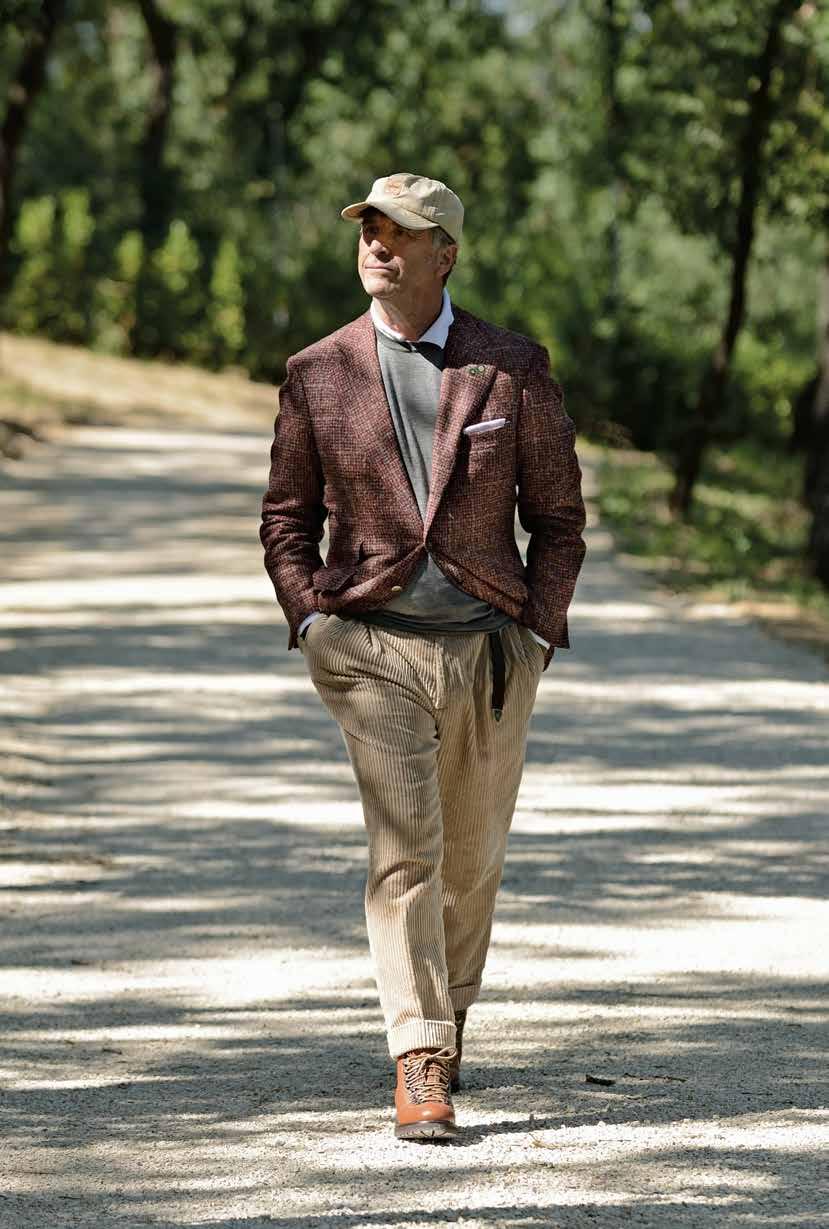
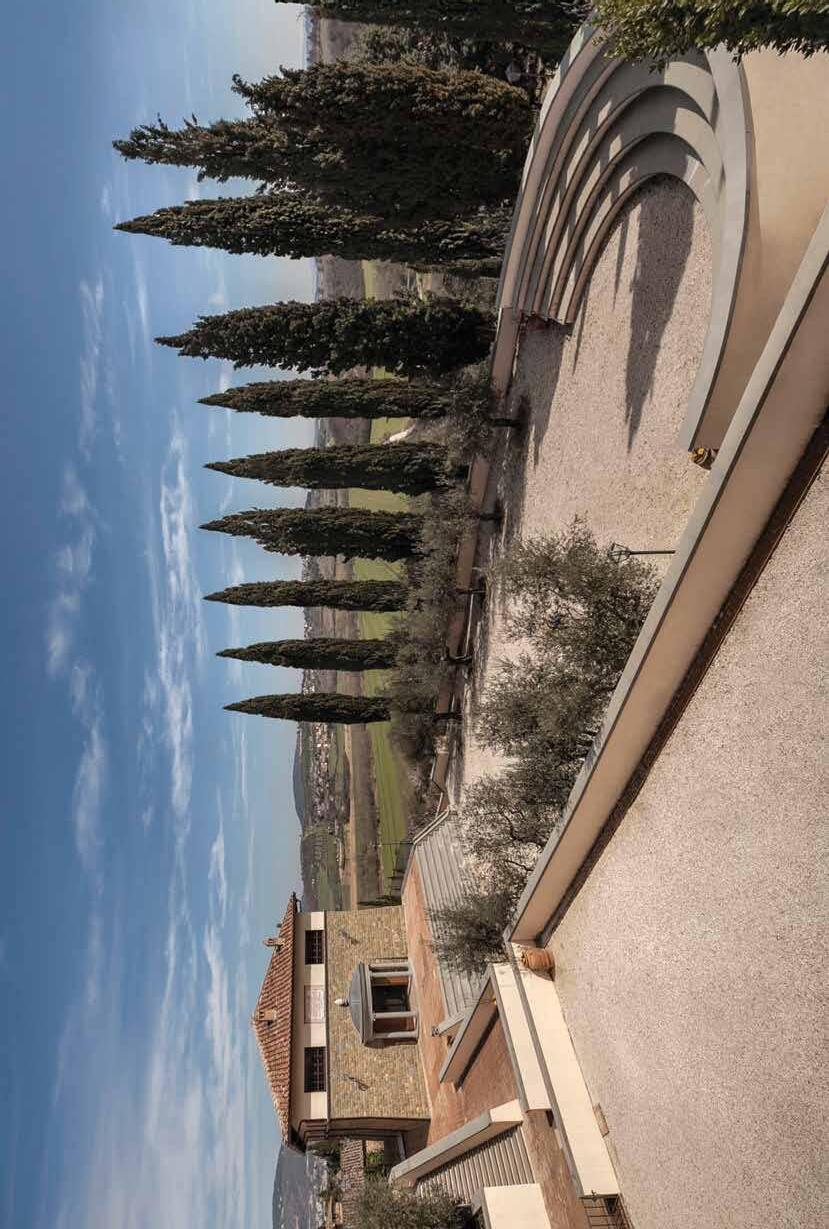
Cucinelli knows it won’t be easy returning to the way it was before the pandemic. While working from home may become the norm for many moving forward, “I think it is important that we still get dressed and look respectable,” Cucinelli says. “I think we should restart with beauty, in every possible field.” It brings to mind his favorite Dostoevsky quote, “Beauty will save the world,” which Cucinelli feels could not be more relevant today. “I believe we all have a responsibility to each other, our future generations, and to our land,” he says. “The [Brunello Cucinelli] brand today continues to be responsible first and foremost for its people, their families, and continues to do great work so that we may move into a new chapter with a renewed spirit, a creative mind, and a fed soul.”
Cucinelli describes his personal style as classic but casual. “I admire a look which has both tailoring and relaxed details so that it never feels too uptight,” he says. “I could never give up my light navy blue cashmere blazer and my panama trousers that I wear across all seasons. It’s a sort of uniform, something that sets me apart. For me, dressing well crosses the line of time and history; it can be applied to different social contexts depending on the combinations and outfits.”
Like every industry, fashion was impacted by the coronavirus. But during months of quarantines in Italy, Cucinelli made sure his staff was taken care of. None of his 2,000 employees were laid off, and no stores were shuttered. Cucinelli is also donating 30 million euros in merchandise to those in need. The brand continues to invest in its future, and look forward to whatever may come next.
Cucinelli was born 30 minutes from Solomeo, the Italian village in which he has invested a small fortune and which he has made the headquarters of his luxury brand. “The company is founded on taking care of people and is rooted in humanistic sustainability,” he says.
83
promotional Brunello Cucinelli & Waves

image courtesy of Montalba Architects
I think of the things that mean a lot in my life; it’s often not the things people think, it’s the other stuff. In music, the silence between the tones, not the tones.
—David Montalba
MOTIVATION
A bold breed set apart from the mainstream houses and the traditional schools in Europe or on the East Coast, these perfumers make individual and unexpected scents that capture L.A.’s creative spirit.
“These perfumes are my tribute and love affair with the city I live in and work in,” perfumer Linda Sivrican tells me. “These aren’t meant to be typical scents.” The first collection for her perfume house, Capsule, translates the social scenes of Los Angeles into fragrances that are bright, genderless, and addictive. Sivrican developed Covey, the lightest and freshest of the bunch, after a lunch in Santa Monica. “The tech-y types were there,” she says, “there was fig on the table, and it smelled like lime and bright spearmint.” She was inspired by twins she met in Los Feliz, “who just had a cool style about them,” to create the fragrance Brood, bottling up their leather-jacket energy with cardamom, tobacco, and a leathery depth. In each of Sivrican’s six perfumes, she’s alchemized the feeling of being out and about in the city, with the confident freedom of a social chameleon.
The daring quality of the perfume scene in L.A. is its greatest asset, Sivrican says. “Los Angeles hasn’t historically had deep roots in fragrance. It’s so far from traditional Europe. New York has more brands and a longer
history. Los Angeles is interesting. It’s the hub of ‘anything goes,’ so there are a lot of smaller brands doing interesting things.”
There are infinite perspectives on L.A., a place of many places and fragrances, to be manifested. Saskia Wilson-Brown, an expert denizen of L.A. perfume culture, runs the Institute for Art and Olfaction in Koreatown. Like Sivrican, Wilson-Brown describes the perfume scene as containing a creative liberty because it’s outside of the center of perfuming. There is an irony to this, she says, “because with Hollywood culture, you can’t get more mainstream than that. But in perfumery, Los Angeles is not mainstream. The perfume scene is weird. There’s an irreverence to perfumers here.” Since scentmakers aren’t typically trying to appeal to the big houses, their work veers toward the unique. “They’re just trying to hit whatever moves them,” she says. “There’s something fearless to the people who just do what they want to do.”
This individualistic artistry manifests most strongly in L.A.’s natural perfumers, who
86
A detail at Orris Perfumery, the shop of Capsule Parfumerie founder Linda Sivrican. Next page, Sigil founder Patrick Kelly at home.
text
images by
& courtesy of Sanae
The Vanguard Perfumers of Los Angeles
by Maggie Lange
Sam Muller
Intoxicants
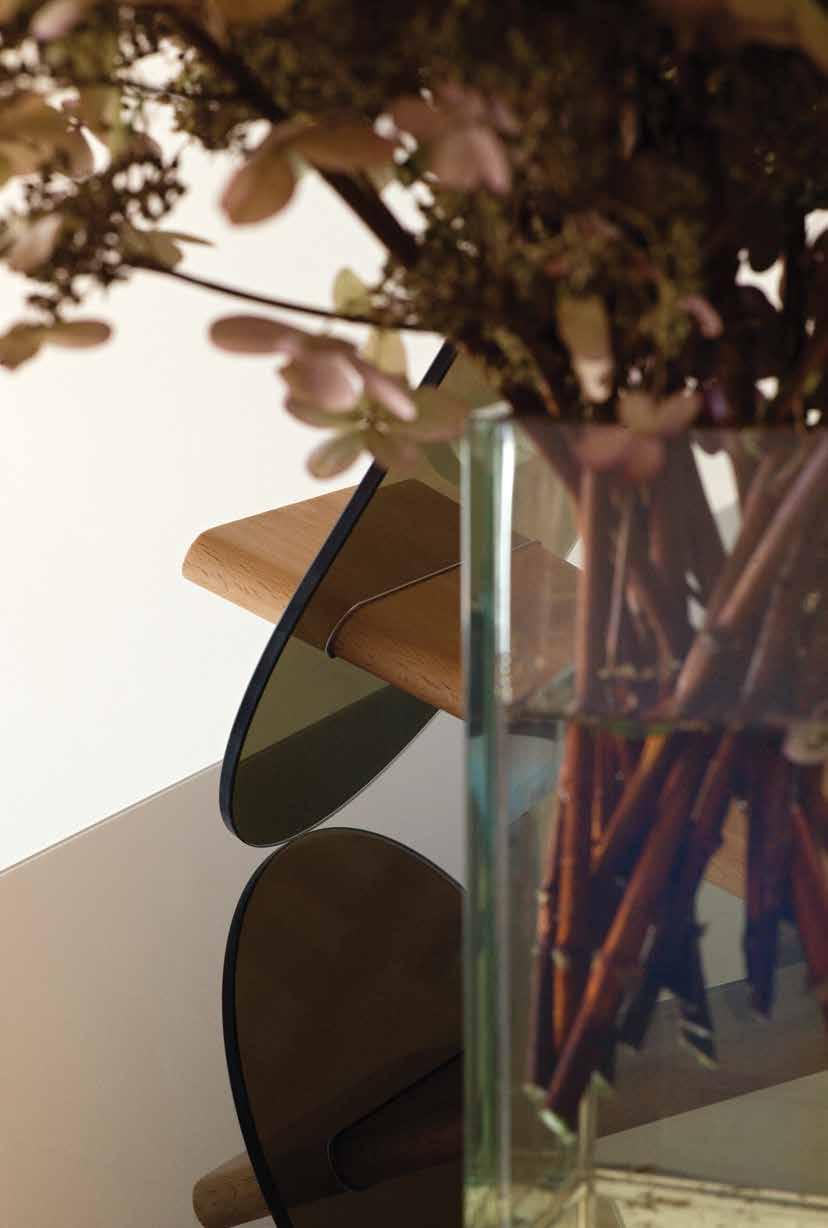
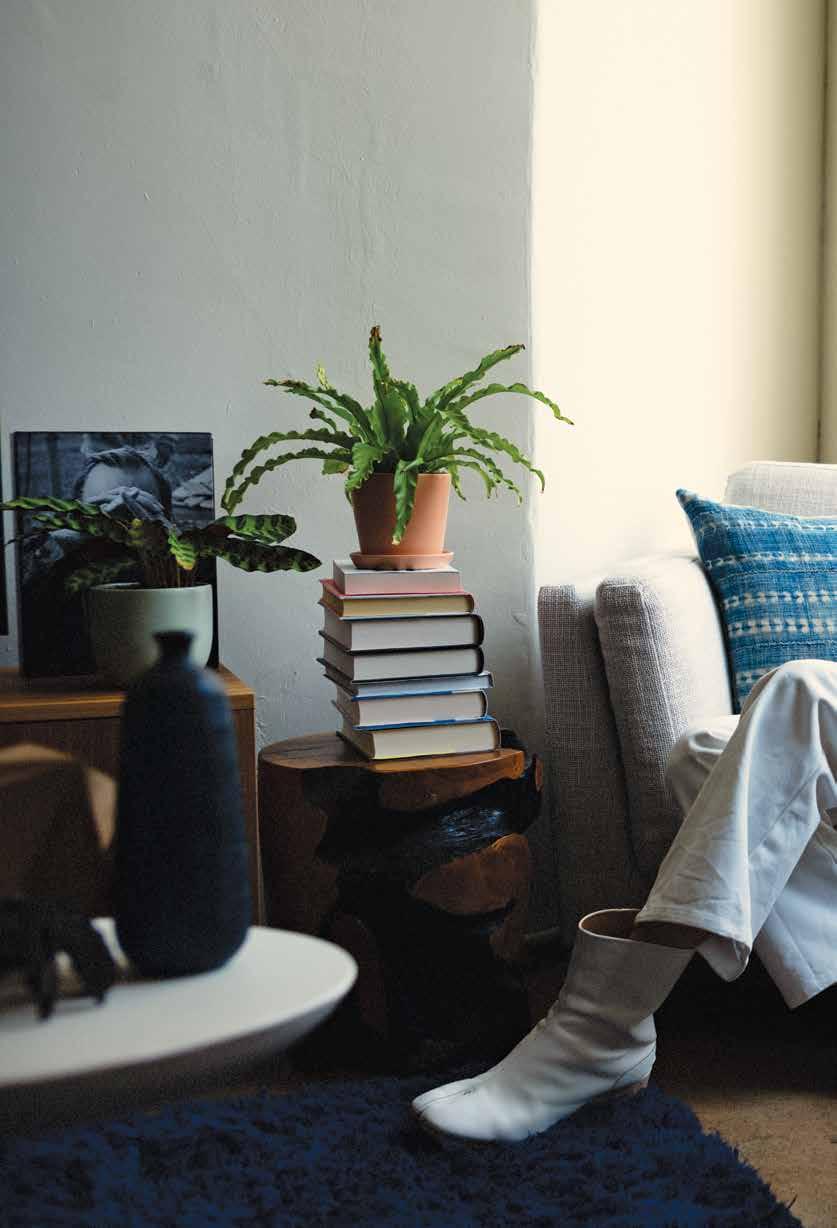
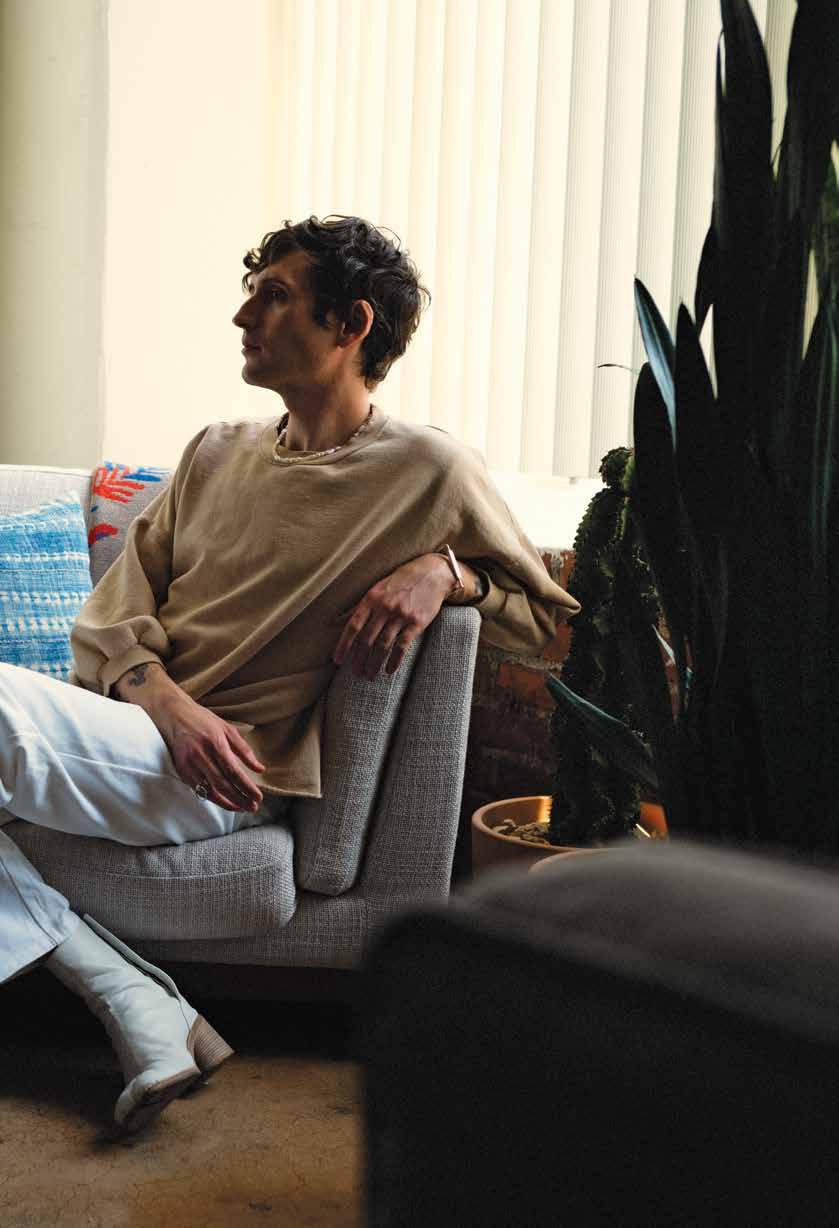

use rigorous strategies to avoid synthetic formulas. Alexandra Balahoutis founded the vegan perfumery Strange Invisible, which is based in Venice on Abbot Kinney Boulevard, in 2000. She started making her own scents in her early 20s “because no perfume satisfied my desire for the perfect fragrance,” she says. “I got a little obsessed.” Natural perfumes fulfilled her yearning to capture rare smells. Strange Invisible is distinctive for its rich, wild botanical fragrances. Its scents are elusive, with nods to old Hollywood glamour, like Prima Ballerina—a crisp, classic mix of rose, lime, and sage. In honor of California’s favorite spiritual hobby, astrology, Balahoutis has a line of perfumes that translates principles of the zodiac houses into scents. For example, Libra takes on a balancing act in its combination of rose, grapefruit, iris, myrtle, and basil.
Balahoutis also has a passion for the technical genius of natural perfuming. A distiller on the border of Sonoma and Napa Valley creates the distilled esprit de Cognac for Strange Invisible’s line. This spirit is
different from a typical Cognac; it’s more like a hyper-distilled wine. “We have these gorgeous essential oils, and we can’t just throw them into anything,” Balahoutis says. “If you have a gorgeous Burmese ruby, you can’t put it in aluminum or 10-karat gold. You have to find a metal worthy of it. The oils love this distillation. The way they evolve and age is so much more beautiful.”
Perfumer Patrick Kelly, who founded Sigil in 2015, is the epitome of L.A.’s self-taught independent spirit. His line specializes in arboreal, lively, gender-neutral scents. “I taught myself by reading books,” he tells me. “I don’t have a traditional past. I had an intuitive call to experiment and play with these materials.” Kelly studied philosophy and film, and his perfumes play with cinema aesthetics. Sigil’s typeface and logo reference Ingmar Bergman title cards and mid-century modern design. He thinks of his perfumes as “a bridge between old-world tradition with queer experimental voice.” This instinct manifests in scents like Amor Fati, a cerebral combination of palo santo, green pine, and bergamot.
90
The Sanae Intoxicants’ scent Burning Ocean was inspired by the color of the ocean just past sunset. Sanae Barber is pictured on the next spread (right, courtesy of Sanae Intoxicants) alongside Linda Sivrican of Capsule Parfumerie.
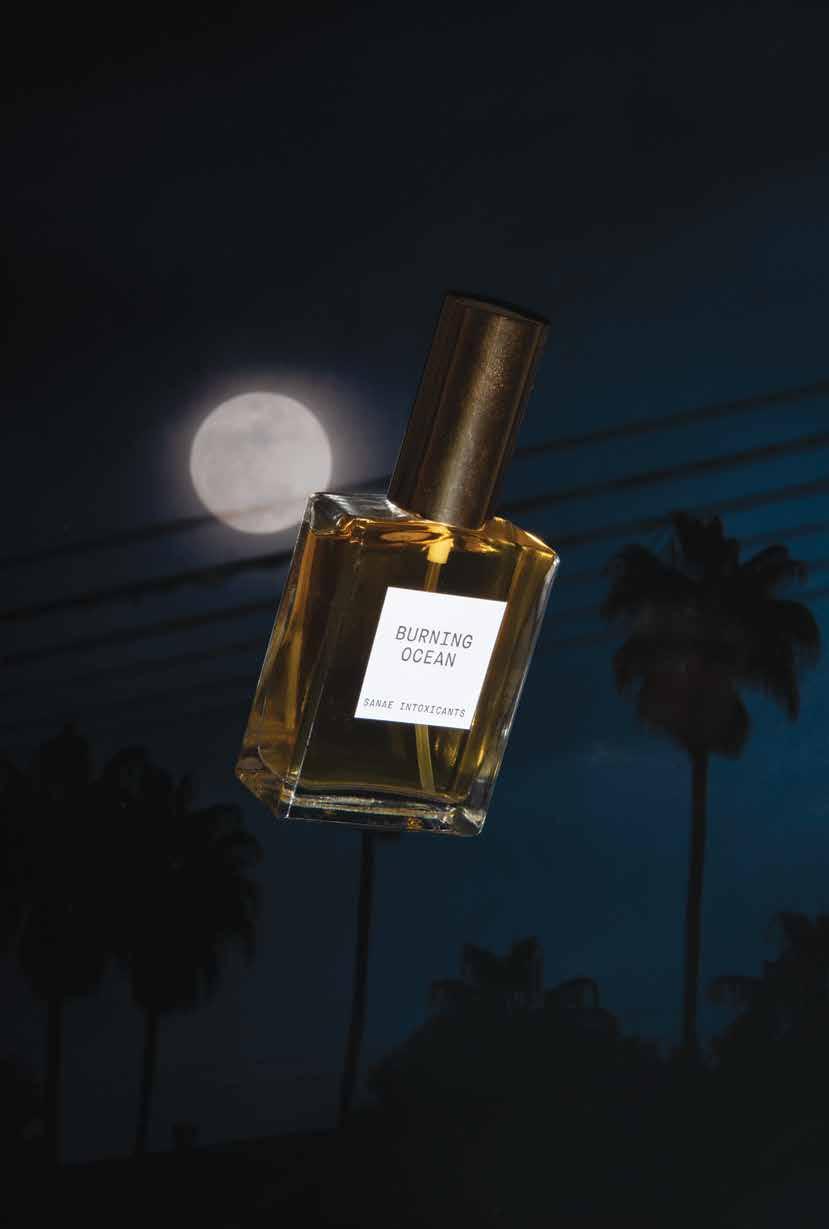
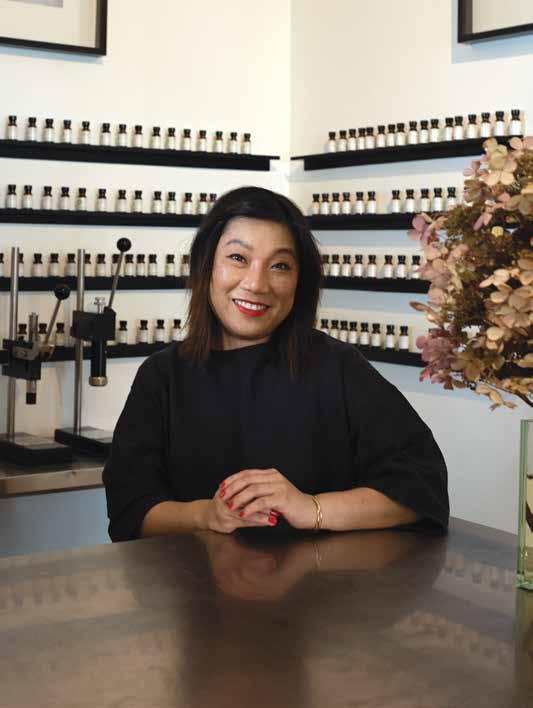
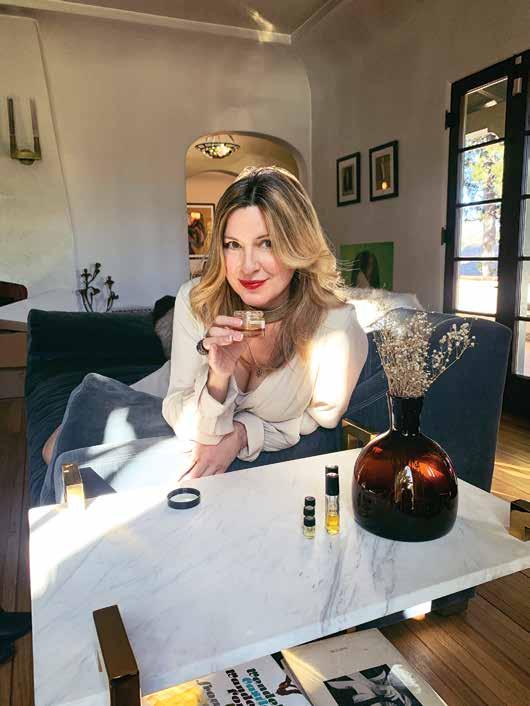
The perfumes of L.A. also reveal pockets of the city that don’t come across at first glance. Sanae Barber, who started Sanae Intoxicants in 2010, made her perfume L.A. Babe while hiking in the hills. “I was thinking about the cowboy cologne scene, but then I had this different idea,” she says, wanting something other than the typical dusty, leathery smell. “I was walking around Los Angeles, smelling amazing orange flowers, plumeria, seeing the figs.” Her scent Burning Ocean gets its inspiration from the other side of the city, at the coastline. “The scent is a description of silvery water, fiery orange ambrette. It’s what you see when you’re swimming and surfing just past sunset. I used to live at the beach, and I was completely enraptured with the tone at that time of day.”
“[I]n perfumery, Los Angeles is not mainstream,” says Saskia Wilson-Brown, who runs the Institute for Art and Olfaction. “There’s an irreverence to perfumers here.”
94

Handcrafted hollow surfboards come out of Tyler Frome’s studio looking like works of art.
Finding a board that connects with the waves in a harmonious way is a lasting desire of surfers. For Tyler Frome, hollow surfboards are that vessel.
Frome, the owner of Year One Surf Co., has been making handcrafted hollow surfboards in his Los Angeles shop for 13 years. He started shaping in 2005, beginning with making the sport’s standard foam-core boards, which evolved into learning about hollow wooden surfboards. He built one for himself, another for a friend, and his interest rose from there.
“The hollow wooden surfboard is based on the original Tom Blake build, which was basically like an airplane-wing structure,” Frome says, referring to the intricate woodworking method that, mid-process, looks like the skeleton of a fish. “It has a center stringer with ribs every 8 inches, and that interior framework provides the support.”
Frome puts decking on the top and bottom of the interior, adds cork to the rails, and then shapes the board in a traditional way, which involves hand-sanding with sandpaper, blending the foil, and accentuating contours.
The resulting board is lighter on the water than foam boards. “You get increased speed through the weight,” he explains, “and increased buoyancy through the air trapped inside the board.” Though hollow, they’re not delicate. On the contrary, hollow boards are as durable as foam boards since they are also glossed with epoxy resin, and they are easy to fix if dinged.
Hollow surfboard design was invented in 1929 by Wisconsin-born surfer Tom Blake, who learned to surf at the Santa Monica Swim Club in 1921. It revolutionized surfing at a time when the Hawaiian 16-foot-long olo boards and 7-foot-long alaia boards, made of solid wood planks, were widely used. It made surfing more accessible to people
96
Shaper Tyler Frome uses reclaimed wood for his intricate hollow surfboards.
Respecting Tradition
images by Tony Ung
text by Christine Hitt
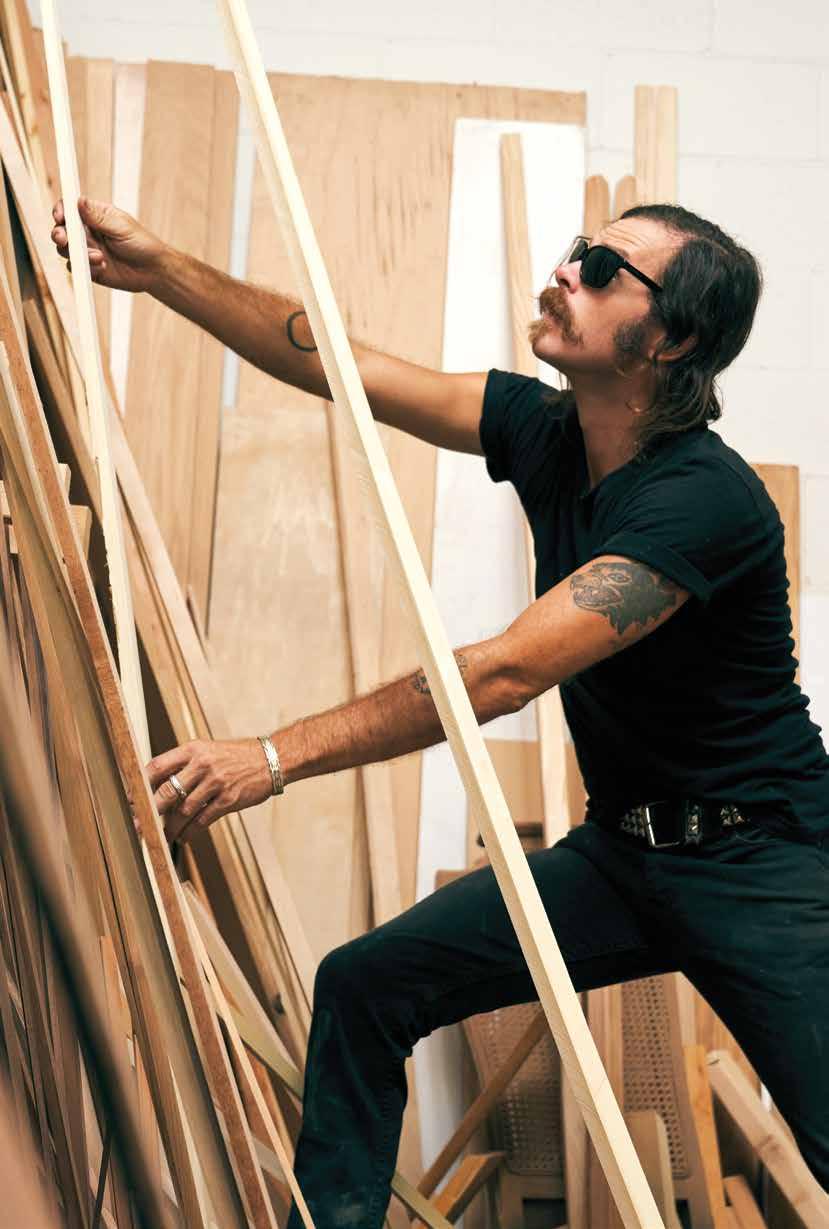
who weren’t interested in hauling 100- to 200-pound boards to the beach.
“When Tom Blake came in with the hollowboard technique, that upped the game. It was the only thing until the foam revolution,” Frome says. “A lot of the Californians started doing it, people like Dale Velzy, who’s like my personal shaper hero. … All of the people I admire spent time with the hollow board and kept doing it throughout their whole career, so I feel like I’m almost carrying on that tradition.”
Frome crafts the boards from reclaimed wood, picking the interior frames from a cabinetry shop and the external materials from a lumber yard and mill that salvages redwood from old water towers in the Salinas River Valley. In line with his environmental values, he has also collaborated with organizations like The Surfrider Foundation and Yosemite Facelift, donating boards and volunteering for beach cleanups and trash pickups.
Each of Frome’s custom creations, which start at $2,000, features a personalized inlay design with abalone or shell work. Much of the abalone is sourced from a cache of shells his father collected while diving many years ago off the Northern California coastline. For Frome, the addition of shell or abalone gives every board its own spirit.
“It’s an involved process, but it has to be done well,” Frome says. “What you put in is what you get out, and with surfing being such a spiritual thing, it’s important to have something that has that kind of energy put into it.”
“All of the people I admire spent time with the hollow board and kept doing it throughout their whole career,” Frome says, “so I feel like I’m almost carrying on that tradition.”
98
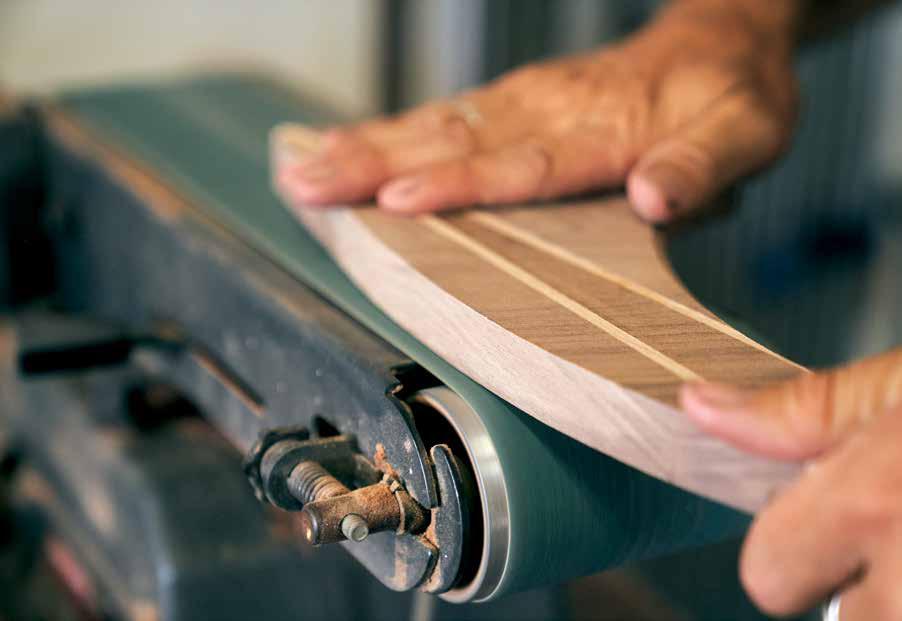

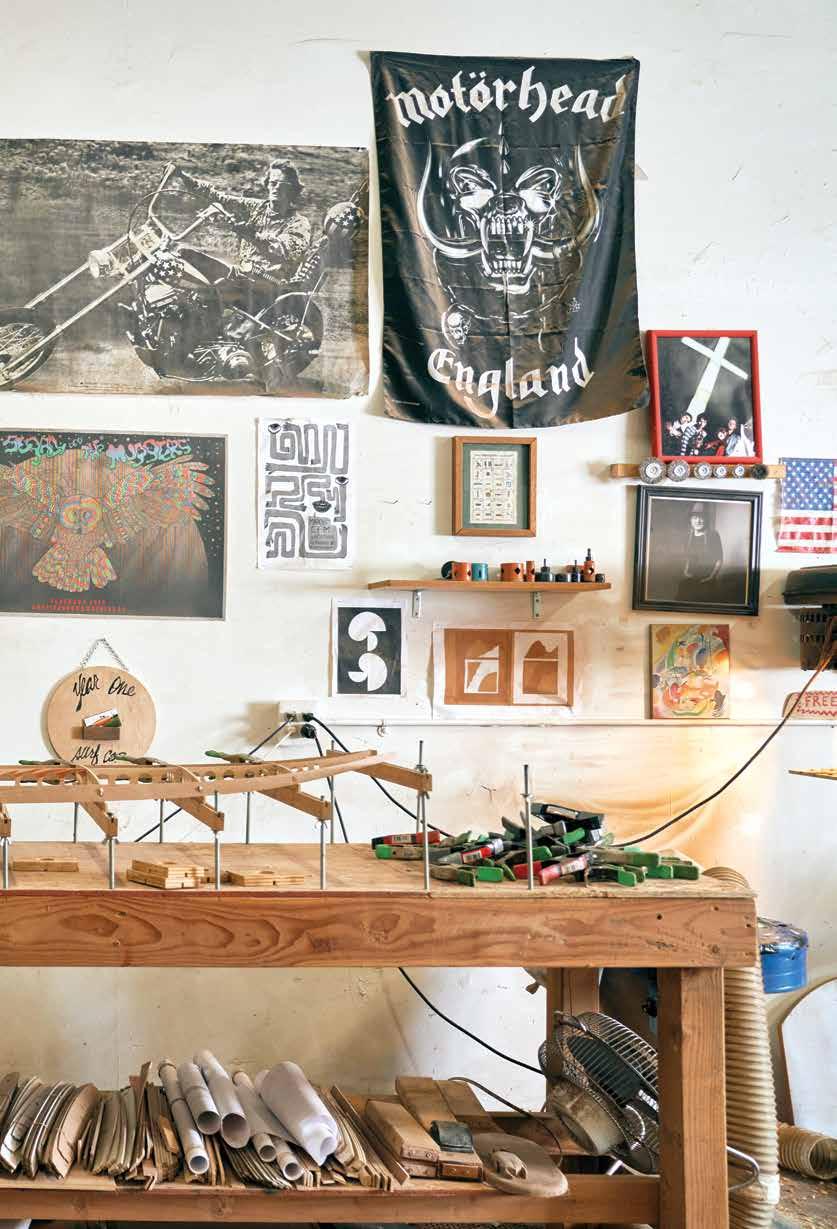
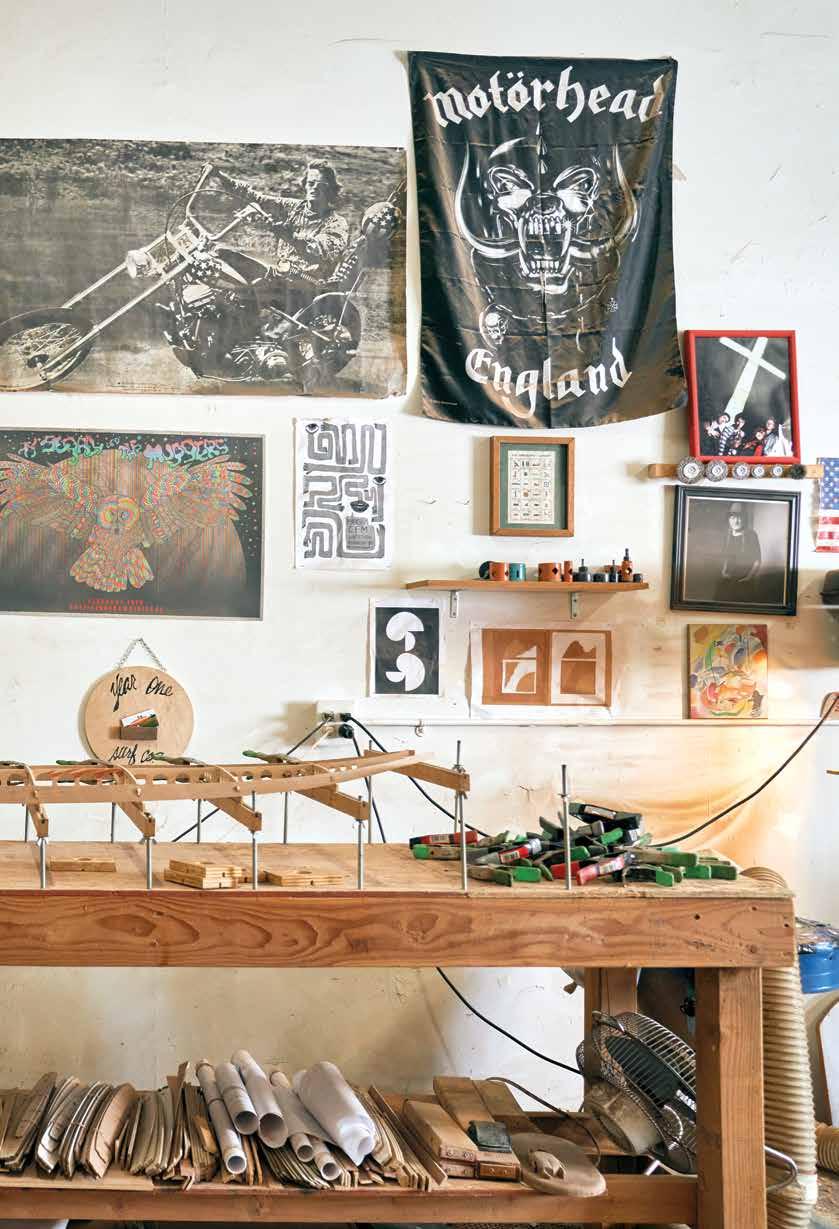
Montalba Architects designs the ultimate flexible, tech-oriented campus for Headspace in Santa Monica.
For a tech company that helps people be rooted in the present, the adaptable, open-air design of Headspace’s Santa Monica headquarters has turned out to be quite prescient.
“Flexibility is such an important part of any forward-thinking company,” says David Montalba, founding partner of Montalba Architects, which designed the significantly expanded offices for the popular meditation app that boasts approximately 60 million users. From the outset through its completion in early 2020, the project transitioned Headspace from a smaller office to a larger campus within Bergamot Station, the sprawling arts complex located on Santa Monica’s once-industrial eastern swath, which is also home to Montalba’s studio.
Like other contemporary workspaces favored in the technology and startup world, the plan Montalba’s team came up with encompassed multipurpose spaces to support a casual yet focused working environment the company could curate and use in nuanced ways like combining workspaces and hosting meditations. The cohesive scheme and improved circulation
were stitched together from a hodgepodge of more than 32,000 square feet in three of the four buildings that Headspace occupies. Rather than start afresh, the company’s designers preserved some older parts of the existing structures to “keep that layer of history and add our layer to it,” Montalba says, demonstrated in architectural details such as exposed steel trusses.
The close integration of interior and exterior areas, a skill at which Montalba Architects excels, was intended to encourage collaboration while softening conventional corporate hierarchies. Real estate once allocated to parking and storage was creatively repurposed and activated, with the campus centered around a courtyard that Montalba describes as “the heartbeat.” Relatively little square footage was dedicated to private offices. “I always say it’s weird to be an architect and say the most important thing is the outdoor spaces,” Montalba says. “That’s how I look at the world. I think of the things that mean a lot in my life; it’s often not the things people think, it’s the other stuff. In music, the silence between the tones, not the tones.”
102
For the Headspace headquarters in Santa Monica, Montalba Architects incorporated millwork paneling and custommade, freestanding millwork furniture.
images courtesy of
Building With Intention
text by Jessica Ritz
Montalba Architects

Montalba’s team created an expansive shared theater for gathering, meeting, and working fitted with deep and wide risers, yoga bolsters, other softer surfaces, and state-of-the-art audio-visual equipment.
A double-height, folding glass and metal frame door allows the theater to engage with the center courtyard while other builtin features and sophisticated soundproofing can close off the space internally. The risers also help filter and manipulate the natural flow of light. “We didn’t invent this kind of seating,” Montalba says. “It’s been around since the Romans.”
Taking advantage of Santa Monica’s yearround, benevolent coastal climate was a priority for Headspace. The ample outdoor space turned out to be a more crucial element than expected. “We were a year or two early with those,” Montalba jokes about the alfresco “rooms” separated by wood trellises, which can be set up for a variety of working scenarios and combined with other parts of the complex to arrange for socially distanced environments that the current times demand.
Other landscape gestures designed by Pamela Burton and Company artfully enhance activities hosted for employees
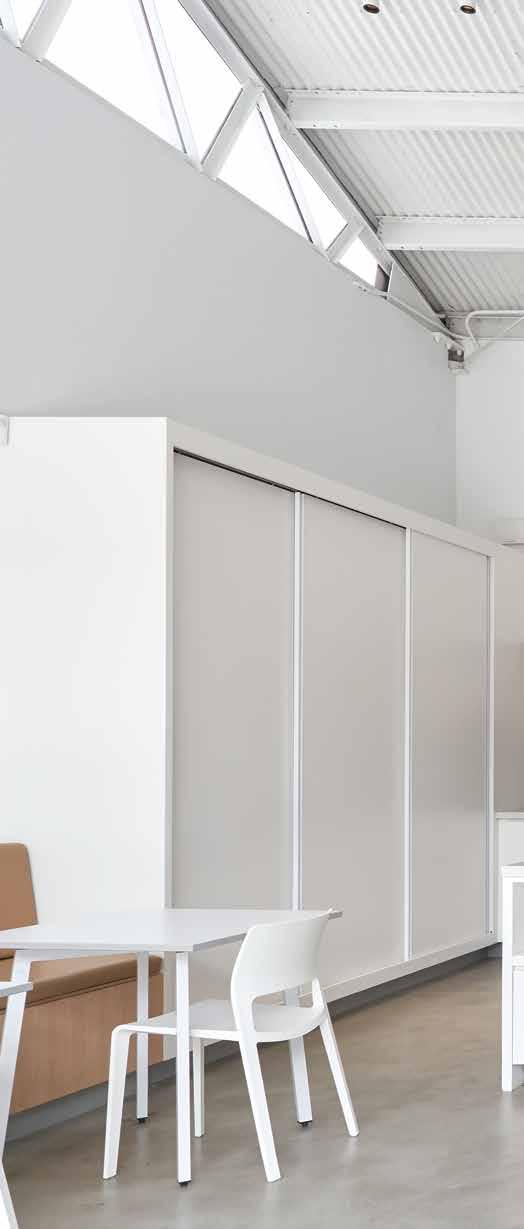
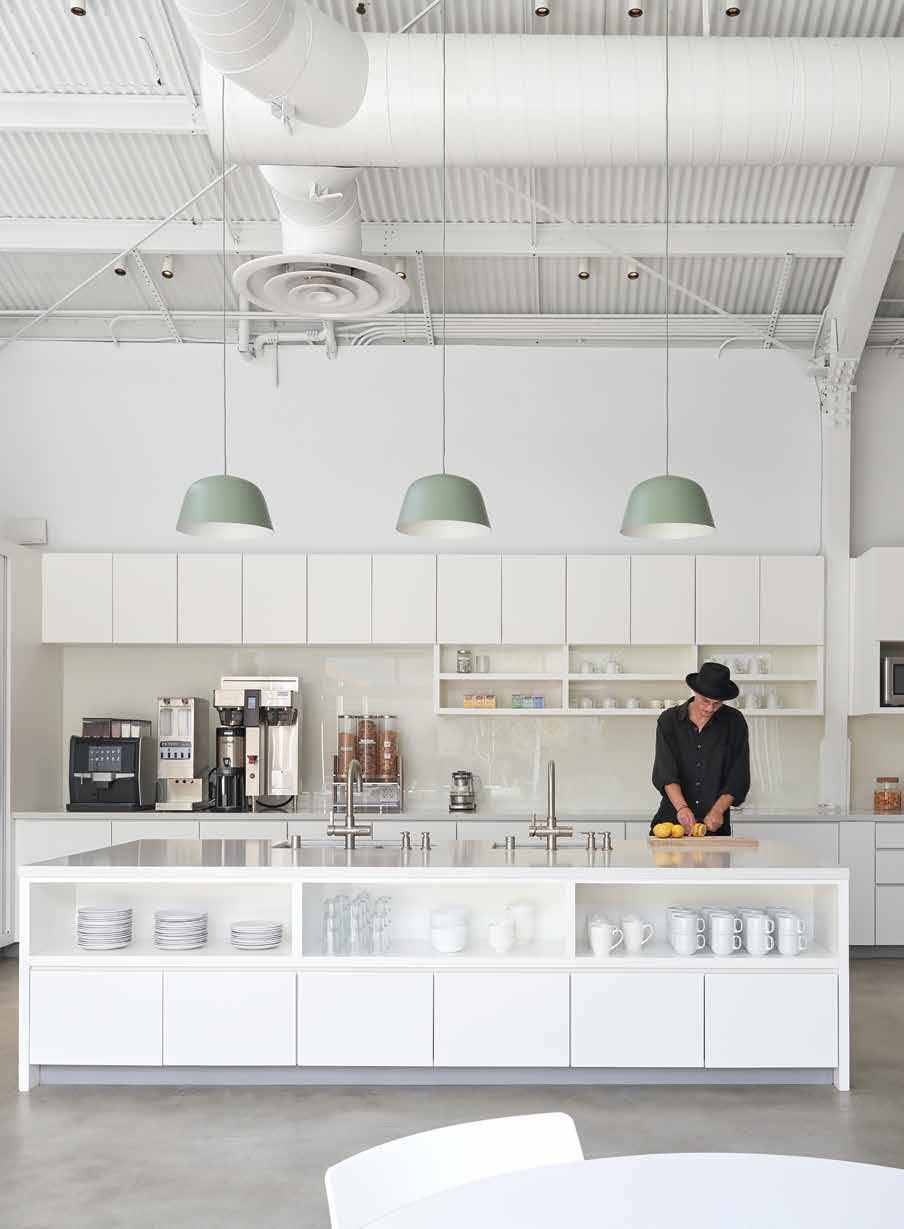
ranging from meditation to yoga classes. Spindle-shaped Spun chairs designed by Thomas Heatherwick add to a sense of playfulness and spontaneity in the central courtyard. Plus there’s another, more compact open-air setting to enjoy at the second level. The exterior “feels very Bergamot,” Montalba notes, with industrial corrugated metal surrounding the discreet entrance and a “James Turrelllike” glowing orange sphere that references the Headspace logo. Montalba Architects opted for an understated material and color palette, empowering Headspace employees to add decorative and chromatic flourishes as they see fit.
Montalba Architects’ goal was “to create the framework” for Headspace to advance its work; mindfulness is ultimately reflected in the way the spaces are used by people. The adaptability and diversity incorporated throughout the headquarters reflect the values of both Montalba Architects and Headspace and help facilitate the latter’s process as it brings meditation to the masses.
“The reality is like in life, you need a good mix,” Montalba says.
106
Rather than start afresh, the designers preserved some older parts of the existing structures such as steelwork trusses to “keep that layer of history and add our layer to it,” Montalba says.
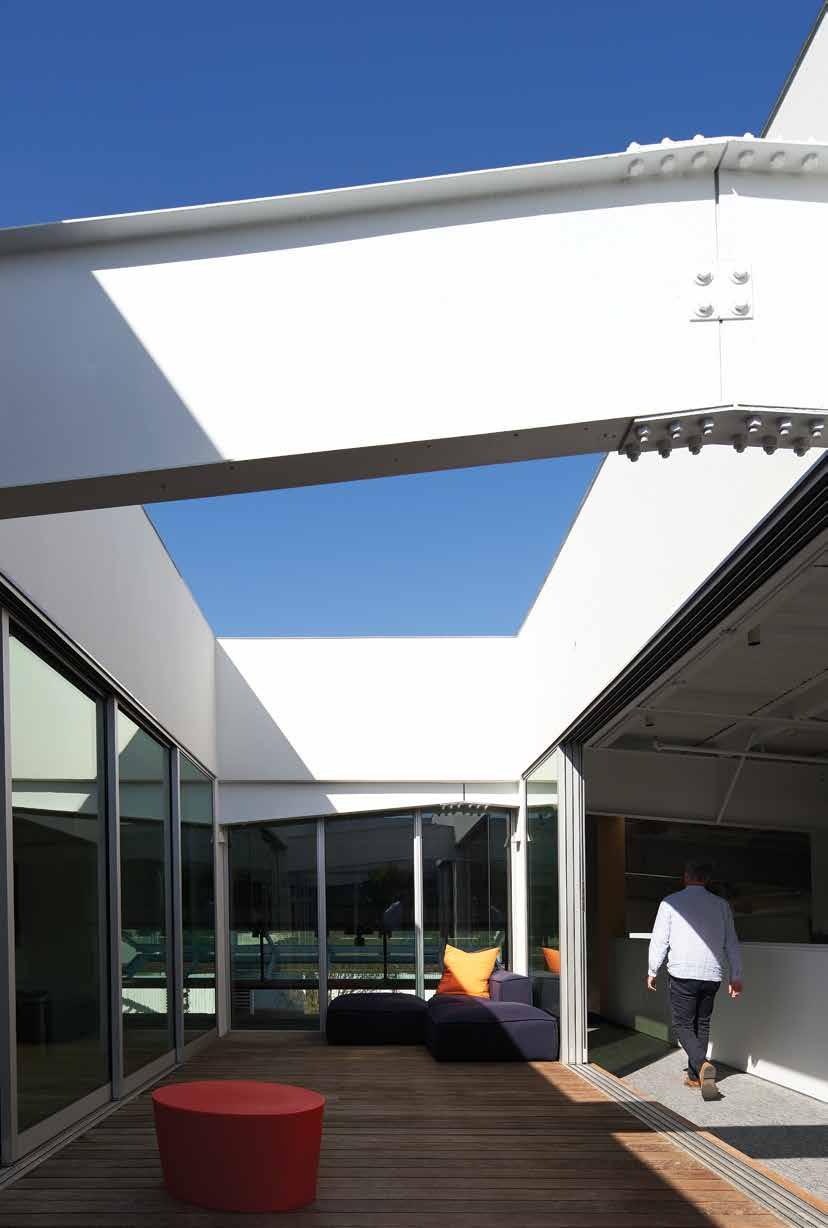
A guide to getting lost along Southern California’s meandering coastline and scenic canyon roads.
The American road trip is a rite of passage. From the high-altitude thrill of Colorado’s mountain passes to racing dolphins on the Overseas Highway, it familiarizes travelers with parts of the country they might otherwise miss. It also demands little. Behind the wheel, all the usual logistical headaches of travel (timetables, connecting flights) disappear. In their places come freedom and peace of mind. Which is to say, you don’t really have to think at all. Once you’ve sorted out the basic questions preceding any road trip—Is there gas in the tank, or is the electric-car battery charged? What playlist are you going to listen to?—it’s just a matter of going.
The Pacific Coast Highway is a sun-splashed route that connects West Los Angeles to coastal scenery from Dana Point to the Golden Gate Bridge and beyond. If it’s dramatic views you’re after, you won’t have to travel far in either direction on the PCH. Head south along the unbroken shoreline of Manhattan Beach and Redondo Beach and eventually you’ll come to the Palos Verdes Peninsula, whose sky-high cliffs feel
totally removed from the rest of L.A. Head north from Santa Monica and you’ll notice the views become more large-scale and sweeping as buzzing beach towns swiftly transition to wild, desolate canyons.
For a relaxing—and easy (with no stops or traffic, you’ll be back on the Santa Monica sand in under three hours)—road trip from Santa Monica, follow the PCH north to Malibu and then head into the hills. To begin your ascent into the backcountry, turn right on Malibu Canyon Road. Gaining elevation, you’ll pass lush vineyards bursting with green along the clay-colored hills. Fairytale driveways stretch tantalizingly from cactusfringed gates. In the early 1900s, May Rindge, the “Queen of Malibu,” did everything in her power to keep newcomers off her private 17,000-acre estate: She dynamited woodland trails, chased squatters with a gun, and even tried to have the hills blocked off as a forest preserve. Her efforts failed, though even with commercial development of Malibu starting in the 1920s, its population is still under 13,000.
108
Santa Monica serves as a scenic launching point for a road trip along the Pacific Coast Highway.
images by Vivian Kim The Scenic Route text by Alex Schechter

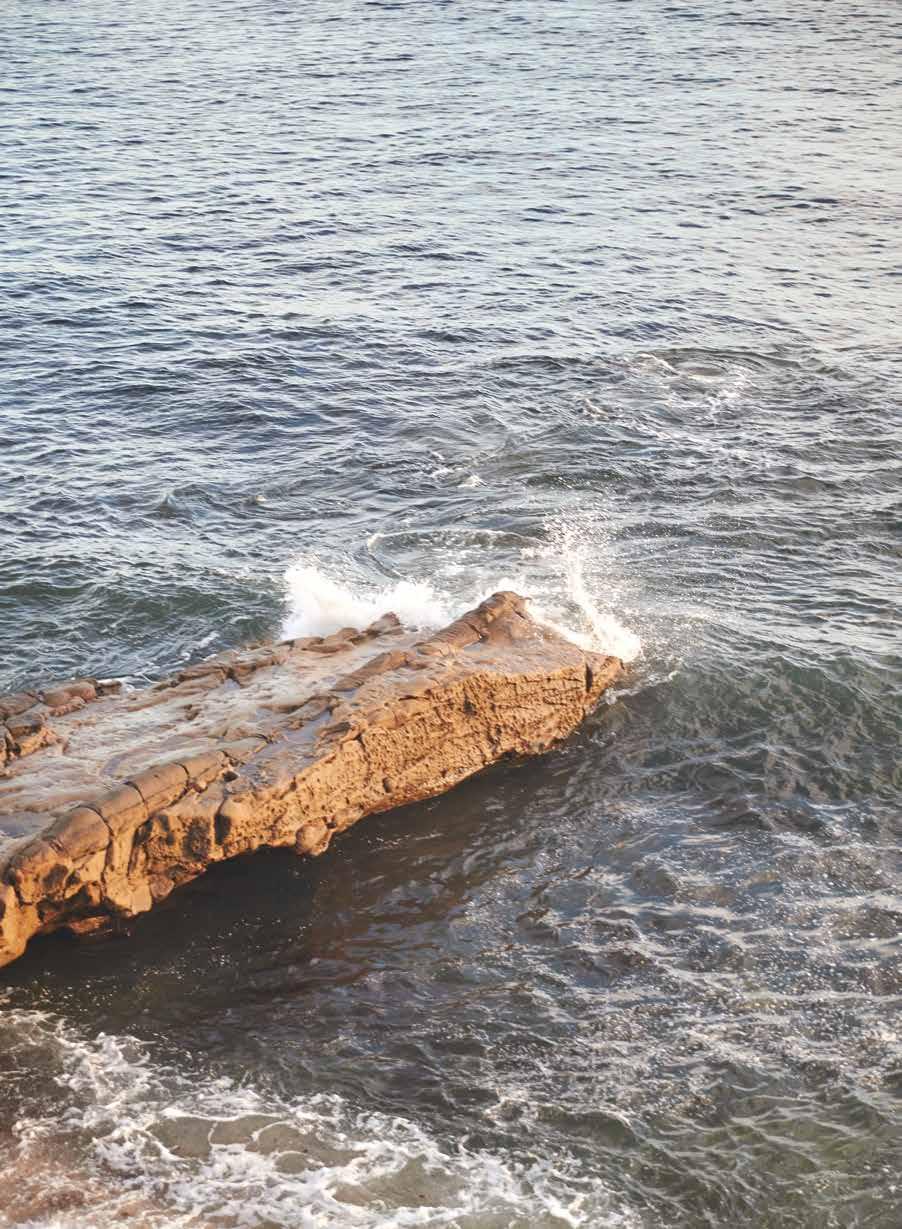
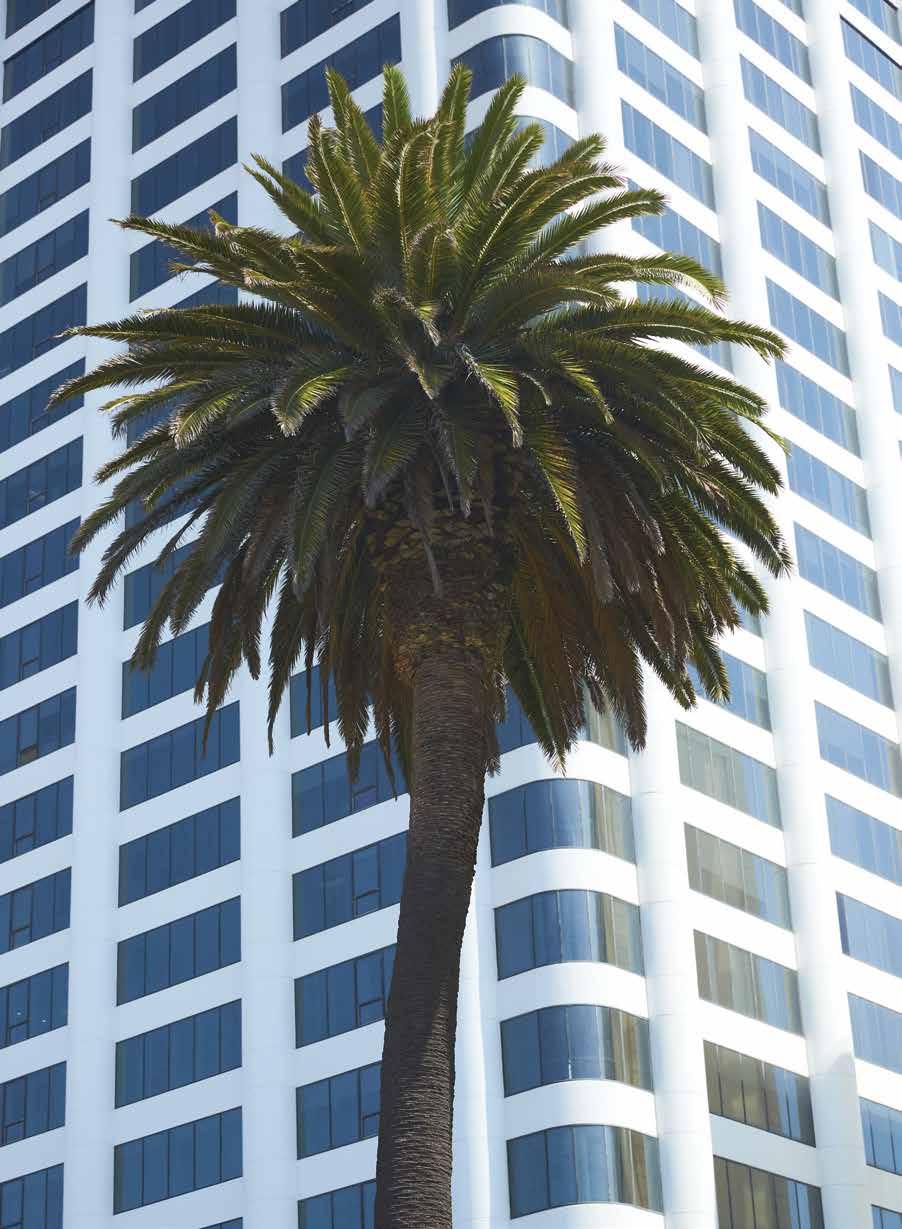
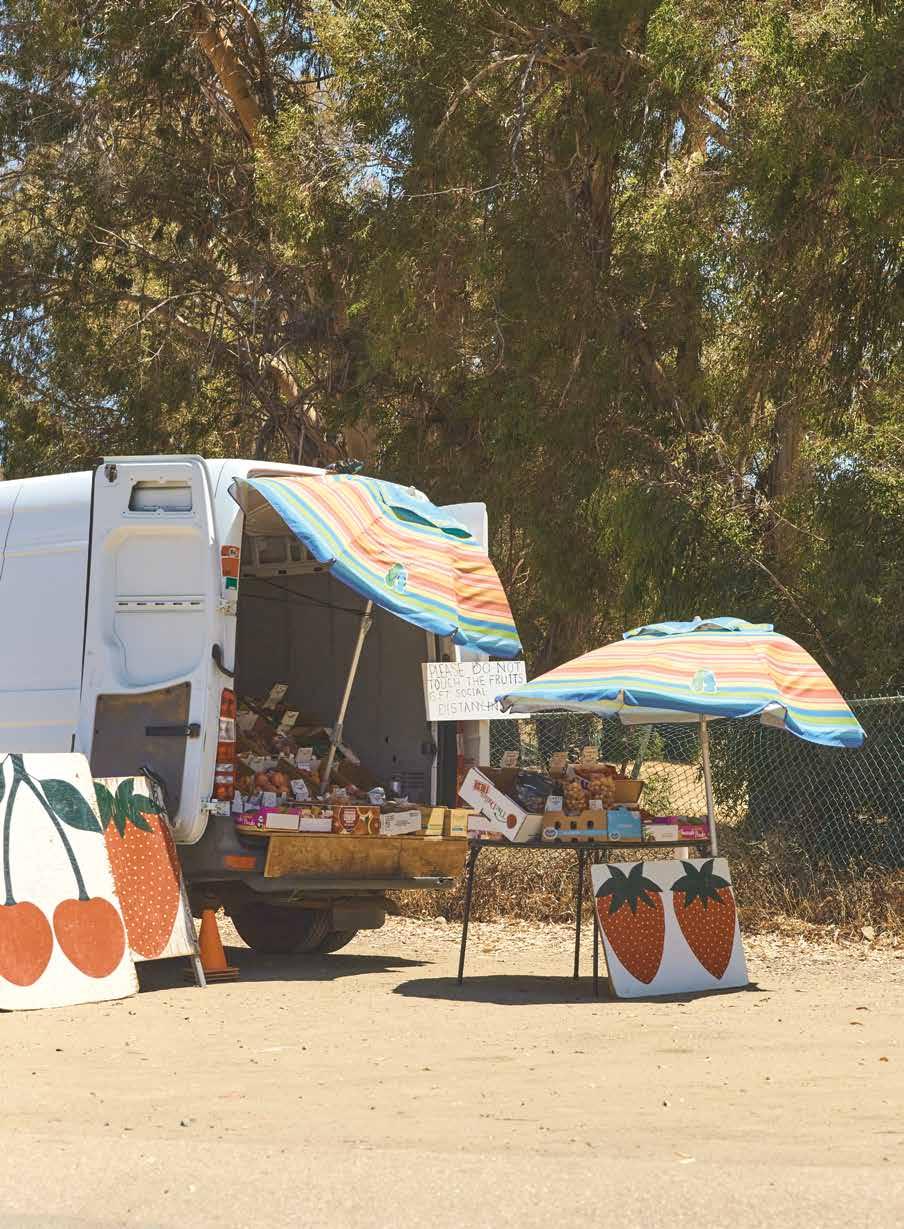

Soon, make a left onto Mulholland Highway. See those valley oaks? The plunging green canyons? Now you’re in the heart of Malibu Creek State Park, a sprawling site used as a movie set for classics like Planet of the Apes and Butch Cassidy and the Sundance Kid (This is Hollywood, so even the chaparral is famous.) Follow the squiggly bends of Mulholland Drive, or Cornell Road, or Las Virgenes Road. Take a wrong turn. Get lost. That’s kind of the point. Ultimately, they all lead back to the coast, so there’s no danger of going off track.
Looking to get your steps in? Follow Kanan Dume Road south until you come to Newton Canyon Falls. Easily accessed from the road, this serene trail is part of a 67-mile route that spans the length of the Santa Monica Mountains.
Once you’ve lived out your Steve McQueen fantasy knocking around in the canyons, head back to the PCH and take it all the way to County Line Beach, which sits at the western city limits of Malibu and is home to the best surf-watching this side of Waikīkī. Sitting on the sand as the sun goes down, take a moment to reflect on all the ground you covered. Or pull up a map and start plotting your next coastal adventure. There’s always tomorrow.
114
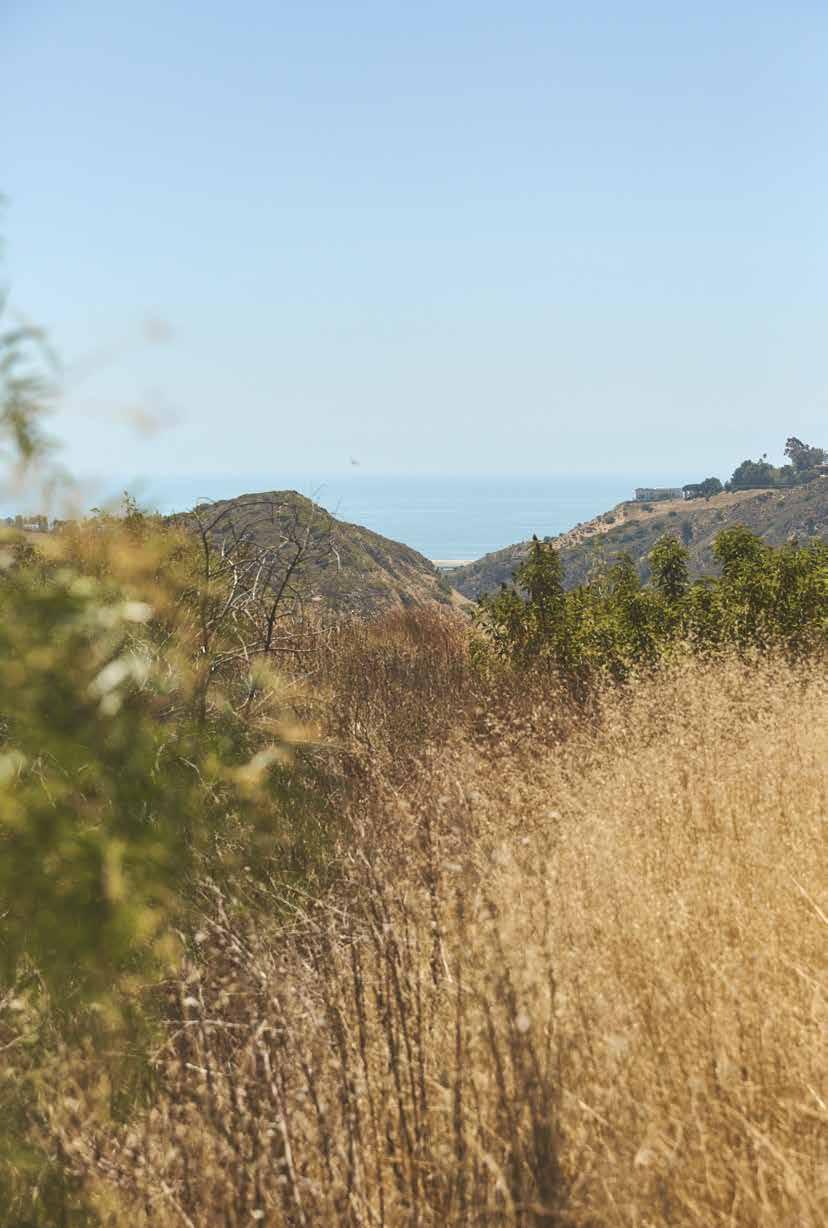
Franck Savoy is leaving a mark on the California food scene with his flair for the creative and a perpetual willingness to experiment. As Corporate Director of Food and Beverage for ETC Hotels, he embraces working with all his senses while leading his culinary teams in creating ocean-inspired flavor profiles for the restaurants at Shutters on the Beach and Hotel Casa del Mar.
The son of renowned French chef Guy Savoy, who is famous for exacting perfectionist detail on the plate at his Michelin star restaurants in Paris and Las Vegas, Franck measures success by the happiness of the people who come in seeking an elevated culinary experience. “It is very easy to attract a guest for the first time, but very difficult to make him come back,” he says. Wowing diners with dishes like Chef David Almany’s saffron linguine with sea urchin—served at 1 Pico—means staying on top of new techniques and ingredients and sparking new trends. Franck listens to his skilled staff and patrons, pays attention to what’s hot in
Franck Savoy helps create masterful culinary experiences with the same values as his Michelin-star father for guests of Shutters on the Beach and Hotel Casa del Mar.
116
ETC Hotels Corporate Director of Food and Beverage Franck Savoy with his son at 1 Pico. Through the years, Franck has found that passion motivates his team. “It is my job to transmit my passion to them,” he says.
text by Lindsey Kesel
On the Beat with Franck Savoy & Family
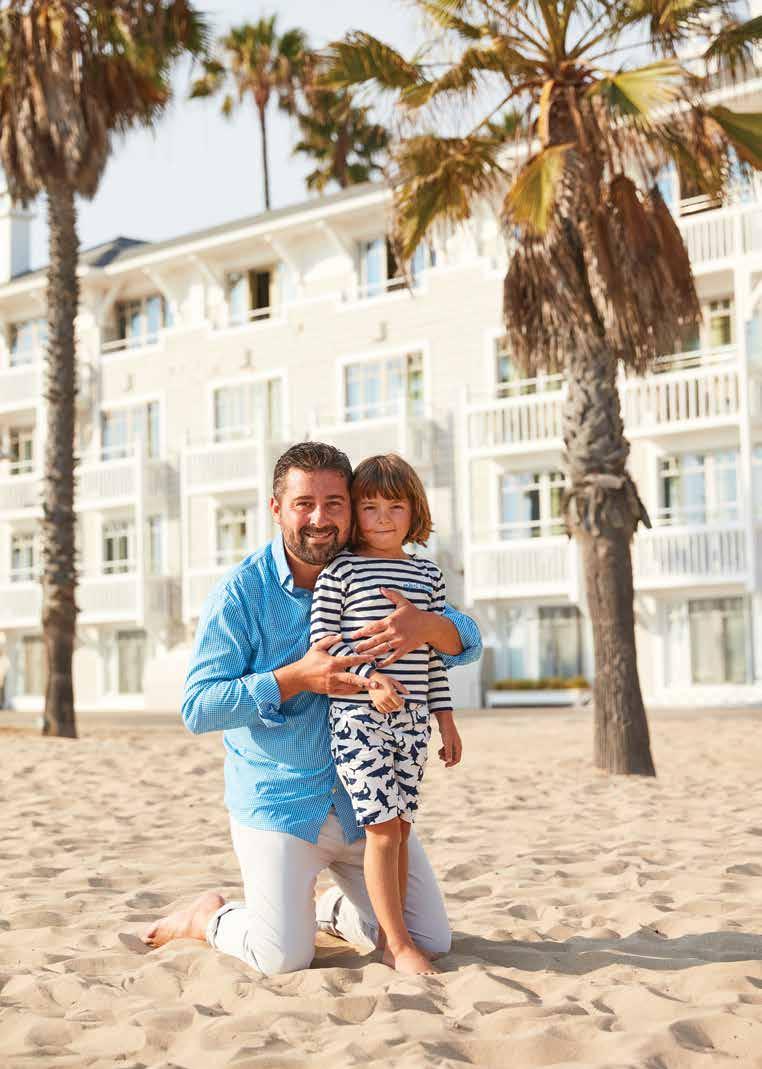
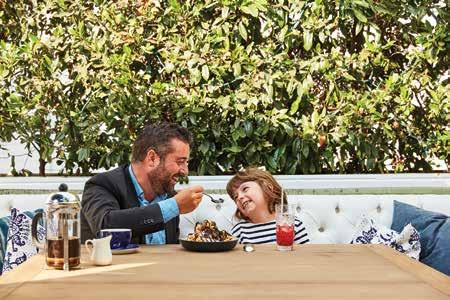
food when he travels, and keeps a finger on the pulse of social media. But for Franck, “if you use great ingredients and you respect the products, it can only be good.”
Perfection, excellence, and humility—values that Franck shares with his father—are also essential tools he applies in his work. While Franck’s family heritage is part of his success, he confesses it is hard to have a father like Guy, since even as a child, “you want to be at the level of your father,” he says. “His work ethic, his attention to details, his role in the kitchen as well as the dining room inspire me.” Franck is encouraging his own son to find a path separate from the culinary world, but as Franck himself says, “The apple doesn’t fall far from the tree.”
In the tradition of his dad, Franck Savoy shows up every day with the intent to guide his staff in eclipsing the culinary innovations of the day before. “We are here to sell dreams where the ‘no’ cannot exist, where ‘impossible’ is not part of our vocabulary,” he says. “We always figure it out.”
118

Inside their San Francisco headquarters, the brilliant minds behind Diamond Foundry have perfected the art and science of aboveground diamond creation. Lab-grown diamonds aren’t new, but until recent years, they haven’t been able to go toe-to-toe with mined diamonds in terms of gemstone quality and clarity. Not only are Diamond Foundry’s gems atomically identical to mined ones, they’re ethically sound—produced with zero carbon emissions and conflict-free.
At the company’s foundry in Wenatchee, Washington, the proprietary process begins with a tiny slice of one of its diamonds, which is placed within a plasma reactor that burns white hot, reaching 10,000 degrees Fahrenheit—the heat of the outer core of the sun—and in turn prompting carbon to form an intricate crystal lattice off the initial sliver, creating a one-of-a-kind diamond. The cutting-edge technology produces no carbon emissions, thanks to hydropower from the nearby Columbia River, and the entire company is carbon neutral, as it offsets any other emissions it creates.
A single Diamond Foundry gem is inspected 1,300 times to meet strict standards of quality. Every diamond can be traced back to the engineers who made it, and each is masterfully cut by fourth-generation diamond cutters and shaped by in-house polishers.
While Diamond Foundry has collaborated with luxury brands such as Balmain and Dover Street Market, its lasting gem is
its in-house brand, Vrai. Vrai is vertically integrated—a rarity in the jewelry world— which gives it total control from growing the diamond to the finished pieces. It uses recycled solid gold and recyclable packaging and aligns with partners who share core values of sustainability, transparency, innovation, and quality. Catering to individuality is also a big part of the company’s edge in diamond innovation. “We love to push the envelope,” says Ye-Hui Goldenson, Director of Public Relations and Communications for Diamond Foundry and Vrai. “We can do a shield cut, half-moon cuts, hexagon cuts—shapes you don’t normally find—because some clients are looking for something more unique than the standard ‘round brilliant.’”
With its singular origin story and excellent quality, Diamond Foundry diamonds make a statement and an impact. Diamond Foundry has drawn investors including Leonardo DiCaprio, and Vrai works with nonprofits Equality Now, Children’s Hospital Los Angeles, No Kid Hungry, and others to encourage positive change.
“Luxury doesn’t have to be something that is impacting the environment,” says Mona Akhavi, CEO of Vrai. “Luxury can be accessible, it can be special—a symbol of your values, and imbued with meaning.”
Learn more at diamondfoundry.com & vrai.com.
The world’s first and only certified carbon neutral diamond producer, Diamond Foundry’s pairing of innovation and traditional technique yields gorgeous rewards.
120 text
image courtesy of
Sustainable Sparkle
by Lindsey Kesel
Diamond Foundry

The spaces we inhabit during our great escapes should blend the novel with a dash of the familiar. Fine-art advisor Cynthia Greenwald let this notion guide her when choosing the art for Shutters on the Beach during its inception in 1993. She pored over the floorplan to bathe the walls of the luxury beach house retreat in contemporary works that would enhance the guest experience. Ultimately, she went with artists that were at the top of the genre and images that were at once “comfortable, familiar, and elegant.”
The Shutters collection embodies the carefree spirit of a day at the beach, and showcases heavyweights of contemporary art, including Ellsworth Kelly, Roy Lichtenstein, Jasper Johns, Yayoi Kusama and David Hockney. “I wanted recognizable imagery by blue-chip artists, so when guests walk in, they feel at home,” Greenwald says.
Mirroring the beauty of the Southern California coast, the 28 works of art on display at Shutters are conversation pieces marked by an element of curiousness: the simplicity
of the Walt Disney Concert Hall one-color lithograph by its L.A. architect Frank Gehry; the Hollywood glam of Richard Hamilton’s “My Marilyn,” a silkscreen picturing Marilyn Monroe posing for a photo shoot; the oddity of Claes Oldenburg’s “Slicing Strawberry Shortcake,” an etching of a giant slice of cake lazily floating down a river.
Greenwald regularly adds new pieces or reconfigures the collection with the aim of balance. Her most recent acquisition is “Coca Cola Girl 1” by New York pop artist Alex Katz, who pioneered the iconic “flat pop” painting style. For this nostalgic lithograph of a blonde model in a white swimsuit against a cherryred backdrop, Greenwald found a spot in Shutters’ lobby area, just outside the sundry shop—so perfect, she says, it seemed as if “Coca Cola Girl 1” belonged there from day one: “She’s so vibrant.”
To learn more about the Shutters on the Beach art collection, contact Cynthia Greenwald at (310) 433-9310 or cynthia@artbuyer.biz.
The contemporary art inside Shutters on the Beach is a curated collection of Southern California-inspired, leisure-enhancing creations from masters of their craft.
122
“Coca Cola Girl” (2019), color silkscreen on Saunders Waterford 425 gsm paper by Alex Katz (born 1927), courtesy of Lococo Fine Art Publishing
text by Lindsey Kesel
Escape Artists
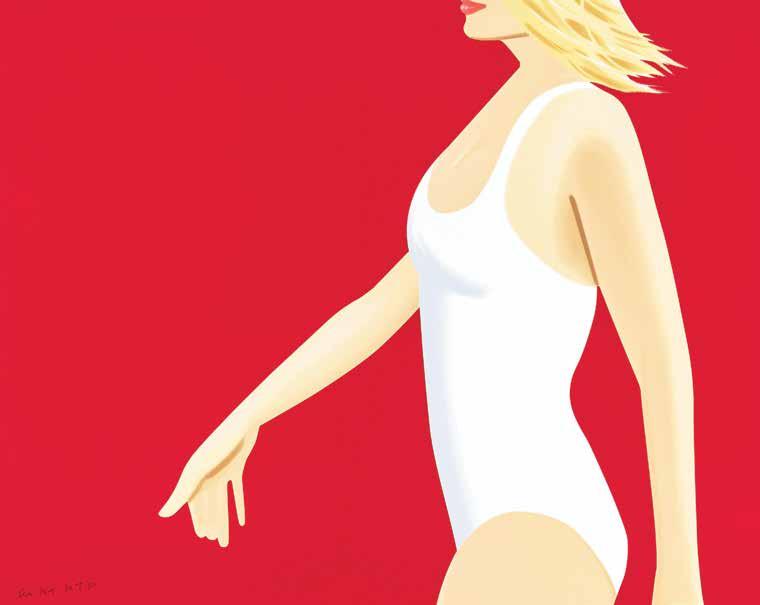
When the opening team at ETC Hotels was envisioning their debut property on the sand in Santa Monica, everyone agreed on one key point: It must not feel like a hotel at all. In fact, they thought, perhaps it should not sound like one either ... and Shutters on the Beach was born.
“Our primary objective has always been for every guest who enters to feel at ease and be taken care of as though they entered their friend’s luxury beach house,” explains Vice President and Managing Director Klaus Mennekes. “Our second objective? Creating memorable experiences for our guests.”
Memorable it is. From the attentive staff to the residential interior design to the abundance of al fresco spaces, Shutters perfectly blends the coastal sensibilities of Nantucket and California.
It is difficult to pinpoint which of the hotel’s distinctive qualities catapulted this boutique, family-owned hotel into iconic status (besides its drop-dead views of the Pacific). Perhaps it is the unpretentious service, frequent celebrity sightings, or glorious sunsets. The owners, brothers Edward and Thomas Slatkin (the E and T in ETC Hotels), believe it is their simple mantra: Take care of your guests and your staff, and you will have a great hotel.
As the times and consumer needs change every nanosecond, ‘taking care’ of people can be a tall order. This is where Shutters shines. As Santa Monica Beach flows into Silicon Beach, the exclusive enclave continues to offer both timeless and timely experiences. It also boasts a dedicated staff, many of whom have been working at Shutters since the hotel opened.
Most of the three generations of travelers who visit Shutters rely on the ability to combine work and play on the road. Shutters’ relaxed coastal location and its staff’s business savvy are perfect for a mobile lifestyle. ONE the Spa at Shutters* also offers the latest in age-defying facials (for Instagram-ready skin), invigorating body scrubs, spray tanning, and massage enhancements like CBD for ridding your muscles of stress.
Within view of the ocean are Shutters’ three restaurants*: 1 Pico, Coast Beach Café and Bar, and The Living Room, which is famous for its outdoor terrace (an insider’s favorite spot for sunset). California farmers markets bring local land and sea specials weekly, with vegetarian and even gluten-free options.
As welcoming as Shutters is, most who travel to Southern California long to be outside. Embracing one’s inner wanderlust is easy here. Guests simply swing by the Beach Concierge and pick out their preferred mode of beachside transport, from bikes to surfboards. There are miles of paths for cruising and limitless waves to ride.
*Due to COVID-19 restrictions, please inquire with a concierge if ONE Spa or the indoor restaurants at Shutters are open prior to visiting.
Shutters on the Beach was dreamed up with a simple goal in mind: for it to not feel like a hotel at all.
124
text by Armella Stepan
Oceanfront Luxury
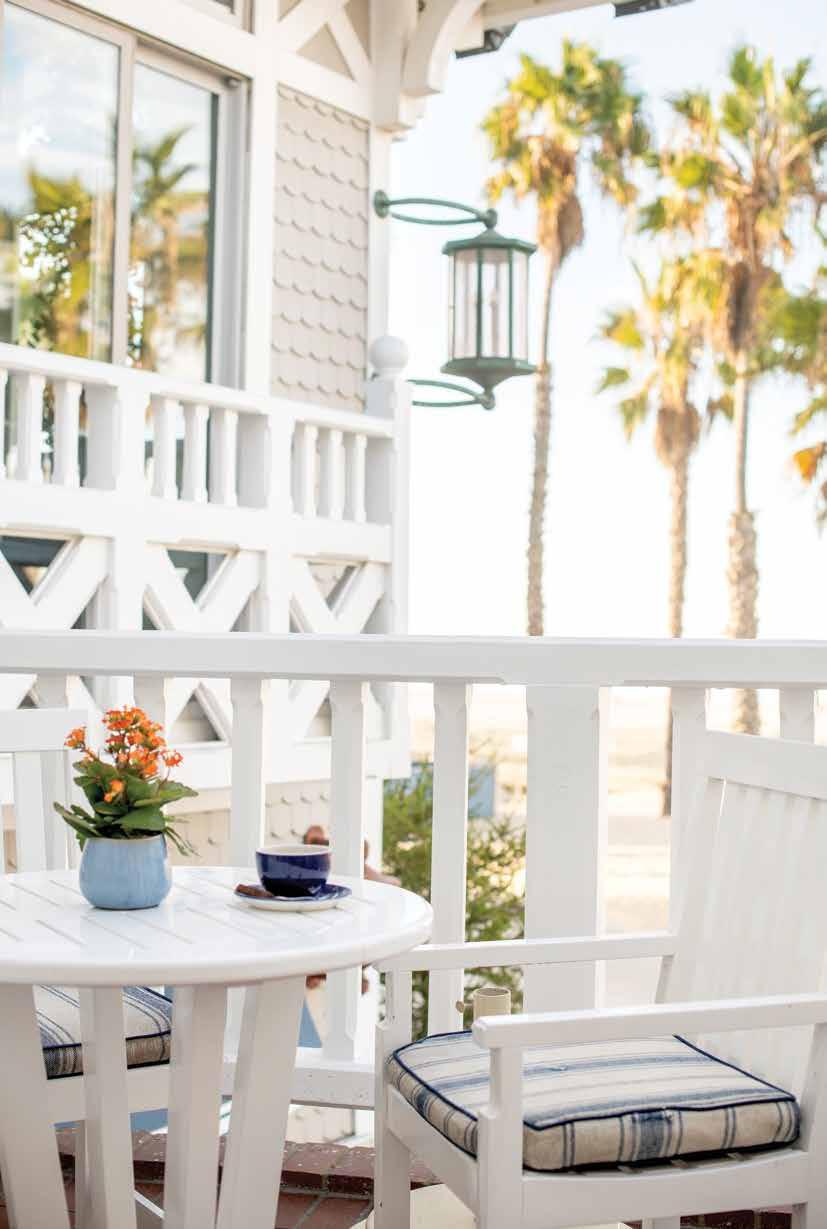
Gaze upon Hotel Casa del Mar’s Italian Renaissance-style façade and you might be surprised upon entering. Inside is an aweinspiring ambiance that starkly contrasts its traditional exterior. The decor is a welcome mix of colorful, relaxed, and stylish California Coast flair.
Originally constructed in 1926 as one of the most opulent beach clubs in the country, today it welcomes a diverse mix of Hollywood A-listers, Silicon Beach entrepreneurs, and those who crave luxury, privacy, and ocean breezes.
Casa’s entry is an eclectic mix of Spanish tile, stained glass, contemporary mosaic art, and dual grand staircases. As you ascend, your eyes are immediately drawn into the sunlight-filled lobby with its palette of oceanic blues and greens. Subtropical trees and plants complement the soaring ceilings, as does a 100-foot wall of two-story windows overlooking the Pacific Ocean.
Along these windows is where you will find the hotel’s signature restaurant, Catch*, featuring farm- and sea-to-table specialties, an extensive wine list, and stunning coastline views. Adjacent to Catch, with the same drop-dead vistas, is Terrazza Lounge*, the local favorite spot for sunsets, craft cocktails, tapas, and live music. Recently, Terrazza even “popped up” a beachside patio, to rave reviews. Set outdoors alongside the Santa Monica Beach promenade, this lovely loggia transports you to the Iberian Peninsula with its architecture, sea air, and Mediterraneanmeets-California all-day menu.
Hotel Casa del Mar’s guest rooms, suites, and two-story penthouses also feature sweeping view s that trace the shoreline from Palos Verdes to Malibu. Designed for comfort and indulgence, each has thoughtful touches including co astal art from local artists, a personal library, luxurious linens, and even a playful rubber duck on inviting hydrotherapy bathtubs.
On the fourth floor, you will find the ohso-private SEA Wellness Spa and Salon*. There you will discover the latest in ageand stress-defying treatments such as Hydrafacials and CBD massages.
The hotel’s crowning glory is the Palm Terrace Pool, which overlooks the ocean from its fifth floor perch. With views from the Santa Monica Pier to the Catalina Islands, it’s a wonderful spot to welcome the day, while away the afternoon, or soak up the sunset.
“For me, Hotel Casa del Mar is the consummate California experience of laidback luxury,” explains General Manager Charlie Lopez-Quintana. “Our style of service and thoughtful amenities truly make you feel at home, or as I like to say: Mi Casa es su Casa.”
*Due to COVID-19 restrictions, please inquire with a concierge if the SEA Wellness Spa or the indoor restaurants at Hotel Casa del Mar are open prior to visiting.
With its Mediterranean meets Coastal California ambiance, Hotel Casa del Mar is a contemporary haven that brings the ocean inside.
126
text by Armella Stepan and Lindsey Kesel
The Casa Journey
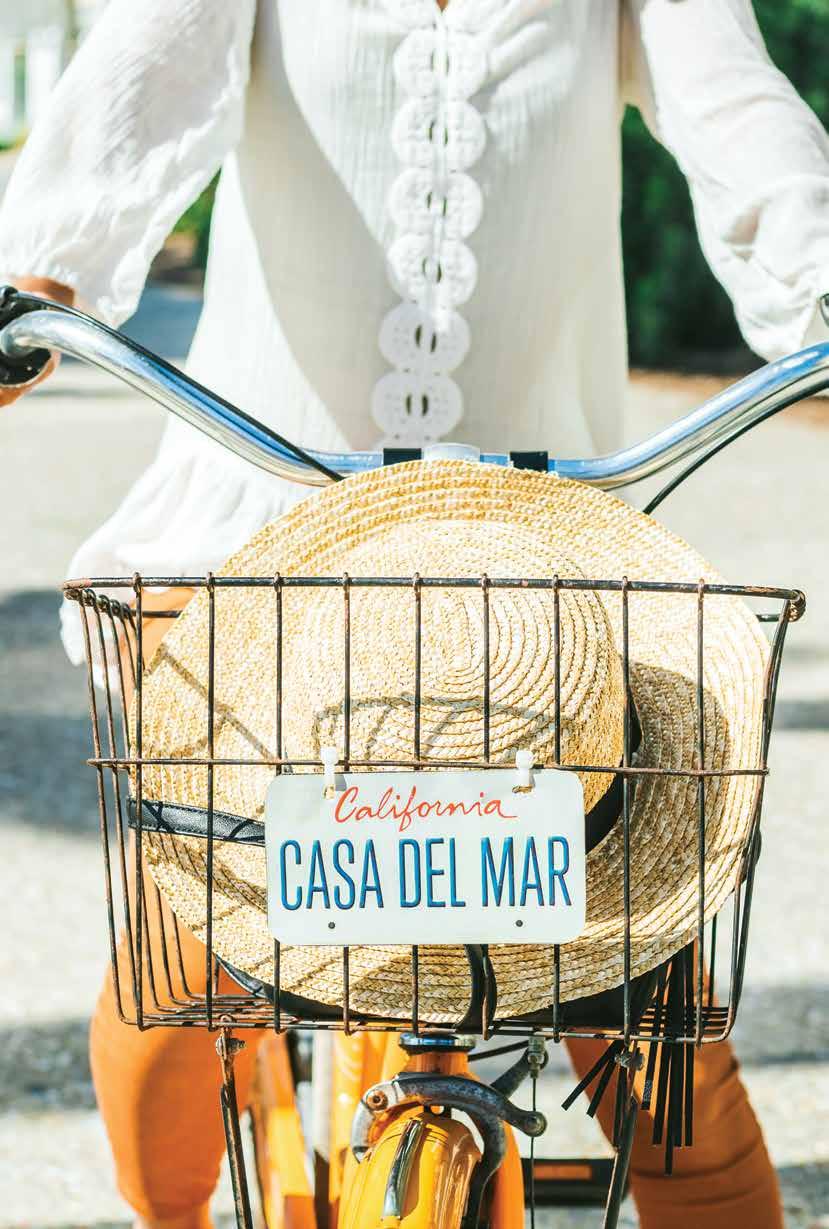
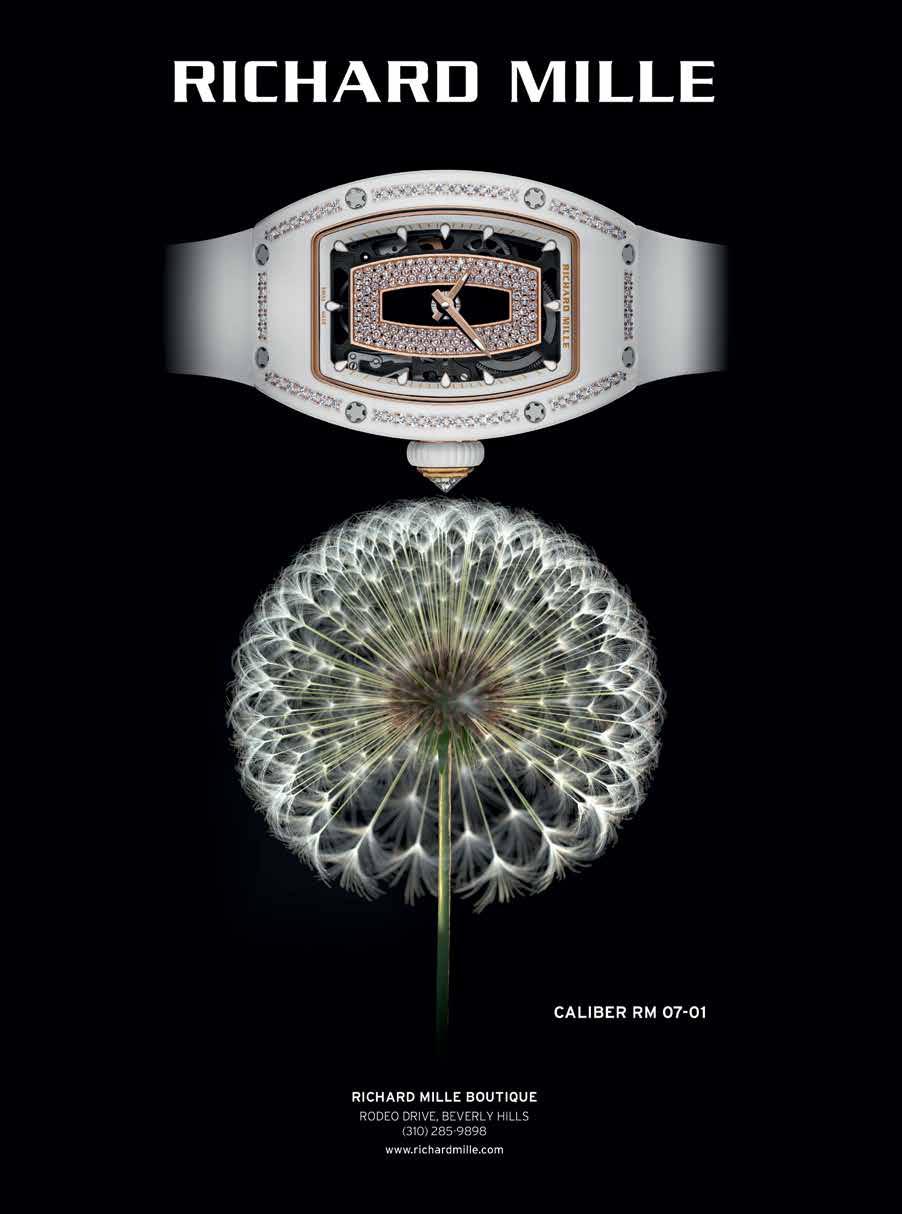

















 image
by Cody James
image
by Cody James












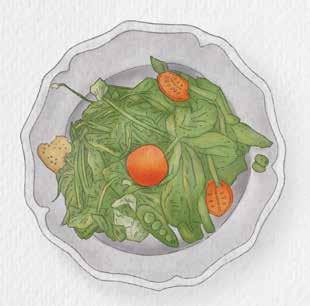
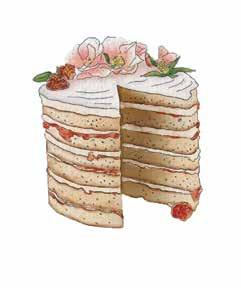 GJUSTA
SWEET LAUREL
GJUSTA
SWEET LAUREL
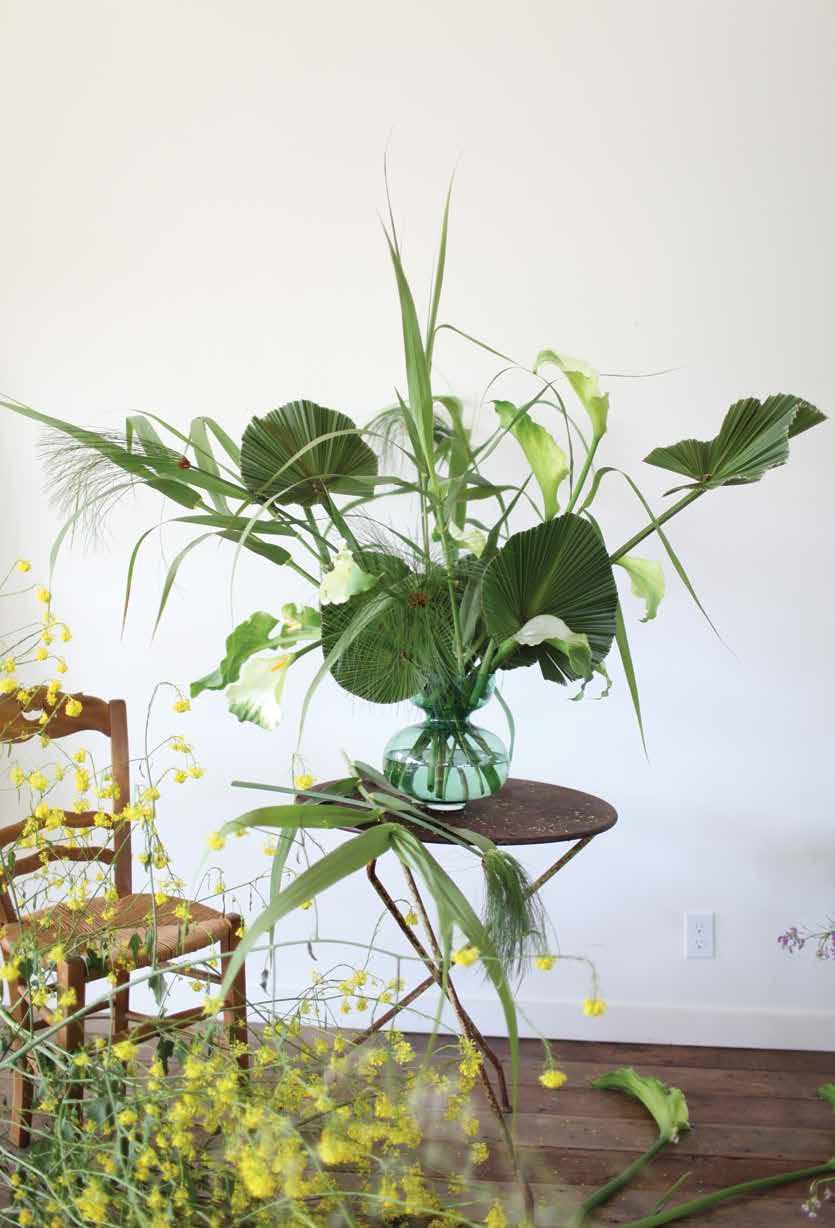

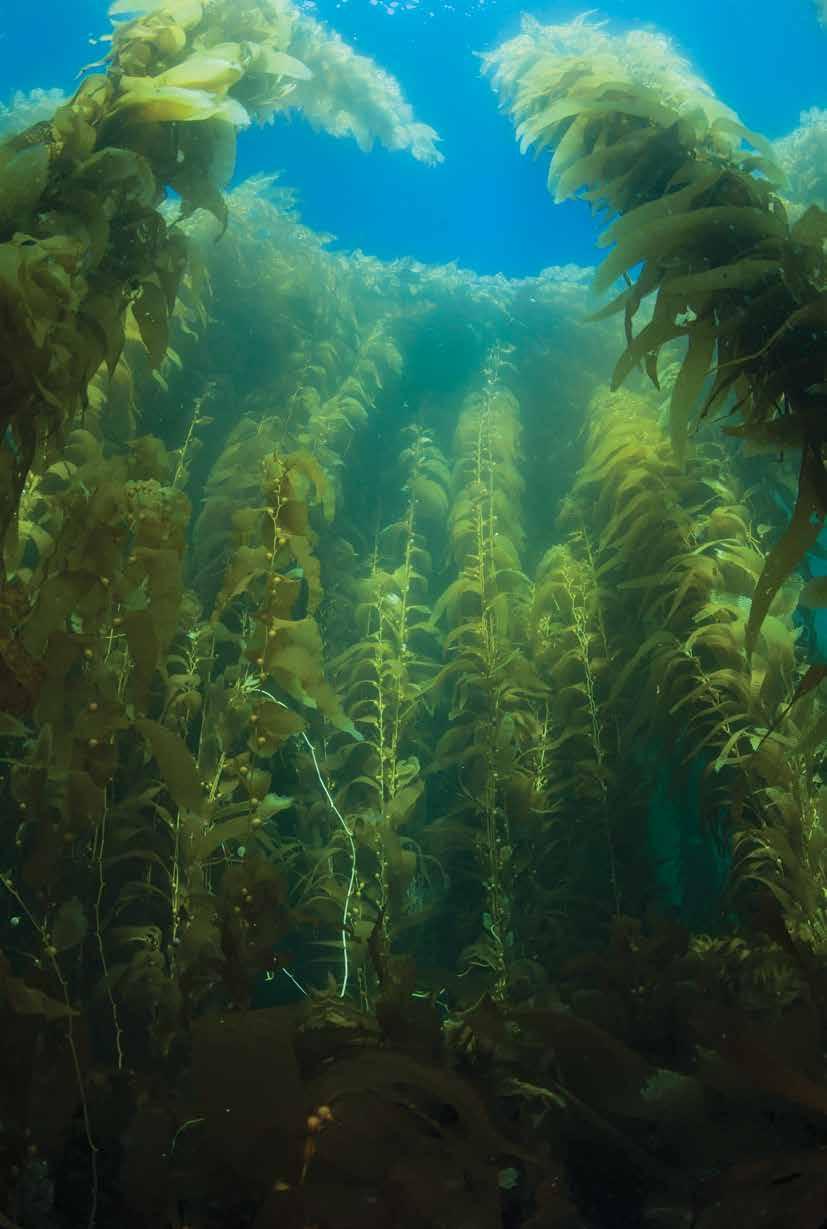
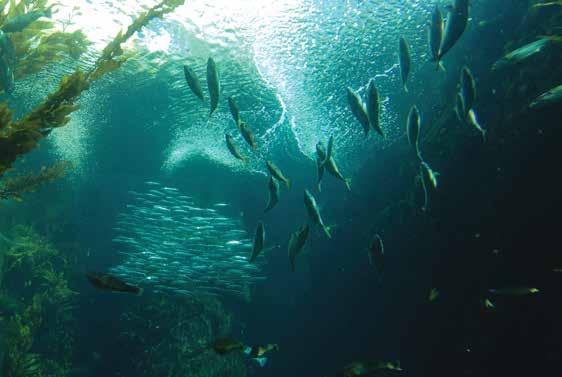
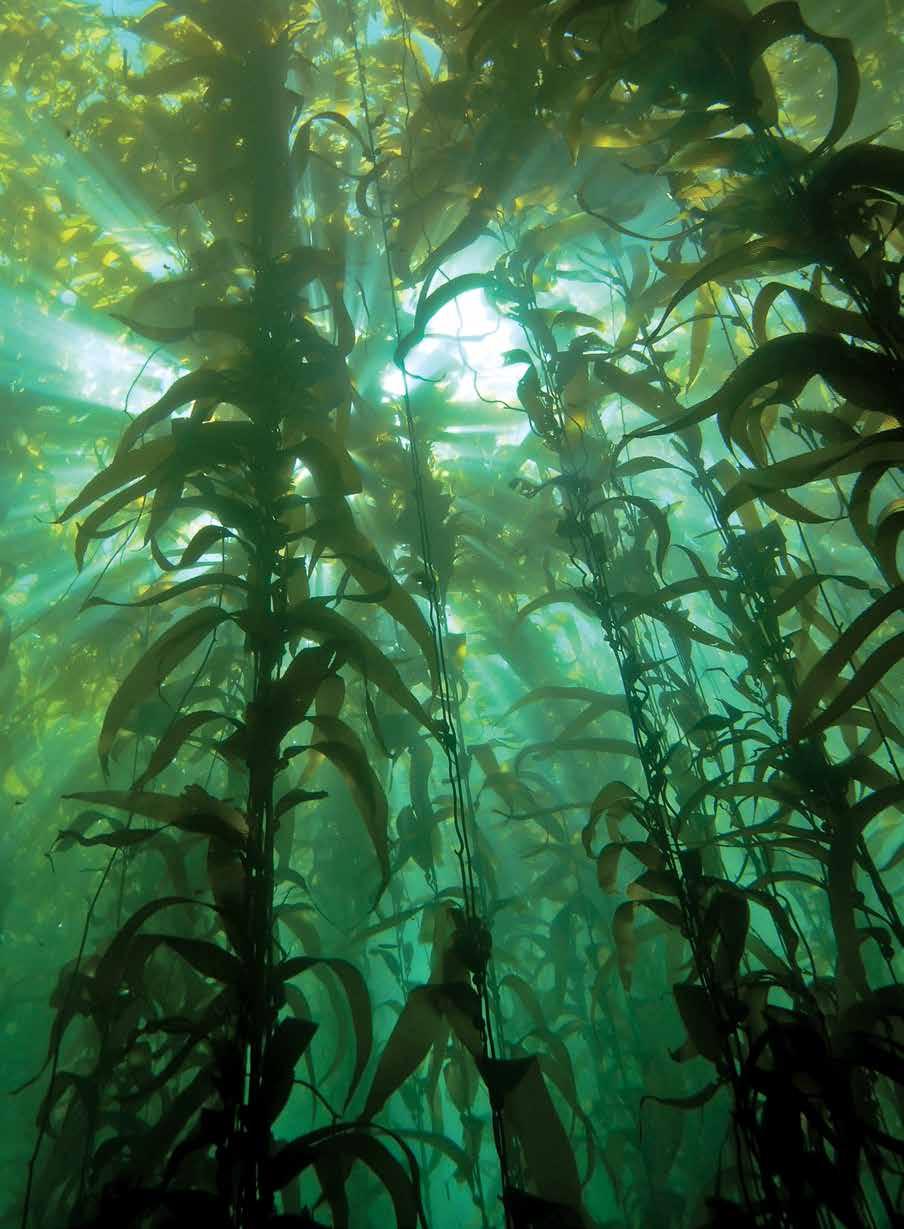


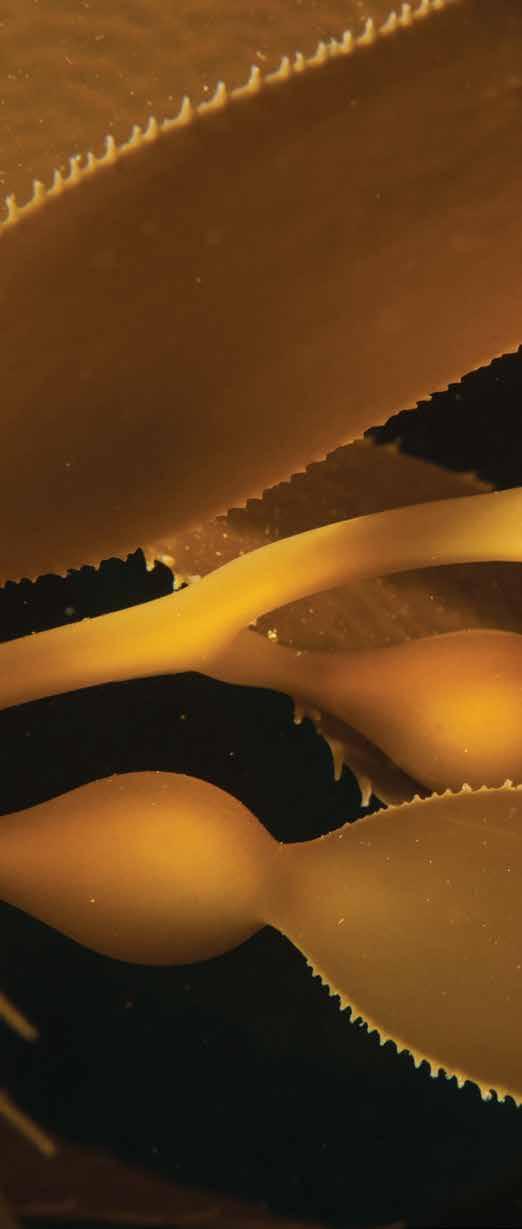 Pneumatocysts of giant kelp keep it upright and float fronds on the ocean surface. On the previous spread, scientific divers volunteering for The Bay Foundation help with urchin culling efforts.
Pneumatocysts of giant kelp keep it upright and float fronds on the ocean surface. On the previous spread, scientific divers volunteering for The Bay Foundation help with urchin culling efforts.

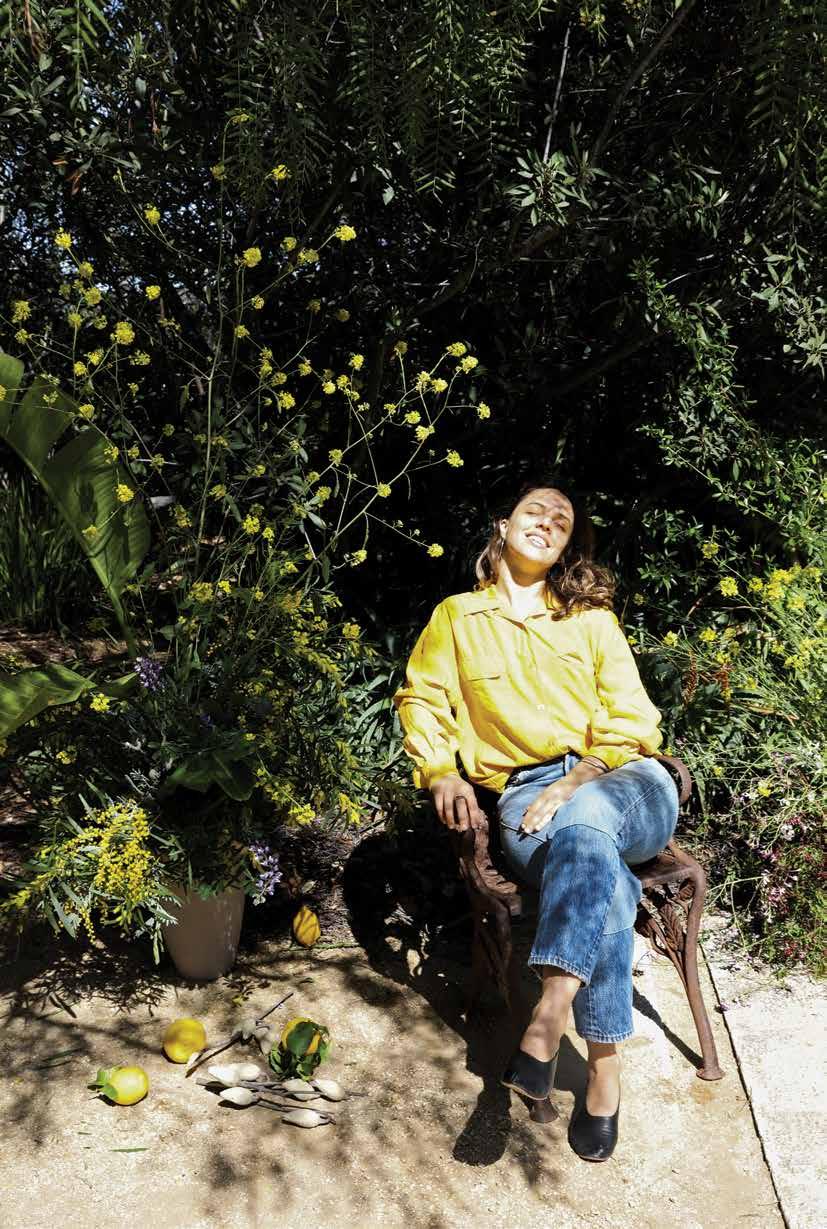
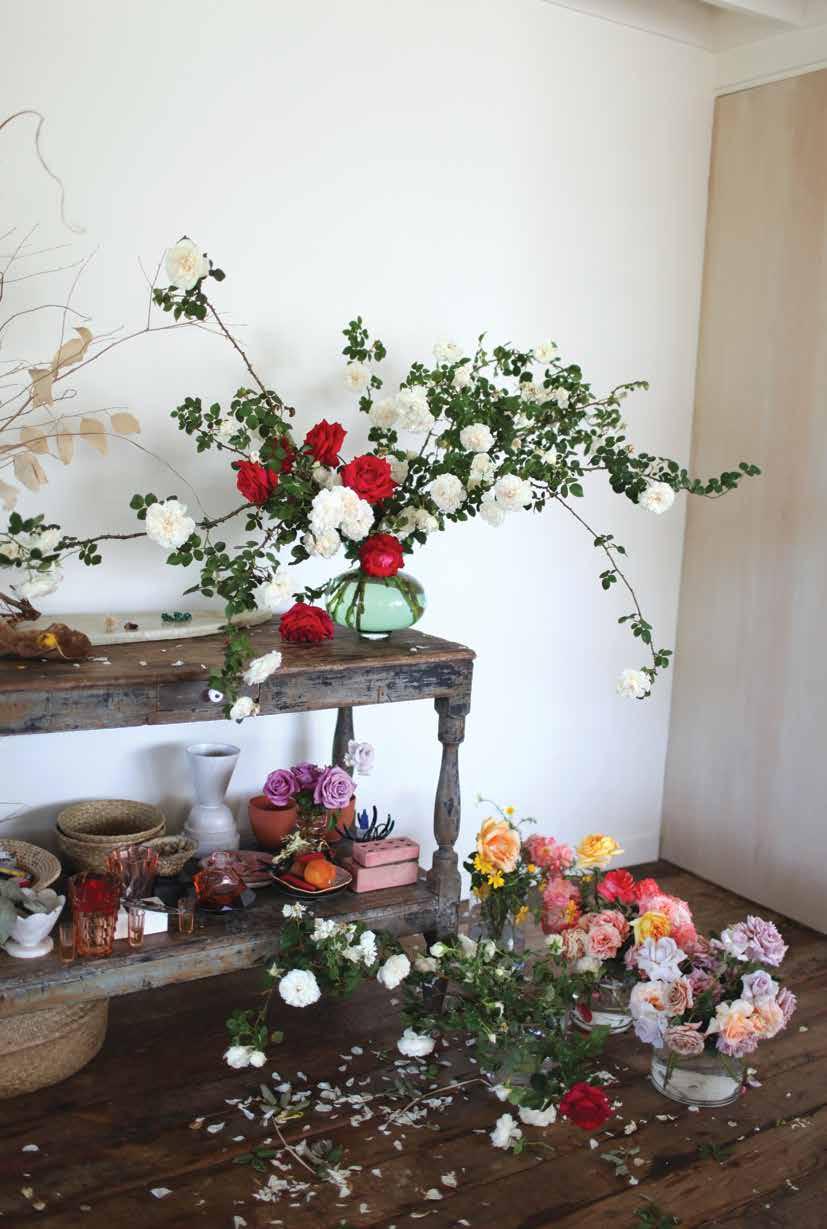
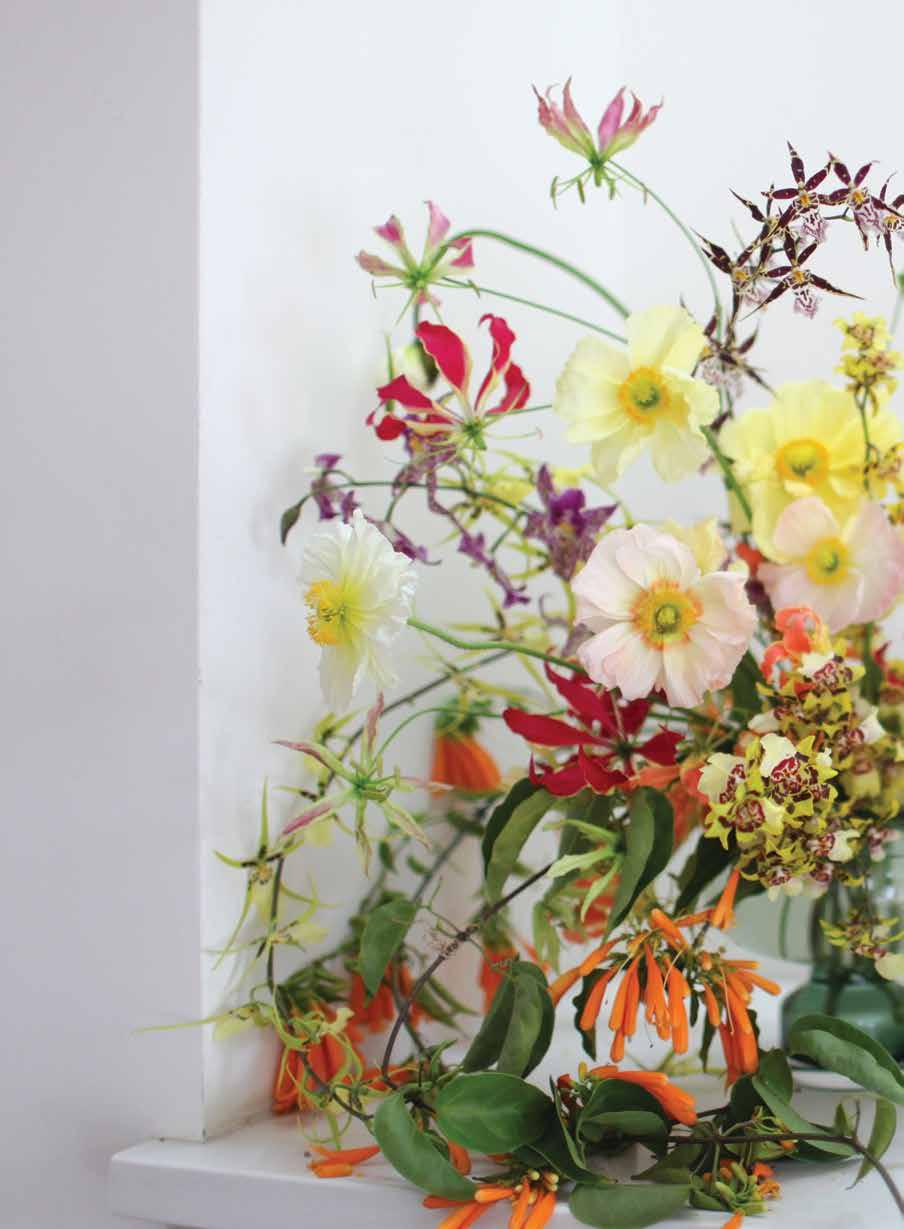
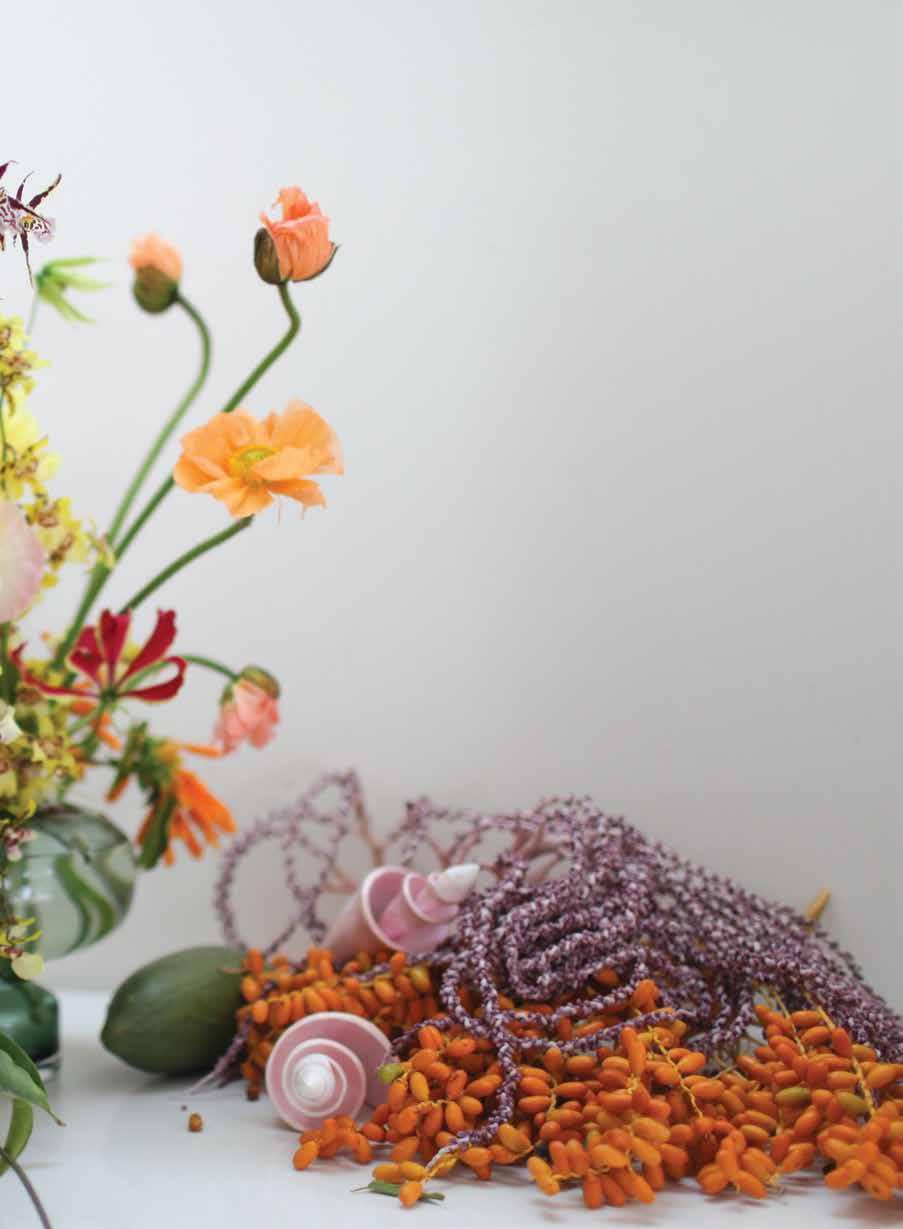
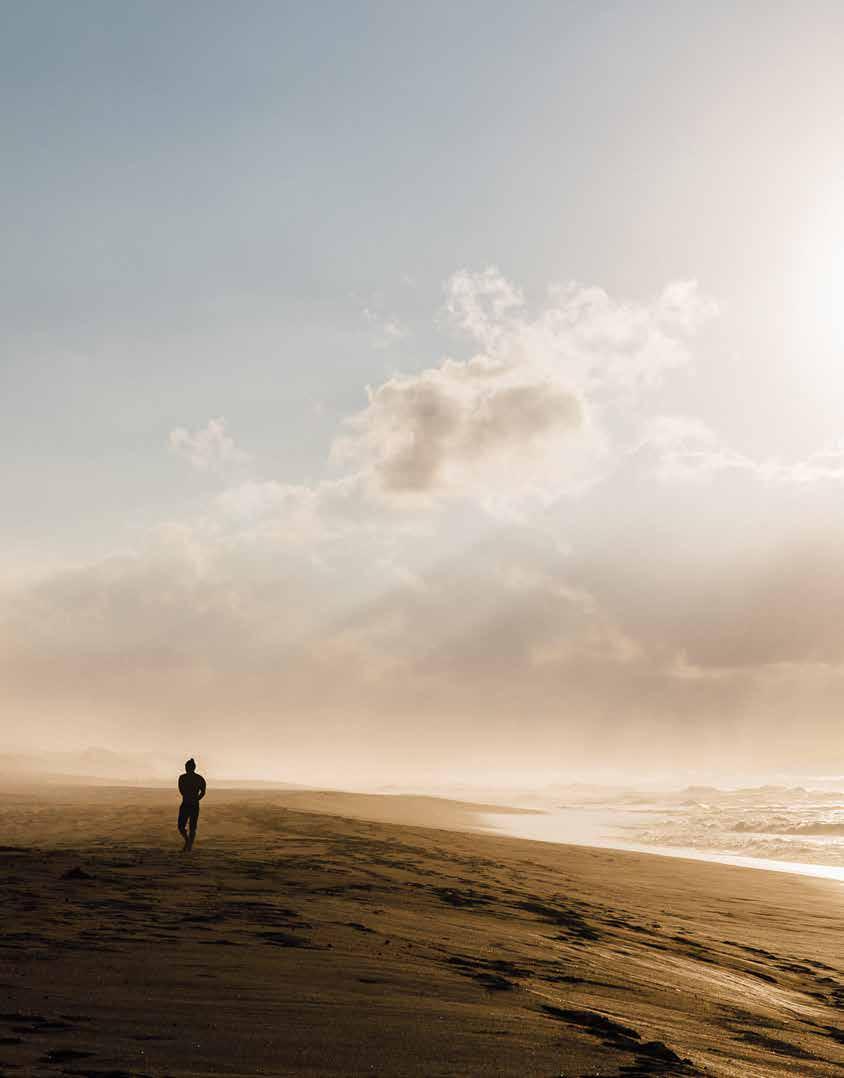
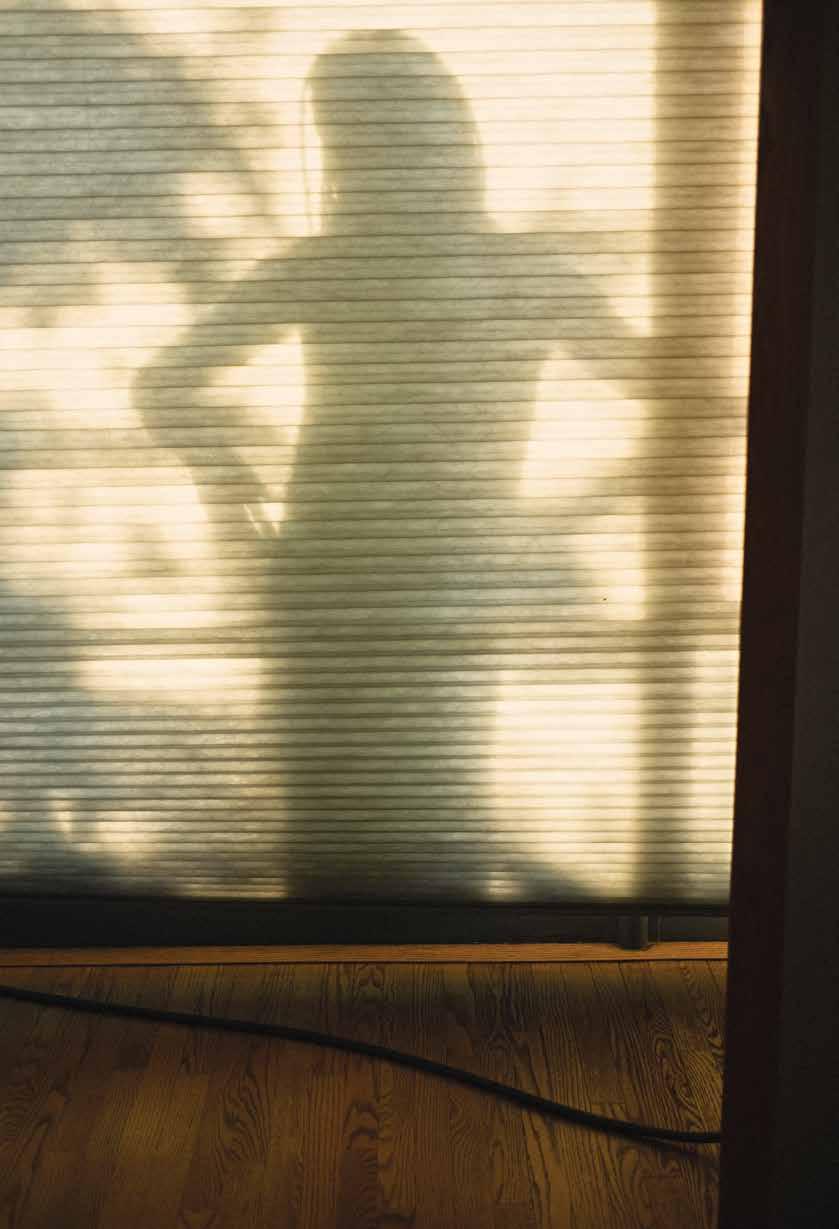













 The Walt Disney Concert Hall is arguably Gehry’s most famous
creation.
The Walt Disney Concert Hall is arguably Gehry’s most famous
creation.


































